
































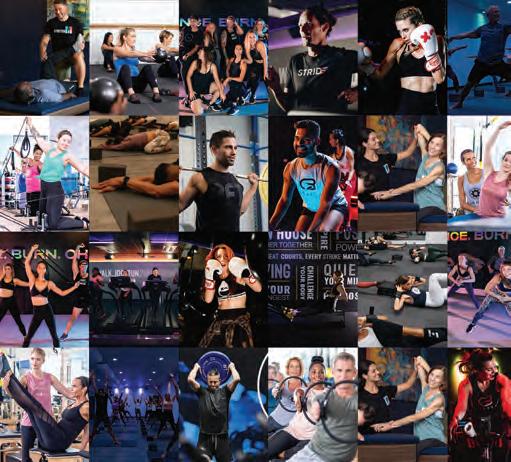
2,850+
Xponential Fitness (NYSE: XPOF) is the largest global franchisor of boutique fitness brands. The company operates a diversified platform of ten brands spanning across verticals including Pilates, barre, cycling, running, rowing, dancing, stretching, boxing, yoga, and functional training.
Xponential’s leadership team has decades of experience in fitness and wellness franchising. We have the network, resources, platform, and playbook in place to ensure continued growth and expert support every step of the way.
ensure




Proven Marketing & Sales Systems that Harness a Recurring Revenue Model
Exceptional Franchisee Support from the Minute Agreement Signed
Resources & Network to Ensure Continued Growth & Support
Exciting? Confusing? Full of opportunity? Like nothing we have ever seen? Across 20 pages, we tell you what’s coming—and how to prepare now.

You Don’t Need a Mission...Yet Lessons for tomorrow’s mission-driven companies, from Patagonia’s director of philosophy.
A Third Way to Work? It’s not the office. It’s not work from home. It’s something else— and take it seriously.
BOOK IT
The Geisel Library at the University of California San Diego, one of the schools on our Top Schools for Entrepreneurs list.

16 The Best ‘Bad’ Things
Have people said you’re too outgoing? Or too shy? Or too demanding? Here’s why your “worst” traits might really be your best.
8 In Memory of My Dad
Peter Shea built Entrepreneur into what it is. Here’s how. by
RYAN SHEA
11 Side Hustle School
Morgan DeBaun turned her side hustle into a big media company called Blavity. Here’s her advice on how to go all in. by NICOLE
LAPIN
18 Therapy Helped Him Be a Better Leader
To grow his company, he first needed to understand himself. by ANDREW BLACKMON
22 The Best Ad Ever?
We used the latest scientific research to create a fake ad. What do you think? by THOMAS MCKINLAY
24 The Best Tech for Work
Five new gadgets to help you improve your workflow and boost productivity by MARIO ARMSTRONG
26 I’m a Loser, Baby
Do you keep losing your workplace conflicts? Here’s a much better way to approach them. by AMY CHAMBERS

83 The 100 Top Schools for Entrepreneurs
Our annual ranking, produced in partnership with The Princeton Review.



Are You Living a CEO’s Life of Climb?


Take your business to new heights with an elite team of peers

The hardest climb is not Denali, K2 or Everest. The hardest climb is the mental climb, the internal struggle. It lies deep within you as a CEO or business owner. And to break new ground, you have to show up big every day — especially when the headwinds are strong and uncertainty lies around every bend.
Living a Life of Climb demands your best. It requires resourcefulness and the courage to make tough decisions. It calls for a relentless drive to push forward past every challenge and obstacle. It means you lift as you rise to elevate everyone around you along the way.
Peak Performers Don’t Climb Alone
As the world’s largest CEO peer advisory and executive coaching organization, Vistage has helped guide high achievers along their leadership journey for 65 years — brave leaders running small and midsize businesses against all odds. They climb with a trusted team of peers and an accomplished guide who knows the lay of the land. It’s a proven approach that’s helped 100,000+ business leaders around the world plant flags on their greatest dreams and ambitions.
If you’re ready to reach new summits in business and in life, the path starts here.
JOIN THE CLIMB
Learn more at Vistage.com/iClimb
115 What Was Missing
How a traveling real estate broker saw a big opportunity—in pizza? by CARL STOFFERS
118 Mental Health as a Franchise?
How Ellie Mental Health is creating a new market. by CARL STOFFERS
120 How He Does $11 Million In Sales
Secrets of a top franchisee by KIM
KAVIN
122 Looking for Growth?
Why these franchise categories could be super profitable. by KIM
KAVIN
136 The Top 10 Franchise Categories of 2024
Our prediction for the hottest industries next year, and the brands you can buy in them.
153 Top Franchises for Veterans
Our list of the most welcoming brands.
168 What Inspires Me
How my mentor helped me bring more humanity to work. by SALLY
JOY WOLF
→ PITCH OUR INVESTORS TO BE ON ENTREPRENEUR ELEVATOR PITCH
We welcome founders who have scalable products or services that are ready for investment, and who have a specific plan for how that investment can help them grow. APPLY TO BE ON THE NEXT SEASON: ENTM.AG/EEPAPPLY
November-December 2023

→ ASSEMBLING THE FUTURE Patagonia’s team piecing together a project at the Forge, its advanced R&D facility. P.46





























































EDITORIAL
MANAGING EDITOR Monica Im
SPECIAL PROJECTS EDITOR Tracy Stapp Herold
COPY CHIEF Jessica Levy
RESEARCH Andre Carter, Eric White
SPECIAL PROJECTS COORDINATOR Jordan Hall
INTERN Andrew Robinson
CONTRIBUTING EDITOR Liz Brody
CONTRIBUTING WRITERS Mario Armstrong, Andrew Blackmon, Amy Chambers, Kim Kavin, Nicole Lapin, Yiren Lu, Thomas McKinlay, Martine Paris, Gleb Tsipursky, Sal Vaglica, Sally Joy Wolf
ENTREPRENEUR.COM
EXECUTIVE EDITOR Brittany Robins
DEPUTY DIGITAL EDITOR Melissa Malamut
SENIOR DIGITAL CONTENT DIRECTOR Jessica Thomas
ENTREPRENEUR STUDIO DIRECTOR Brad Gage
DIRECTOR OF EDITORIAL SUBSCRIPTIONS Caroline Olney
SENIOR BUSINESS EDITOR Carl Stoffers
EDITOR, CONTRIBUTOR NETWORK Maria Bailey
SUBSCRIPTIONS EDITOR Mark Klekas
CONTENT STRATEGY EDITOR Samantha Silverman
SENIOR NEWS WRITER Emily Rella
FEATURES WRITER Amanda Breen
NEWS WRITER Madeline Garfinkle
ASSOCIATE EDITORS, CONTRIBUTOR NETWORK
Chelsea Brown, Kara McIntyre, Micah Zimmerman
VIDEO INTERN Jake Shaw
RESEARCH INTERNS Brianna Hayden, Jennifer Natale
GREEN ENTREPRENEUR
EDITOR IN CHIEF Jonathan Small
PRODUCT TEAM
AD OPERATIONS DIRECTOR Michael Frazier
AD OPERATIONS COORDINATOR Daniel Belyaks
CHIEF TECHNOLOGY OFFICER Jake Hudson
VP, OPERATIONS Shannon Humphries
PROJECT MANAGERS June Munoz, Julianne Page
SENIOR ENGINEERS Jace Poirier-Pinto, Geoff Winner
ENGINEERS Angel Cool Gongora, Michael Flach, Abel Trotter
FRONT-END ENGINEERS Lorena Brito, John Himmelman
QUALITY ASSURANCE TECHNICIAN Jesse Lopez
ART DIRECTOR Christian Zamorano
SENIOR DESIGNER Jayla Buie
GRAPHIC DESIGNERS Andrew Chang, Isaac Contreras
DIGITAL MEDIA DESIGNER Monica Dipres
DIGITAL PHOTO EDITOR Karis Doerner
EDITOR IN CHIEF Jason Feifer
CREATIVE DIRECTOR Paul Scirecalabrisotto
DEPUTY EDITOR Frances Dodds
PHOTO DIRECTOR Judith Puckett-Rinella
BUSINESS
CEO Ryan Shea
PRESIDENT Bill Shaw
CHIEF OPERATING OFFICER Michael Le Du
ASSOCIATE PUBLISHER/MARKETING Lucy Gekchyan VP, SPECIAL PROJECTS Dan Bova
PRODUCTION COORDINATOR Mackenzie Truman VP, NATIVE CONTENT Jason Fell
SENIOR INTEGRATED MARKETING MANAGER Wendy Narez
INTEGRATED MARKETING ASSOCIATE Ashleigh Dennis
SVP, INNOVATION Deepa Shah
PRODUCT MARKETING MANAGER Arnab Mitra
MARKETING COORDINATOR Chris Desrosiers
SENIOR MARKETING MANAGER Hilary Kelley
SENIOR DIGITAL ACCOUNT MANAGER Jillian Swisher
DIGITAL ACCOUNT MANAGER Michelle Gaudy
BUSINESS DEVELOPMENT
VP, BUSINESS DEVELOPMENT Charles Muselli
GM, CONTENT SYNDICATION Matt Goldstein
BUSINESS DEVELOPMENT ASSOCIATE Michelle Buzga
ENTREPRENEUR BOOKS
VP, ENTREPRENEUR BOOKS Sean Strain
SOCIAL MEDIA
VP, SOCIAL Sana Ali
SOCIAL MEDIA SENIOR MANAGER Kennadi McCoy
CUSTOMER SERVICE entrepreneur.com/customerservice
SUBSCRIPTIONS subscribe@entrepreneur.com
REPRINTS
PARS International Corp. (212) 221-9595, EntrepreneurReprints.com
ADVERTISING AND EDITORIAL Entrepreneur Media Inc. 2 Executive Circle, Suite 150, Irvine, CA 92614 (949) 261-2325, fax: (949) 752-1180
ENTREPRENEUR.COM Printed in the USA GST File #r129677027
ENTREPRENEUR MEDIA NATIONAL ADVERTISING SALES OFFICES
SVP, NATIONAL SALES Brian Speranzini
VP, NATIONAL PRINT SALES James Clauss
NORTHEAST SENIOR ACCOUNT DIRECTOR Rikki Paribello
ACCOUNT DIRECTOR Krissy Cirello
CHICAGO
MIDWEST DIRECTOR, STRATEGIC PARTNERSHIPS Steven Newman
DETROIT
MIDWEST DIRECTOR OF SALES Dave Woodruff
ATLANTA
SOUTHERN ADVERTISING DIRECTOR Kelly Hediger
LOS ANGELES
WEST COAST ADVERTISING DIRECTOR Mike Lindsay
GREEN ENTREPRENEUR & ENTREPRENEUR, NATIONAL ACCOUNT DIRECTOR Hilary Kelley
FRANCHISE AND BUSINESS OPPORTUNITIES
VP, FRANCHISE SALES Brent Davis
DIRECTOR, FRANCHISE SALES Cassidy Ford
PRODUCTS AND SERVICES ADVERTISING
Direct Action Media, Tom Emerson (800) 938-4660
ADVERTISING PRODUCTION MANAGER Mona Rifkin
EXECUTIVE STAFF
CHAIRMAN Peter J. Shea
CFO Chris Damore
DIRECTOR OF FINANCE Tim Miller
FINANCE SUPPORT Jennifer Herbert
CORPORATE COUNSEL Ronald L. Young
LEGAL ASSISTANT Cheyenne Young
Vol. 51, No. 6. Entrepreneur (ISSN 0163-3341) is published bimonthly by Entrepreneur Media Inc., 2 Executive Circle, Suite 150, Irvine, CA 92614. Periodical postage paid at Irvine, CA, and at additional mailing offices.
POSTMASTER: Send address changes to Entrepreneur, P.O. Box 6136, Harlan, IA, 51593-1636. One-year subscription rates in U.S.: $19.97; in Canada: $39.97; all other countries: $49.97; payable in U.S. funds only. For customer service go to entrepreneur.com/customerservice or mail subscription orders and changes to Entrepreneur, Subscription Department, P.O. Box 6136, Harlan, IA, 51593-1636. For change of address, please give both old and new addresses and include most recent mailing label. Entrepreneur considers its sources reliable and verifies as much data as possible, although reporting inaccuracies can occur; consequently, readers using this information do so at their own risk. Each business opportunity and/or investment inherently contains certain risks, and it is suggested that the prospective investors consult their attorneys and/or financial professionals. Entrepreneur is sold with the understanding that the publisher is not rendering legal services or financial advice. Although persons and companies mentioned herein are believed to be reputable, neither Entrepreneur Media Inc. nor any of its employees accept any responsibility whatsoever for their activities. Advertising Sales (949) 261-2325. Entrepreneur is printed in the USA and all rights are reserved.
will be treated as unconditionally assigned for publication,copyright purposes and use in any publication or brochure,and are subject to Entrepreneur’s unrestricted right to edit and comment.

Take your career in an exhilarating new direction with Mathnasium, and discover the power of math in children’s lives. With a modest investment, you’ll be part of a successful franchise brand in a rapidly growing multibillion-dollar industry. And Mathnasium needs franchisees like you who are ready to meet the demand for math tutoring.
• No math expertise necessary. Just a desire to succeed
• Over 1,100 centers. We’re one o f the world’s fastest growing franchises
• Demand for after-school math is booming. Global market for tutoring has surpassed $100 billion*
• Excellent territories are still available. Give us a call, we’d love to talk
• entry.
• Low-cost entry. Under $150K

*Global Industry Analysts, Inc.











This information is not intended as an offer to sell, or the solicitation of an offer to buy, a franchise. It is for information purposes only. In the USA and some countries, the offer of a franchise can only be made through the delivery of a franchise disclosure document and these states regulate the offer and sale of franchises: CA, HI, IL, IN, MD, MI, MN, NY, ND, OR, RI, SD, VA, WA, and WI. We will not offer you a franchise unless and until we have complied with applicable pre-sale registration and disclosure requirements in your state or country.
My dad, the man who transformed this magazine, left an incredible mark.
You wouldn’t be reading this magazine today if it weren’t for Peter Shea. He’s my dad. And decades before I followed in his footsteps and became the CEO of Entrepreneur Media, he was the one that saw its potential, bought this company, and saved it from bankruptcy. He passed away on September 21, 2023, and I’d like to take a moment to memorialize him here, and to share what made him such a consummate entrepreneur.
Peter Shea took an unconventional path. He began working at a car wash at age 12. Then he painted houses, participated in self-defense schools, ran a restaurant, and even became an undercover narcotics cop. But his entrepreneurial path really began in the world of office supplies.
He was working as a salesman for the office suppliers
A.B. Dick and Itek, and saw an opportunity to create a new kind of coated paper sorter. That led him to build his first company, Gradco Systems, and he traveled the world selling his technology. By the late ’70s and early ’80s, Gradco was the largest worldwide original equipment manufacturer of sorters. His technology was integrated into Xerox and most other major copiers.
He eventually sold his stake in Gradco and ventured into
restaurants and real estate. In 1983, he joined two partners in purchasing the Stained Glass Overlay franchise—and once again traveled the world, adding 450 franchisees.
Peter had advertised Stained Glass Overlay in a small publication called Entrepreneur, and it worked so well that he and two partners bought the magazine out of bankruptcy. They brought in a new team and fresh ideas.
My mom, Lynda, sold the ads. Their vision worked. In 1991, the Los Angeles Times ran this headline: “After the magazine’s death was widely predicted, circulation rose 82% between 1987-90.” (They also called my dad “a man with polished manners and Johnny Carson looks.”)
The magazine you hold in your hands today carries the legacy of that work. He believed that a magazine shouldn’t just help someone start a business, but guide them through its growth too. Our equal dedication to the franchise industry is rooted in Peter’s own franchising success. (He eventually sold his business to a Canadian company.) He took a failing magazine and transformed it into a full-fledged media brand, whose magazines, books, and digital products have helped millions of aspiring business owners become entrepreneurs themselves. Peter was a fun-loving and

adventurous man, and he was often engaged in sports. He enjoyed skiing, golfing, waterskiing, hunting, hiking, and car racing. In the mid-1980s, Peter began racing vintage cars, which led him to become a member of the storied Team Lotus. In true Peter style, he ultimately formed his own team—“Team Entrepreneur”— to race in the Trans Am Series, which took him across North America for roughly 15 events per year.
Even with his many pursuits, family and friends always topped Peter’s list. He cherished my mom, whom he was married to for 54 years, and his sons—both of whom absorbed his entrepreneurial spirit. I assumed the CEO role here from my dad, and my brother, Justin, has built many restaurant concepts.
As my mom has said: Peter’s strength, warmth, love, and vision were ever-present. His loss creates an enormous void. As we’ve reflected on the impact he made, a friend recently told us, “Peter was a remarkable person who helped so many other people experience success.”
That’s one of the many ways that, at Entrepreneur, we continue to honor his legacy. He was the very definition of an entrepreneur, and by saving and growing this brand, he defined the role of “entrepreneur” for a generation of others. We’ll continue that important work, always with him in mind.

Ryan Shea CEO of Entrepreneur Media
Girls Who Code has an ambitious mission—one that involves getting computers and other gear to school-age girls around the world.

When Dr. Tarika Barrett speaks, her knowledge of and passion for what she does is immediately apparent. And for good reason. As CEO of Girls Who Code, she oversees a group of individuals who share a common mission: To close the gender gap in tech. Specifically, they’re aiming to achieve gender parity in new entry-level tech jobs by 2030.
“Today, women make up only 26% of computing jobs, and the numbers are even worse for Black and Latinx women, who hold only 5.3% of computing jobs,” Barrett explains. “Half of the women in tech say they lack female role models, and a third say they have unequal growth opportunities compared to male colleagues.”
Girls Who Code’s “Clubs” offer school-aged students free access to teachers and role models, as well as peers with shared interests—to learn hard skills in computer science while finding inspiration and support for their passion. In addition to the afterschool Clubs, they offer Summer Programs as well as programs for college and career development. Partnering with school districts, library networks, and afterschool programs, Girls Who Code has more than 6,300 programs for kids in grades 3 to 12 all over the world.
“When more women seek out tech jobs, they become creators and changemakers—they can advocate for tech that keeps our needs, safety, and interests in mind,” Barrett says. “The same goes for all underrepresented groups in tech. The future of tech depends on a tech workforce that is representative of the diverse world we live in.”
Realizing efficiency at scale.
With such an admirable objective, Girls Who Code leans on reliable partners to help make sure that every student and program leader has what they need to succeed. That means everything, right down to snacks and office supplies. That’s where Amazon Business comes in. Since 2015, using Amazon Business’s familiar and intuitive purchasing system has enabled Girls Who Code to save time and money helping teachers and
facilitators clear their supply wish lists and successfully run their Clubs.
“We have been able to improve the tech fulfillment support to students by having the ability to ship all around the U.S. effectively, in a short time frame. We also appreciate the responsive 24-hour customer service to troubleshoot issues in a timely manner and provide technology at a competitive price to the organization,” Barrett says.
Through Business Prime and Amazon Business’s Analytics reporting, organizations like Girls Who Code can research, create, save, and download reporting on their purchasing behavior, allowing them to make smart decisions based on their specific needs. “We have found the Business Analytics page and reporting functionality to be helpful for expense reconciliation and tracking,” Barrett says.
Earlier this year, Amazon Business and Girls Who Code realized a way to strengthen their relationship while providing for students. Tapping into generous donations and grants across the organization, Amazon Business fulfilled a $100,000 IT order for the Girls Who Code Summer Programs.
Girls Who Code turned to Amazon Business to help accomplish three things: Gain the ability to order hardware as needed (instead of in bulk), the ability to make returns (in case a student dropped the program), and the ability to ship worldwide. As a result, Amazon Business provided and shipped approximately 255 laptops and headsets to the homes of each participating student this year. They also disbursed nearly $16,000 in gift card incentives to more than 600 Summer Programs students.
“Thanks to Amazon Business, we accomplished our objectives and hope to continue refining different aspects of these processes next year,” Barrett says.
To find out how Amazon Business can help your company simplify and improve your purchasing processes visit,


ISOSCELES is crafted in Paso Robles, California, with the same uncompromising approach as the French masters. Hand-harvested and aged in French oak, ISOSCELES is a truly exceptional Bordeaux-style blend.

Do you have a side hustle? Do you want to make it a full-time hustle, and escape your 9-to-5 job? Blavity founder Morgan DeBaun has some advice: Do it carefully, but steadily.
by NICOLE LAPIN
Morgan

Want to grow a side hustle into something bigger? Morgan DeBaun knows something about that.
Back in 2014, she was working full time at Intuit when she started a side hustle. It was called Blavity—a media company for a Black audience. “It wasn’t an immediate, ‘OK, I’m going to quit my job to pursue this,’” she says. She had bills to pay, after all. But she started plotting her way forward, and eventually went all in.
Today, Blavity is very much her full-time job—along with employing 150 others. DeBaun has raised $12 million, the company’s website says it reaches 250 million millennials and Gen Zers each month through its multiple websites and projects, and now it also develops technology to help companies recruit diverse employees. Here, DeBaun lays out her path from side hustle to full hustle—and why you should think differently about what makes you “wealthy.”
You started Blavity while at Intuit. Was there a catalyst for quitting to pursue Blavity full time?
It was a few things. I started Blavity with friends from college. We launched a minimum viable product in July 2014, and it was doing OK. Like, people were reading things, watching things on the site. Then Mike Brown was killed a couple weeks later, and that’s when I decided there is a unique place for me in this space, and this is something
I’m really passionate about. So that was the beginning of saying, “OK, now I need to build a pathway to quit my job.” But I did not quit immediately. I waited a couple more months, and then I took on a consulting gig so that I could pay the bills.
I’m assuming you walked away from a nice salary. It wasn’t quite six figures 10 years ago, but the equivalent of six figures today.
Are there any business milestones that you would recommend someone reach before they commit to their business full time? There are different phases of commitment.
My 9-to-5 job prevented me from growing the business, because I could only work on it for so many hours. So I got a side hustle with the consulting gig. That gave me more flexibility. I could batch my work—only working a couple hours a week, or 10 hours a day for one day a week—which gave me more time to work on Blavity as my main hustle.
I kept that up for three years while I was building Blavity, even after I had raised our initial round of funding, because I wanted to make sure that every penny we were making in the business was going back into the business and not paying my cost of living and my bills.
So you essentially bought more time to make Blavity work, while it earned you nothing?
Yup. Negative dollars.
When you were raising money, did investors know you had a consulting gig?
Oh, absolutely not. I didn’t even tell my employees. There would
just be a time block on my calendar where it was like, I don’t know where she went. I didn’t want people to feel like I wasn’t committed to Blavity.
Did they ever find out?
I told them after the fact. It took probably two years.
You talk a lot about the difference between a wealthy versus rich mindset. Can you unpack that?
Yeah. A lot of people have materialistic things as their goal. They want to be rich. But what I really want people to understand—and what has been critical to my success—is valuing your time over everything.
A wealthy mindset is, “I know that I’m the moneymaker. My brain is the moneymaker. So I should protect my time, my peace, and my health as my primary source of wealth generation.” That means making decisions like, instead of walking
What financial advice do you have for entrepreneurs who want to turn their side hustle into a full-time hustle?
Don’t commingle your funds. Have a separate bank account for your side hustles. It will give you more visibility into how you’re doing.
Write out your budget for the next three-to-six months. Make sure you have enough savings and build an “if this, then that” plan. Like, “If I’m not able to replace my salary with my side hustle within the next three months, then what am I going to do?” Because then once you have that plan, if it happens, you’re not emotionally paralyzed and you can act.
Many people don’t open business bank accounts when they start a side hustle. They keep it all in their personal account. Did you start with separate accounts? I didn’t for the first two years,
and if you feel like you can continue to grow it at a slow pace, then do that. If it’s not broke, don’t try to fix it. I think a lot of times, people try to solve a problem that maybe isn’t there.
Here’s another scenario: I have an idea for a side hustle. How do I know if it has legs? Are you making money? If you’re not making money, it’s a hobby.
The next question is, how much did you spend on this side hustle? If you’re making $10,000 a month, but you’re spending $10,000 a month, you’re treading water. I need you to be moving forward with your side hustle.
Do you suggest testing your side hustle?
I do. Testing is smart. You can run Facebook advertising, you can create a landing page before the product is shipped. Do a wait list. There are all types of ways to
A LOT OF PEOPLE HAVE MATERIALISTIC THINGS AS THEIR GOAL. THEY WANT TO BE RICH. BUT WHAT I REALLY WANT PEOPLE TO UNDERSTAND—AND WHAT HAS BEEN CRITICAL TO MY SUCCESS —IS VALUING YOUR TIME OVER EVERYTHING.”
late at night where you’re going to be stressed out, you take the Uber. Maybe you bought a firstclass flight on the way to a big meeting because you want to be refreshed, so you can close the deal for your business.
It’s a lot of different choices. But the whole point is, you must value yourself as the asset that is the key to unlocking your full potential.
And you can always get more money. You can’t get more time. Never ever, ever, ever, ever.
and I learned from my mistake. My taxes were a mess. And I didn’t get the tax benefits from having a business.
Let’s run through a few side-hustle scenarios. If I sell merch on Etsy, and I’m not sure if it can become something bigger, what do I do? If you also have a day job, then the first question is: Is this going to replace your income, or is this creating supplemental income?
If you’re making a profit, and if it’s not taking up all your time,
test without putting too much of your money on the line.
Do you have a money tip that helps with financial anxiety? Never be dependent on what somebody else will or will not give you. Invest in your skillsets, and in your core capabilities, so you can always make sure you have an income.
Nicole Lapin is the founder of Money News Network. Find Nicole’s podcast Money Rehab wherever you get podcasts.



Congratulations to the 2023 Pepperdine Graziadio Business School’s Most Fundable Companies presented by the Singleton Foundation for Financial Literacy & Entrepreneurship. In our sixth year, more than 3,000 early-stage US startups from across all 50 states vied for a space on the list. All 17 winners are worthy of serious investor consideration based on several variables, including financial projections, market opportunity, intellectual property, competitive advantage, and team-management expertise. Serving as a free resource for startups looking to source capital and accelerate innovation across industries and communities, our program educates founders on investor diligence and provides critical business assessments.
At Pepperdine Graziadio, we believe that developing purpose-driven leaders involves connecting early-stage companies with the resources needed to positively impact the business market. Supporting aspiring entrepreneurs is at the core of Graziadio’s mission, and our Most Fundable Companies assessment provides valuable insights on how businesses will appear to top investors—driving beneficial outcomes for all stakeholders.
All startup submissions generate objective, personalized feedback through our scoring system to improve readiness for funding. Approximately 100 companies proceed to the semifinals, completing a more in-depth qualitative assessment to further refine and verify scores. During the final stages, a review panel interviews and selects the winners. View all semifinalists at bschool.pepperdine.edu/mfc-list.






Disclaimers:













Founder(s) About
Rachel Zayas
Ryan Walsh
Michael Kokesh, Dr. Ahvie Herskowitz, Dr. Thilo Bayrhoffer, John Callaghan
John Gable, Joan Blades, Scott McDonald
Rishi Nigam
Keely Cat-Wells
Evan Unger, Jennifer Johnson
Deborah Simpson, Dr. Kevin Ferguson, Dr. Marc O'Griofa
Yvonne Bokelman, Matteo Mantovani, John Winslow
Sudhir Sahu
Hari Srinivasan, Nicole Mwesigwa
Daniel Zakowski, Katie Marks-Cogan, Andrew Leitner
Bill Reed, Steve Doolittle, Tony Stewart
Stuart Mitchell
Edison Hudson, Danny Barnes
Jaime Sarabia, Dr. Vivek Rajagopal, Yen Liao
Marc Conneely, Patrick Whitfield, Simon Whitington




AGED Diagnostics is developing the first accurate blood test for fatty liver disease to aid in early detection, intervention, and improved outcomes.
Valqari leads the drone delivery revolution with our secure, fully automated, endto-end solution. Powered by AI-enabled, agnostic software, offering customization and scaling for advanced capabilities.
ViCardia's GP-531 is a first-in-class treatment for acute heart failure, the cardiovascular epidemic of the 21st century. GP-531 improves healthspan to achieve optimal lifespan.
AllSides combats a global crisis of credibility by addressing media bias, misinformation, and social divides, reviving news media, schools, workplaces, organizations, and democratic societies worldwide.
Franklin Junction is a unified eCommerce technology platform for restaurants that allows them to unlock high-margin incremental revenue in less than 30 days.
Making Space is a talent acquisition and learning experience platform that offers accessible education, prequalifies talent, and helps companies access underrepresented talent with data-driven profiles.
Hypoxia, lack of oxygen, causes death and morbidity. Following simple IV injection, NanO2TM safely restores oxygen levels. NuvOx Pharma has advanced clinical trials leveraging non-dilutive funding.
SeeMedX's technology can detect heart failure 72 hours in advance. We replace dangerous and expensive surgeries with a safe five-minute noninvasive scan.
Alyve Medical's pioneering technologies are transforming musculoskeletal care and rehabilitation using advanced sensors, proprietary algorithms, and biofeedback, revolutionizing treatment for optimal motion and outcomes.
Data Safeguard helps enterprises meet data privacy compliance and prevent synthetic fraud financial losses.
iCover has created the bestlife insurance buying experience by designing the fastest e-app in the market powered by AI and algorithmic underwriting.
Ready. Set. Food! has created a patented guided system to make it easy to follow food allergy prevention medical guidelines and give babies the best chance at a life free from food allergies.
RemotelyMe solves a $9T workforce problem with generative AI, visual neuroscience, and a ChatGPT LinkedIn app. RemotelyMe has a seasoned team, customers, revenue, and blue-chip CXO board advisors.
Novuson is clearing the way for safer surgeries with the world's first Direct Therapeutic Ultrasound surgical instruments for minimally invasive, robotic, and other surgical specialties.
OneFul Health’s patented robotics make personalized "polypills" combining from three to seven FDA-approved pharmaceuticals into a single capsule or packet matching a doctor’s prescriptions, optimized to your genomics.
Opus Medical Therapies aims to develop a safe, simple, and novel transcatheter mitral and tricuspid valve replacement system.
WedFun is a fashion- and beauty-led wedding planning platform and WedFun streaming channel uniquely combined in the same app by the team that built MTV.

Everyone is told they’re “too much” of something— whether it’s too outgoing, too shy, too demanding, or something else. Maybe you’ve tried to tone it down. But these six leaders each found that their “too much” was exactly what their business needed.
1/ “I’m too urgent.”
“I’m
“I tend to be ‘Mrs. Urgent,’ maybe stemming from the immigrant sense that ‘you’ve got to make it or go home [to the Czech Republic].’ That ‘time is money’ urgency has rendered my managerial style intense, and definitely uncool in the era of ping-pong table startups. But it’s also unlocked doors. I’m always working to make it productive and not a fire drill, but I’d rather have it than lose it.”
—JANA BOBOSIKOVA, cofounder and CEO, Kiki
2/ “I’m too ADHD.”
“I have ADHD, like many others. It often means spending time on less-critical tasks, while pulling my inner 4-year-old kicking and screaming to focus on more important tasks. But our company principle is: ‘Always work on the most important thing.’ This allows me to evaluate, let go of things I don’t want to be doing, and shift tasks if something becomes more important. It’s essentially permission to be everywhere at once, make impact, and move on.”
—JUSTIN MAXWELL, cofounder and chief experience officer, Smith.ai
3/ “I’m too obsessive.”
“When I was a kid, I was told I had ‘unhealthy obsessions.’ I went through a dog-loving phase and covered every inch of my bedroom with dog photos, memorized every breed, and talked about them nonstop. I was embarrassed and sad when friends and family got annoyed with me. But now I see this quality has enabled our product to exist: Michelin-quality, sustainable meals at home. It’s taken eight years, but I still feel like I’m just scratching the surface.”
—JULIE NGUYEN, founder and CEO, Methodology
4/ “I’m too introverted.”
“Throughout my childhood, I was told I was too shy and soft-spoken. I always wished I could be the first to speak my mind in school. But as we’ve built Tend, I’ve realized my strength in smaller groups and intimate settings is invaluable. My favorite part of my work is connecting directly with customers. The brand originated with my personal struggle stomaching prenatals, and being an introvert keeps me connected to our core value of empathetic listening.”
—HANNAH VARAMINI, cofounder, Tend
5/ “I’m too patient.”
“I’m
“I’ve always been very patient. In the earliest days of Tribini, I felt I needed to be less patient, especially with stakeholders crucial to us getting to market. But over time, I’ve found patience is a necessity in startup life. Creating a product involves lots of trial and error.
Assembling a high-performing team doesn’t happen overnight. Raising funds from investors can be a long, grueling process, and gaining market traction often takes a while. Overall, patience is essential to learning and adapting, instead of giving up.”
—TAYLOR GRANT, cofounder and CEO, Tribini
6/ “I’m too social.”
“Growing up, nearly every report card read, ‘Julia’s too social. She needs to learn when it’s time to socialize.’ Now I realize this is my secret weapon. I make a point to get to know everyone, and my network has helped my company become one of the fastest-growing in its market. Networking is about relationships rooted in mutual benefit, and if you need something, chances are, ‘I’ve got a guy.’”
—JULIA ROSINUS, co-owner and head of marketing, GoHydrate
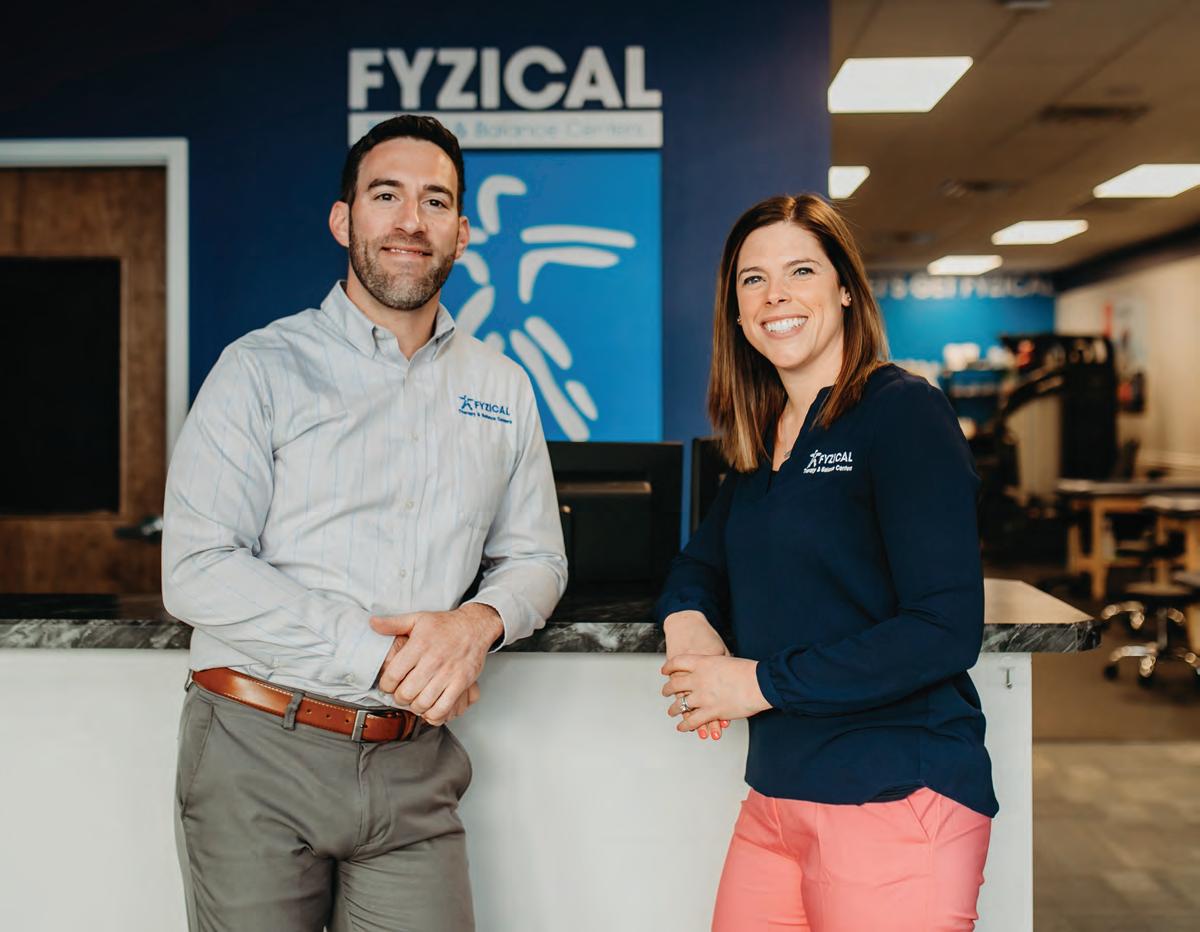










A cofounder of The Black Tux shares how, to grow his company, he needed to understand himself first.
by ANDREW BLACKMON
Irun a company of 400 people. It’s only possible because of a decision I made soon after we launched—even though it had nothing to do with business: I decided to see a therapist.
I hadn’t set out to be an entrepreneur; I was an English major in college, busy reading Dostoevsky and philosophy. Then I rented a tuxedo to get married, and it was an atrocious process. There must be a better way, I thought. My groomsman, Patrick Coyne (who had the same experience), agreed, and we cofounded The Black Tux in 2013 with the plan to rent well-fitting, high-quality suits and tuxes online—which turned out to be operationally complicated and immediately popular. By age 28, I was leading a fast-growing business and feeling very outmatched. People needed me to make decisions quickly, and at times I found it hard to rise to the occasion. I realized that, to grow this company at such a rapid pace, I needed to grow too. One day I asked an employee how he was so calm and centered, and he gave me the phone number of a therapist. I’d never seen one but decided to try.
My psychologist’s name is Dr. Thuy Bui, and she helped me understand how my past was impacting my leadership. For example, I had a strict upbringing. Therapy showed me how I’d internalized some of those ideas in an unhealthy way that had led me to doubt my own intuition and interests. I didn’t trust my own internal compass. I wasn’t sure of my own voice.
Once I became an entrepreneur, it all hit me hard and fast. Before therapy, I didn’t know how to rely on my gut or how to look to myself to make important decisions without delay. My internal confusion also meant that I often was too fearful to tell people when they did something wrong or when I needed more out of them. This impacted their performance. I realized I needed to shift in order to create more trust within the organization.

While building his startup, Andrew Blackmon discovered his true voice.
My relationship in therapy gave me the courage to listen to my own voice, enabling me to make decisions and communicate directly. It was a powerful forum for me to discover my potential, and I now enjoy a fuller version of myself. I feel free to be more curious, and to do everything to the best of my
ability without having to control the outcome.
This process also helped me turn The Black Tux into a thriving, profitable company, along the way raising $70 million, opening five of our own stores plus 30 more with Nordstrom, navigating through the challenging times of COVID, designing our own line of men’s tailored clothing, and acquiring a wedding-band company called Marke. I truly don’t think I would have been able to grow like this without Dr. Bui.
We often grow up with the expectation that we have to be a certain way. It takes a lot of courage to examine that, and to make decisions more aligned with who we want to be. I think that for a lot of founders, starting a company is an attempt to try to work that out. Entrepreneurship, like therapy, pushes us into new, uncomfortable zones where we must keep growing and learning more about ourselves. For me, that has been the greatest and most unexpected opportunity of all.




























hasconsistentlyranked intheTopFranchiseforVeterans forthepast8years!




















With recent valuation resets, we’ve had many conversations with founders regarding the role of venture debt especially in the Series A phase and beyond.
Every Series A situation is different, with a multitude of variables, but there are good rules of thumb to follow to help you use debt as an effective financial tool, especially in an uncertain market.
With decades of experience providing venture debt, there aren’t many scenarios we haven’t experienced first-hand the last 40 years. With that kind of deep experience comes a unique perspective on how venture debt can be used to propel a startup’s success.
From what we’ve seen, the most accomplished startups follow these seven tips when taking on debt:
1. Make sure the debt extends your runway – that it doesn’t serve as your only source of runway.
2. Ask yourself if the debt is really needed – be thoughtful, be prudent. Just because a lender offers debt financing doesn’t mean it’s the right tool for the job.
3. Think of it as a tri-party initiative. Work collaboratively with your management team, your investors and the lender –more transparency may help you quickly find mutually agreeable terms. This includes the deal initiation, but also throughout the life of the partnership.
4. Perform as much or more due diligence on your source of capital as they do on you – choosing the right lender is crucial. Critical to your diligence is understanding how a lender reacts in an adverse scenario.
Some questions to ask yourself include:
• Are they known as a patient lender?
• Is their credit framework approved by regulatory bodies?
• How have they reacted in down cycles? Have they ever been tested by such a cycle?

5. Model out your worst-case scenarios – expect the best, yes… but plan for the worst, especially when it comes to your ability to service the debt.
6. If you’re getting close to cash flow breakeven, compare venture debt to other financing options – venture debt can be more costly compared to other debt solutions.
7. Use a lawyer experienced in venture debt – inexperience in the nuances of acquiring this form of debt can delay the loan closing, creating added costs and unnecessary distraction for the entrepreneur or finance team.
While these tips are good guidance, there may be other factors influencing your decision to take on venture debt.
Our view: it’s better to find a lender that understands your business and the natural cycles of the innovation economy. It may make all the difference when unexpected things happen (and they will).
When the venture capital is readily available, we tend to see more competition and new entrants offering venture debt. Consider if your chosen provider has worked through the upand-down liquidity conditions that are a natural part of life in the innovation economy. It may be advantageous to choose a lender that has the credit appetite and a proven track record of working through challenges that many VC-backed companies face.
As advantageous as debt can be to fueling growth, it’s important to be cautious about taking on too much. A more prudent, patient approach is preferable. Consider avoiding taking on too much debt. Like with all the decisions you have to make for your business, partnership matters.

SVB has decades of experience dedicated to delivering specialized lending and financial solutions to founders, investors and executives.
OK, it’s probably not. We just made it up. But the elements of this silly ad have real-world consequences— because they’re all based on research about how marketing works. Try one in your next ad. by THOMAS
MCKINLAY
1/ The word “you”
For consumers in individualistic cultures (like the U.S.), the word “you” makes them feel more involved with your brand. In one study, a Facebook post that said, “Maximize your savings!” made people feel 19.7% more involved versus one that said, “Maximize savings!”
3/ Multiple copies
Don’t just show one of your product. Show many! When we see multiple identical products, we perceive them as more effective at the benefit they promise. In one study, people thought an energy shot was 10.7% more energetic after seeing a group of them, versus one shot alone.
Negative-sounding words—like no, don’t, or nobody—increase people’s engagement.
Scientists found that out by looking at over 53 million social media likes, comments, and shares, and confirming their findings with two controlled experiments. Remember that? No—don’t forget that
4/ 99-cent pricing with a discount
Want to make your product seem more affordable?
Pricing it with .99 (like, say, $4.99) can work—but it’s more effective when used in a promotion and shown alongside the original price. The discount will seem larger.
5/ Showing off smallness
If you’re a small company, make that known! As part of a series of 10 studies, people were asked to choose between products made by a large or small company—and they consistently believed the smaller company made higher-quality products. (The one exception was for hightech stuff.)
6/ Pick your pet!
People love pets, even in unrelated ads. But pick wisely: Dogs activate a “promotion mindset,” where people focus on growth and gains. Cats activate a “prevention mindset,” focused on caution and avoiding losses. In one experiment, 24% more people preferred a vitamin brand after seeing an ad with dogs, versus the same ad with cats.


HERE ARE THE STUDIES THAT INFORMED THE AD ABOVE :
For more details, visit ariyh.com. 1/ Cruz, R.E., Leonhardt, J.M., Pezzuti, T. “Second person pronouns enhance consumer involvement and brand attitude ” Journal of Interactive Marketing, 2017 2/ Pezzuti, T., Leonhardt, J.M. “What’s not to like? Negations in brand messages increase consumer engagement ” Journal of the Academy of Marketing Science, 2022 3/ Vanbergen, N., Irmak, C., Sevilla, J. “Product entitativity: How the presence of product replicates increases perceived and actual product efficacy.” Journal of Consumer Research, 2020. 4/ Sokolova, T., Seenivasan, S., Thomas, M. The Left-Digit Bias: When and Why Are Consumers Penny Wise and Pound Foolish?” Journal of Marketing Research, 2020. 5/ Woolley, K., Kupor, D., Liu, P.J. “Does Company Size Shape Product Quality Inferences? Larger Companies Make Better High-Tech Products, but Smaller Companies Make Better Low-Tech Products.” Journal of Marketing Research, 2022. 6/ Jia, L., Yang, X., Jiang, Y. “The Pet Exposure Effect: Exploring the Differential Impact of Dogs Versus Cats on Consumer Mindsets.” Journal of Marketing, 2022.







































Mario Armstrong, a gear expert and two-time Emmy Award winner, has tech solutions to help boost your productivity while at the desk and away from it.


1/ Play footsie at work. Wouldn’t it be nice to escape the desk and go get a massage? When that’s not possible, you can bring the massage to you. The podlike Renpho Shiatsu Foot Massager Premium [$200; renpho.com] fits underneath your desk. Just slip your feet in (up to a men’s size 12) and it employs a series of rollers and pads to squeeze, scrape, and knead for up to 30 minutes a session—with three levels of intensity, plus air pressure and the option to add heat. That’s relaxation you can easily work into lunch hour.
2/ Personal, portable power plant.
power plant.
A small charger is sufficient if a smartphone is all you travel with. If not, the Anker Prime 20,000mAh Power Bank [$130; anker.com] is a nearly 5-inch-tall brick that, at just over a pound, is still portable, but with enough juice to run a laptop with a USB-C port while simultaneously charging a phone or tablet. With each charge, you can fully revive a dead MacBook Air or recharge a newer iPhone more than three times—all with a real-time display of how much power is left.

3/ Smartphone sidekicks.
Smartphone cameras are good—but if you want great photos, you’ll need to add a lens. The Moment T-Series line of lenses [$120 to $150; shopmoment.com] keeps pace with your needs, so that you can go from a 58-millimeter telephoto lens (for landscapes) to a 10x macro (for fine detail). To attach lenses to your phone, you’ll need Moment’s proprietary phone case (about $40). After that, the tech takes care of itself— seamlessly upgrading any photo you take.



4/ Roll the dice on your time.
Need a better way to manage your time? You may have heard of the Pomodoro method, which slices work sessions into roughly 25-minute chunks. The Ticktime 2 Pomodoro Timer [$50; ticktime.store] can manage the timing for you—but it also has five other presets from three to 30 minutes, to help pace you during a range of tasks. Just roll the hexagon on any side to pick a preset time and get to work. It’s more intuitive and faster than setting an alarm.
5/ Covert carabiner. Carabiners might just be little pieces of metal, but they’re also a seasoned traveler’s best friend—allowing you to clip headphones, a water bottle, or any other necessity to the outside of your carry-on bag. But while convenient, carabiners are not usually secure. The nearly 4-inchtall, TSA-approved Matador BetaLock [$30; matador equipment.com] fixes that with a keyed lock that’s discreetly built into the aluminum body, making sure your gear stays yours.

Workplace conflicts don’t always feel good. But that doesn’t mean they’re bad. Here’s how to manage them better.
by AMY CHAMBERS

I always seem to lose in workplace conflicts. How can I win more?
—JULIO, HOUSTON, TX
YOU SAY YOU’RE bad at resolving conflicts. Before we address that, let’s back up and ask: What exactly is conflict…to you?
Everyone defines conflict differently. Maybe it’s a disagreement. Or a fight. Or whenever people raise their voices.
Whatever your answer, I’d encourage you to reframe how
you think about conflict. What if it’s not a zero-sum game at all? What if “conflict” simply means there’s more than one idea on the table—and someone else is advocating for their idea as passionately as you advocate for yours?
When you think of it this way, conflict isn’t necessarily
bad. My former boss, Donnie Peaks, used to say, “You might be the smartest person in the room, but you’re not smarter than the room.” The best ideas come from a group that collaborates, not from groupthink where everyone readily acquiesces and agrees. That naturally leads to conflict—and conflict can help us devise better, more thorough solutions, because we’re testing our ideas against others’.
Conflicts also don’t have to end with winners and losers. In fact, many conflicts can be resolved with both sides feeling that they’ve won. How? Well, consider this: Conflict often occurs because multiple people disagree on how to reach a shared objective— which means you and your colleagues all want the same thing, right? You all want that project to succeed or the company to thrive. By debating how to get there, everyone can contribute to the outcome.
You said that you “lose in workplace conflicts.” Here’s my guess: In reality, you just don’t feel heard in workplace conflicts. We can fix that.
Start by preparing privately before the conflict. You’ll be clearer and more influential if you’ve written down your most important points, as well as how you plan to express yourself in the moment. Then, when it comes time to discuss (or debate!) with your colleagues, set some ground rules.
Ask the group to agree on
some shared goals for the debate, and then establish some rules for how the engagement will go. Here’s one of my personal favorites: Forbid interruptions, and restrict each person’s argument to a certain timeframe (like, say, four minutes of speaking). This prevents those who are more outspoken from stealing the show.
During the discussion, you should carefully observe yourself and notice your emotions. If you feel yourself getting frustrated or angry—or if you notice anyone else in the group overheating—ask everyone to take a short break. That way, you can all emotionally reset and come back to the table more levelheaded.
Finally, if you feel like you’re getting the short end of the stick, say so. You don’t have to swallow an outcome you despise. Tell the group that you still have concerns about the proposed resolution. If others care about you, that should be reason enough to spend more time discussing.
Sometimes the group will choose your idea. Sometimes it won’t. That’s how these things go. But even if someone else’s idea ends up on top, that doesn’t mean you’ve lost. If their idea is the right one, and it helps you all succeed, then you’ve all won.
Amy Chambers is an executive and life coach and author of 7 V.I.R.T.U.E.S. of Exceptional Leaders





Mina Lee Senior Product Marketing Manager
From introducing the first built-in wall ovens to bringing “Pro” Ranges into the home in the 1940s and 1950s, Thermador has earned its reputation for innovating the way we cook. Nowhere is that more evident than in their industry-leading collection of induction cooking products. We turned to Thermador Senior Product Manager Mina Lee to share more about this growing segment in the cooking world.

Thermador is the first name in induction technology, and that success is further proof of the brand’s commitment to exceptional cooking experiences. Can you elaborate on that for us?
Innovation has always been in our DNA and always will be. Thermador was founded over 100 years ago with a passion to create products that define the home and make cooking more enjoyable. That dedication is clear in everything we offer today— especially our groundbreaking Induction Innovation Collection. Our passion is to deliver breakthrough products to our tech-savvy clients. With induction, we can provide even more ways to elevate their culinary craft.
What do you think puts Thermador induction in the leadership category?
We set out to make the best ranges in the industry—worthy of the Thermador name.
We pushed boundaries to make it possible. And because consumers have diverse needs, our Collection offers a breadth of options from our Freedom®, Liberty®, and Heritage cooktops to the exciting new induction ranges we launched this summer.
“
WE SET OUT TO MAKE THE BEST RANGES IN THE INDUSTRY—WORTHY OF THE THERMADOR NAME.
“
For anyone not familiar with induction, what are the main benefits?
There’s so much to love about induction. For starters, it’s powerfully precise. You have pinpoint temperature control with fewer cold spots, which can mean fast and even cooking—and faster boiling. Less heat is lost in the cooking process, making induction more energy efficient, and with its sleek, smooth surface, cleanup is easy. Induction has been a popular choice in the restaurant industry for many years, and is now being embraced in the home. Thermador is helping drive that by designing with the needs of our consumer at the forefront, while delivering the competitive edge we’re known for.
What are some other induction features unique to Thermador?
There are quite a few induction innovations that only Thermador offers. Our flexible cooking zones accommodate multiple pots and pans as well as teppanyaki pans up to 16-inches long. HeatShift® allows you to change power levels by simply moving the pot, perfect for going from a sauté to a simmer. MoveMode® is another intuitive feature that takes your power setting with you when you move cookware across the surface. PanBoost® accurately heats and holds oil temperatures. And CookSmart® includes five preset frying levels for consistent results. Purposeful features like these make Thermador Induction so wonderful for those who love to cook and entertain.
Thermador is known for gas range performance. How would you help translate the power of induction for those more familiar with gas?
Consumers gravitate to gas products for many reasons. The Thermador Star® Burner is a high-performance and beautifully designed shape. And in the same way we’ve invested in creating the best gas products on the market, we’ve raised the bar for induction as well. With 23 US patents, our induction advancements provide unparalleled performance and cooking flexibility.
As a luxury brand well known for design and craftsmanship, what does induction bring to the table?
From a design standpoint, our induction cooktops make a sophisticated statement in any kitchen. They’re absolutely stunning, especially if you have an eye for minimalist or European design. The cooking surface is one piece of mirrored glass, so it beautifully integrates into a seamless look with your kitchen countertops.
What’s next for Thermador and induction?
I’m beyond excited not only about our all-new Pro Harmony® Induction Ranges, but about our entire induction collection. It offers the most advanced induction features with an unmatched true convection oven, allowing us to build on the Thermador performance legacy. With 30-inch and 36-inch range models now available, consumers will now have non-gas options from Thermador. They’re WiFi- enabled, so you can control and monitor temperatures via the Home Connect® app. And with this portfolio expansion, we have even more product options that fulfill the needs of people who love new technology—and who love to cook.
How would you sum up Thermador induction at this moment?
It’s innovation at its finest. People know us for exceptional cooking experiences. Now with our Induction Innovation Collection, we’ve created another way to deliver that. It’s the next chapter in our legacy of leadership in the home.



































So was our magazine cover. And so were many of the futuristic images on the following pages.
But here’s what’s even cooler: These images didn’t just come from nowhere, of course. They were the result of prompts written by entrepreneurs—in this case, a team of artists at a company called Create Labs—who saw an opportunity to master generative AI tools like Midjourney and DALL-E, and then partner with clients like us who want to create powerful new images.
Because that’s the thing about the future: Regardless of how much change is coming, or how mind-blowing our new technologies are, the future doesn’t just happen It is shaped by humans with entrepreneurial minds.
That’s the constant theme in the pages that follow, as we look at what you’ll need to know in 2024 and beyond. Transformation is everywhere—in how we work, how we create, the technology we use, and the way we move our companies forward. But the heart of entrepreneurship is always human. It is a human pursuit. And we can create a better future together.
We asked the experts: What do entrepreneurs most want to know from you? And what’s your best advice?
by MARTINE PARIS


entrepreneurs have been racing to seize market opportunities. But as ChatGPT quickly gets smarter, new questions and possibilities emerge. How do you stay on top of it all—or even begin? Here’s how leading investors, founders, thought leaders, and tech luminaries break it down, in eight simple questions.
1/ Where do I start?
No matter what industry you’re in, there’s probably a generative AI tool specifically crafted for your operations—so these are the first resources you should seek out, advises Anna Barber, partner at M13, a VC firm that invests in early-stage tech startups. If you have a large team of developers, you can experiment with the text-to-code assistant GitHub Copilot. Designers should be testing tools like Midjourney, which creates images from text prompts, and creators should be trying storytelling aids like Tome or HyperWrite. For searching large sets of complex data, Humata, an M13 portfolio company, is powerful and easy to set up, Barber says. These tools help startups speed to market and do more with less. Next, think about how AI might enhance your product, whether you’re a telehealth platform adding chatbot features that match patients to therapists or a legal firm that could use AI to search volumes of cases. “In the future, every software product will incorporate AI,” says Barber. But AI features need to be evaluated and prioritized like anything else on your product roadmap—not simply added as an afterthought. Ideally, you should be building AI into what you are already doing.
2/ What are the best ways to recruit AI talent?
Competition is fierce. LinkedIn has seen a significant rise in demand for AI-related jobs in the past year, with a 21-times increase in global English-language job postings that mention GPT or ChatGPT. And in the past five years, it’s seen a near tripling in the number of LinkedIn members who have “Head of AI” job titles.
To find the right talent for your company, networking is key. Surround yourself with people you want to hire, and then beta test what it’s like to work with them
by teaming up at a hackathon, says Chappy Asel, cofounder of GenAI Collective, a community of thousands of developers in the San Francisco Bay Area. Many universities sponsor these types of events, or you might find a local collective of AI and data science professionals who meet regularly.
If you’re in Silicon Valley, you can also scope out AI talent at hacker houses, where cohorts of founders live and grow their startups together in dormlike settings. AGI House, for example, is set in a sprawling multimillion-dollar mansion where it hosts networking events featuring speakers ranging from Google cofounder Sergey Brin and OpenAI’s Andrej Karpathy to pop star Grimes. “We have multiple startups launching from our hackathons,” says AGI House founder Rocky Yu. And if you’re specifically looking for a business partner, Y Combinator (the accelerator that launched OpenAI) has a free online Startup School that offers founder matchmaking.
Most people think of ChatGPT as a tool for external communications: It writes some marketing copy, you refine its work, and then you share that with your customers. But ChatGPT can also help you refine ideas internally, says Conor Grennan, head of generative AI and dean of students at NYU Stern School of Business—especially if you engage it in role play.
“Ask ChatGPT to be a difficult customer who pushes back on every pitch,” he says. “It’s a great way for your sales teams to learn how to have hard conversations. You can then ask how you could have been more persuasive.” Or tell the bot about your product and prompt it to create different pitches to radically different kinds of clients, and ask who else you might try to sell to.
Another helpful exercise: After telling ChatGPT about your product, target audience, and sales strategy, ask it to act like a “consultant” to poke holes in that plan. After it answers, have it switch roles and create solutions for all the problems it just brought up. Next, ask it to poke holes in those solutions. As you keep going, says Grennan, ChatGPT will hone its responses until you’re able to get at the heart of the issue and the best solutions for it.
4/ Should I use a tool like ChatGPT, or build my own model?
Right now, there’s no perfect answer. “Startups training their own models are gaining the highest valuations, even for those focusing on niche use cases like legal and customer support,” says Brendan Burke, senior emerging technology analyst at PitchBook. “But this strategy can incur high cloud costs and violate privacy agreements made with customers for their data, and can be risky without significant VC funding.”
On the other hand, using off-the-shelf models can also be pricey and require extensive customization. If you’re building a startup with AI at its center, Burke says that the best approach might be to build an MVP of your product that uses a publicly available tool like ChatGPT and cloud resources available at platforms like Snowflake and Databricks. Then tell the story about your greater ambitions. “Investors are willing to fund plans for new model training if unique data is available and the costs are well-understood,” he says. Keep in mind that even the available options have issues. Currently, more than a dozen bestselling authors, including George R.R. Martin and John Grisham, are suing OpenAI in a class-action lawsuit for allegedly training its AI models on these authors’ works without permission. “We often debate, do we build our own model? Or do we go with another model and use the data that we have to train on top of it?” says Marissa Mayer, former CEO of Yahoo and now cofounder of the consumer apps startup Sunshine. She’s hedging her bets—building smaller models for certain datasets while using larger public models for others. “You protect yourself both ways,” she says.
Yes, according to FPV Ventures cofounder and managing partner Pegah Ebrahimi. “Artificial intelligence,” she says, “can level the playing field.”
With the proliferation of powerful new AI applications and infrastructure tools, barriers to making products have never been lower. With the ability to incorporate AI directly into tech stacks and workflows, startups can outdo enterprises when it comes to execution. “The question today isn’t, ‘Are you an AI company?’ but, ‘How are you using AI to make your product indispensable?’” says Ebrahimi. Some of the most successful companies that took advantage of the mobile wave were those that couldn’t have thrived or even existed
before cell phones, like Uber. Think of using AI in the same way.
To prevent getting “Sherlocked” by a giant tech player introducing a feature that renders yours irrelevant, GenAI Collective’s Asel says one way is to niche down. For example, take construction management and build a competitive moat with market-specific data like zoning laws, localized cost estimates, blueprints, permits, and project schedules— unique datasets that, when fed into your AI model, will significantly enhance its predictions and decisions specific to construction tasks. That way, the model will become smarter and more valuable as it’s used.
Whatever you do, Ebrahimi urges founders to make bold bets and imagine revolutionary improvements that weren’t possible before. To beat large companies that tend to move more cautiously, it’s critical to be agile and iterate quickly. “You have less to lose by trying things out,” she says, “so use it to your advantage.”
Despite the AI hype, VC cash is not as free-flowing as it was two years ago—and with a rush of new AI startups coming into the space, it’s getting harder to secure funding. The key to beating the odds, say several VCs, is your data.
“The billion-dollar question is, ‘Where are the moats?’” says John Cowgill, partner at Costanoa, who leads investments in applied machine learning and deep tech. The answer for him is proprietary access to data that no one else has or can replicate. SignalFire’s CEO Chris Farmer agrees, saying they’re “looking to fund AI startups building up defensibility through unique datasets that competitors and OpenAI lack.”
Both VCs add they want to see AI products that improve with interaction: “Did a user accept the recommendation from the AI system? Did they take a next-step action, or bounce out?” says Cowgill. “Smart AI entrepreneurs are thinking about how to leverage this metadata to make their application smarter with each new user they acquire.”
Another way to get attention from top investors is to build in a space that hasn’t seen much AI-related innovation yet, like supply chain, manufacturing, and big corporate functions like accounting and legal, suggests Radhika Malik, partner at Dell Technologies Capital. “Then you want to show that you have some unique understanding of the problems that can be solved with AI in that specific space,” she says.
7
nce I have a product, how do

AI may sound exciting, but it’s not always an easy sell—especially to large enterprise clients. That’s because AI touches so many departments, and will often involve dealing with IT, security, legal, product line, compliance, and data and analytics. Budgetary authority for that is not often clear, says Avivah Litan, a distinguished VP analyst at Gartner Research. Typically, the buyer is the chief information officer or chief information security officer, but you should ask around to find the right person.
As with any sale, make sure your elevator pitch has an easy-to-understand value proposition that solves a problem that your potential client is facing and explains why your solution is better than the competition. Ideally, says Litan, “find a customer with a well-known brand name and work with them to fine-tune your product and service.” (This may seem obvious, but many startups don’t think about it.) Once you get your first few big clients, the rest will come. “And make your prospects pay for proof of concepts. Don’t give away your product,” Litan says.
8/ Do I need to jump
That depends on the business you’re in. Here’s what Thomas Tull suggests; he’s an early-stage tech investor and chairman of the U.S. Innovative Technology Fund. “A thought experiment you need to run is, How much would I care if my competitor was able to imple-
answer is, it would severely hinder or put me out of business, then I would think very seriously about it.”
If AI can significantly impact your business, then many investors and founders say you have little time to waste. “I’m still amazed how little founders know about the range of AI tools that exist right now that could unlock value in their company,” says Matt Higgins, cofounder of RSE Ventures and an executive fellow at Harvard Business School. “This isn’t some distant, theoretical, speculative tech. Startups are the ones that have the most to gain because AI enables a fledgling company to bridge skill and resource gaps.” He points to all kinds of things AI can pull off for a fraction of what it would cost even a year ago—business plans, financial modeling, logo creation, content creation, chatbots, and on and on. “Don’t wait to be spoon-fed AI innovation,” Higgins warns. “By the time it becomes conventional wisdom, your competition will have eaten you alive.”
Marissa Mayer agrees you can’t afford to sit on this. “AI is probably going to be the greatest inflection point in our lifetime, potentially bigger than the internet. And you can either decide to participate in it,” she says, “or there’s a question of how relevant you get to be in the long run.”
Martine Paris is a Silicon Valley-based tech reporter.

The next-best thing to a crystal ball is a council of experts, so we asked 10 women leaders at forward-thinking companies for their predictions about the next year. They offered insights on what forces will shape the business world, and what entrepreneurs can do to stay ahead of the curve.

How startups will meet the crises of the moment…
“2024 will be driven by two conditions. The first is a challenging macroeconomic environment, and the second is excitement around AI. We expect to see an uptick in applications from startups that lower costs for consumers, and help solve societal challenges exacerbated by recessionlike conditions. Healthcare—and in particular, innovation geared toward Medicaid enrollees—will be a major focus. At the same time, we’re anticipating a whole new world of companies powered by artificial intelligence, particularly in industries like space and defense.”

How founders will fundraise
“Venture firms do have capital to deploy—hundreds of billions each year. But investors are being more judicious as they consider investments, looking for the absolute best team to take an idea to the next level. My advice for founders is to focus on building a great business with an excellent team and stellar product. Strive to serve customers that you and your team can uniquely build for. This is a great way to ensure strong product-market fit and defensibility, so when you’re ready to raise, you’ll be in a stronger position to find the right investors and negotiate.”

How leaders will build empowering hybrid work cultures…
“We are experiencing a connection crisis. The role of the physical office— once the epicenter of workplace culture and camaraderie—has forever changed. Even as many companies return to a structured set of in-person days, leaders need to innovate to build trust and connection with their increasingly distributed workforce. Slack’s research has found that how trusted an employee feels by their company is the number one indicator of how productive they are. Creating environments for employees to share ideas, and systems for two-way communication, is the first step.”

Senior practice manager of responsible AI at Amazon Web Services
How businesses will build ethical guardrails for AI…
“Responsible AI standards and legislation are imminent. Responsible AI is a people-centered approach, and whether businesses are using AI to drive revenue or to improve productivity, they need to ensure the right guardrails are in place. For entrepreneurs, this shouldn’t be seen as a checkbox, but a strategic advantage. At the end of the day, responsible AI is about trust and customer loyalty. We know customers are more likely to support companies that are committed to social responsibility, privacy, and security, and I predict customers will increasingly value companies’ commitments to responsible AI.”

How entrepreneurs will succeed in food retail…
“The industry is evolving at an unprecedented pace, so insights into customer behavior is imperative. Some customers are convenienceseekers who prefer food already prepared. Others are culinary enthusiasts who want the restaurant experience at home. With suppliers, I’m focused on quality standards for food ingredients and responsible, sustainable sourcing. I’m also looking for products with authentic heritage from around the world. Climate-related extremes will continue to affect crops and raw materials, so build strong, transparent supply chains.”

Nakagawa offi-
formerly senior director for Climate and Energy on the NSC
How startups will speed up climate progress…
“Generative AI and the ability to discover new insights in large datasets can speed up the clean energy transition. We are just starting to understand how AI can be used to make meaningful climate progress, and businesses can leverage it to tackle some of the world’s toughest challenges. They can help integrate new sources of renewable energy onto the grid, optimize energy and water consumption, anticipate weather events, speed up the discovery of low carbon building materials, and generate more carbon-free sources of energy—just to name a few.”

Lorraine Twohill Chief marketing officer

How businesses will create viral marketing moments…
“Build a culture of experimentation. Our team sets aside roughly 20% of our media budget to try new things, like direct-to-consumer live shopping, advertising in gaming, or experimenting with AI. We run scrappy pilots and scale what works. Make sure your team is trying AI tools in their daily work, because that’s how you’ll work out where it can help. Ask: How can AI drive creativity? How can it improve performance across media planning, buying, and measurement? Above all, be open to ideas from everyone. The best answers often come from the most junior members of the team.”

global no-code software company
How business leaders will automate systems, faster…
“In a world of constant change, adoption of no-code software for business automation will continue to rise, because it reduces the time and cost associated with app development. It empowers knowledge workers to build business applications and automate complex workflows without technical skills. They can assemble solutions from available elements, which simplifies the development process, allowing organizations to rapidly prototype and deploy new applications. Forward-looking companies around the globe will embrace no-code automation.”
How developers will use data to improve health outcomes…
How developers will use data to health outcomes
“For most people, their health data is still some abstract thing that has no real impact on their health journeys and decisions. Longitudinal data even more so. But companies that find ways to give users agency over their health outcomes by leveraging their own—and collective—data will be game-changers. In the FemTech space, we see this emerging in hormonal health, where conditions like endometriosis and polycystic ovary syndrome are finally getting some attention, and where pattern recognition and data collected over time is essential for treatment and care.”

Y Combinator and founder of nVision Medical
How your startup will stand out in the crowd…
“Our time of uncertainty is reflected in both investor and customer behavior. Your potential customers are facing their own economic uncertainty, so expect more diligence and selectivity from them. On top of that, AI is creating more choice as startups flood the field. For example, there are several AI-driven billing products for physicians coming to market simultaneously. How will your company stand out? Spending time with customers and truly understanding their pain points will be critical. A ‘nice-tohave’ feature or a product that meets a small need will no longer be enough for customers.”

Can a retail business operate with zero on-site employees? Many have tried and mostly failed. Now, a new ping-pong club is succeeding, and helping other companies do it too. Is this our future?
by YIREN LU

It’s clean and brightly lit, with floor-to-ceiling windows. A ping-pong table sits in the center of each room, and a neon pink PingPod sign glows against a black accent wall. The morning I visit, two tall, muscled guys are playing in a street-level room, wearing athletic gear and sweatbands. I watch one serve—with that deliberate little slowdown in the air that marks a serious player—and the other return it beautifully. It’s like a realworld “fitspiration” reel.
But there’s one thing notably missing from the scene: employees.
There’s no front desk, no one to check you in, no one puttering around to stock shelves or gather rogue balls. You reserve an hourlong slot for $36 on PingPod’s mobile app, and when you arrive, you scan your phone at the door to unlock your “pod.” At the end of your reservation, the room starts beeping, and off you go. All the while, discreet cameras survey the scene.
Today, PingPod has 15 locations, mostly in the U.S., with four more opening by the end of the year. The company also recently purchased Sharks, an analogous autonomous concept for pool. And perhaps most compellingly, it’s started licensing its proprietary tech stack to other businesses that offer autonomous (i.e., employee-free) experiences. For these companies and many others, the autonomous model is a siren call that promises steeply diminished labor costs at a time when workers are expensive and can be hard to find. It enables them to offer their product at lower prices, at all hours of the day—resulting in better profit margins.
But autonomous businesses aren’t exactly a new concept. There is a veritable graveyard of partially or fully automated businesses—restaurants, bodegas, pizza trucks, and convenience stores. Remember Amazon Go? In recent years, the e-commerce giant has been closing its “just walk
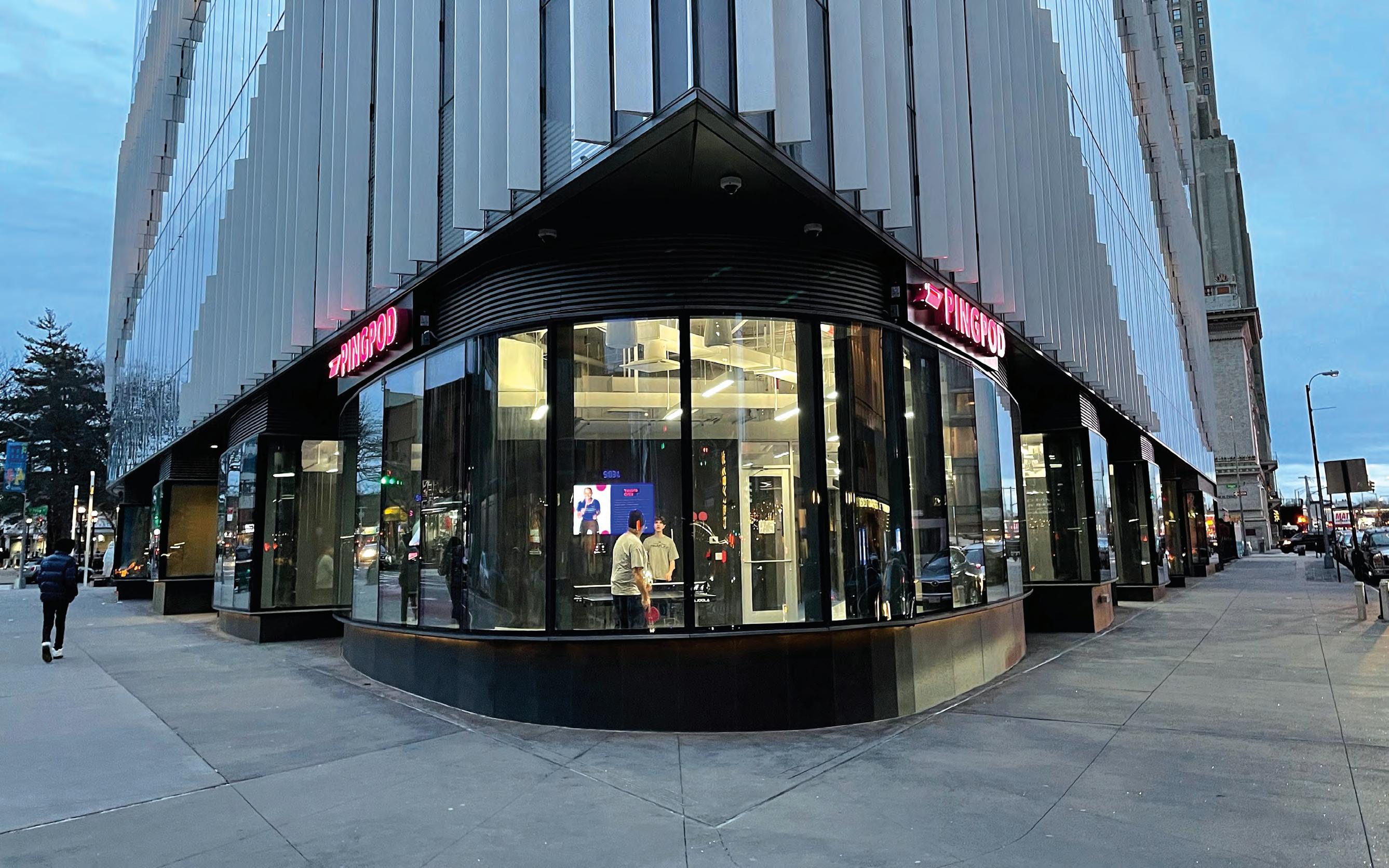
out” stores. Eatsa, an automated Chipotle competitor that dished out quinoa-based bowls, shut down its NYC locations in 2017. That same year, Bodega—basically a vending machine for corner-store snacks—got so much backlash for its tone-deaf messaging that it was dubbed “America’s most hated startup.” (Incidentally, both Eatsa, renamed Brightloom, and Amazon Go have started selling their B2B software.)
So PingPod’s success begs the question: Have we entered a new era, in which people are more receptive to autonomous experiences? Or are there certain kinds of businesses that are better suited to the autonomous model than others? And if so, are there ways of thinking and talking about automation that turn customers off, or make them want more of what you’re serving up?
When Max Kogler had the idea for a table-tennis business in early 2019, he hadn’t thought much about autonomous experiences. He was just a ping-pong lover who was frustrated by the lack of options in NYC to play. He’s been a longtime member at SPIN, the ping-pong social club founded in 2009 that had become a New York nightlife stalwart, but a night out there could easily cost $200 and involve drinking and other expenses. “[SPIN] did a really nice job making it cool, but at the same time, it’s still associated with alcohol,” he says. “It still needed that other aspect to make the economics work.” The lighting was bad, the vibe was more festive than focused and he sometimes got bumped for corporate events, which were SPIN’s big money makers. But he didn’t have much choice: The only other places to play in the city were Dojo style, musty, and hadn’t been renovated since the 1980s.
So Kogler and a partner, Ernesto Ebuen—a former top tennis coach and head of the New York Table Tennis Academy—decided to


build their own table-tennis club to cater to the hundreds of people in the city’s semiserious table-tennis community who just wanted a clean, well-lit place to play.
At the same time Kogler and Ebuen were looking for a physical location for their club, David Silberman, now the third founder of PingPod, was doing the same thing. Silberman was an equity research analyst with a monkish mien, and he’d come up with an idea to start a network of autonomous ping-pong locations with no employees. He just happened to be talking to the same real estate broker as Kogler and Ebuen, and the broker suggested the two teams meet. Soon after meeting, Silberman showed Kogler and Ebuen all the spreadsheets and Excel models he’d been working on. They were initially skeptical, but after going through the math, they started to think it could really work.
PingPod opened its first location on the Lower East Side in New York in February 2020. The pandemic hit a month later, and what would have killed an ordinary brickand-mortar business was a selling point for PingPod: “During lockdowns, we were one of the first nonessential businesses to reopen,” Silberman says. “We had no staff and only one location,” Kogler adds, “but so many people reached out thanking us. Having this space improved their mental health and gave them a sense of community.”
the chief cost for retail businesses in urban areas. But in reality, labor is often more. PingPod still incurs some labor costs, of course. There are salaries for the corporate team, the customer support and security staff in the Philippines who monitor the cameras, and operations/maintenance personnel who clean the pods between sessions. But the company doesn’t have hourly workers on-site. And by removing that chunk of labor costs, in the best months, PingPod units can achieve about 50% profit margins, compared to a successful food and beverage service business, which might get 25% profit margins.
Additionally, most of the pods are open 24 hours a day, 365 days a year, opening up significantly more capacity than traditional retail businesses. At the 37th Street location—which is near the entrance to the Lincoln Tunnel, and particularly busy— utilization is at 40% to 50%, which means 10 to 12 hours per table. That’s far more than the traditional 9-to-5 business. And surprisingly, a lot of people actually rent pods in the “off-hours”: 40% to 50% of pod usage happens outside of peak hours (5 p.m. to 10 p.m. on weekdays, 10 a.m. to 10 p.m. on Saturdays, and 10 a.m. to 6 p.m. Sundays).
“The fact that we’re open during hours when there are few alternative experiences means we capture a greater percentage of a smaller number of people seeking things to do,” Kogler wrote in a 2022 blog post.
Most pods don’t get 50% utilization. But, Silberman says, “Most of our units will go profitable at somewhere between 15% and 20% utilization. Anything above that is
ith any autonomous business, security is a concern. Recently, giant retailers like Walmart have been reassessing their self-checkout registers due to endemic theft. One industry estimate found that inventory loss can surge by 31% to 60% or more depending on the number of self-checkouts in a store, and the National Retail Federation recently found that unprecedented theft contributed to U.S. retailers losing $112.1 billion in 2022.
Fortunately, there isn’t much to steal in a PingPod. But they’re still physical spaces, where, as Silberman puts it, “the walls get kicked in, literally and figuratively.” It helps that ping-pong players aren’t exactly known for their rowdiness. In three years, PingPod claims it’s never had any incidents of significant harm to people or equipment.
It also helps that players know they’re being watched. From the get-go, PingPod invested heavily in its tech stack, including a hardware system with multiple cameras in each room. One camera system is used to monitor any activity at the pods 24/7 by their security team in the Philippines.
But to avoid seeming too much like Big Brother, a second set of cameras was added for a more fun purpose—to capture instant replays from multiple angles. By clicking a button on the iPads next to every table, players can clip and share their best moments from the recording. The first five replays are free, after which the replays are 50 cents each. Replays can be played back later in PingPod’s app as well. Since the videos are watermarked, they become both a clever “in-app” purchase that increases revenue, as well as a vehicle for user-generated content showcasing the brand. “For other venues licensing our system, it’s a huge marketing feature,” Kogler says.
The company licenses four tiers of software to other vendors under its PodPlay brand: Tier 1 is software only, Tier 2 is software plus a white-label app, Tier 3 is the first two plus replay and scoreboard, and Tier 4 is the entire software and hardware autonomous setup, including physical installation and surveillance from PingPod’s security
team in the Philippines.
Most of the customers licensing PingPod’s tech today are focused on other racket sports, like Picklemall, which is converting unused mall space across America into indoor pickleball courts. Initially, Kogler says, PingPod expected most customers to opt for Tier 1 or Tier 2, but were surprised by how many buyers went for Tier 3. “What has happened is that people see it as an extension of their hours,” he says. “So instead of opening at 10 a.m. or 11 a.m. when their food and beverage people come in, they can open up at 6 a.m. And they don’t necessarily need to have four people there. They only need one person, while our security team takes care of everything else.” PodPlay isn’t the cheapest automated setup in town, but PingPod says that depending on a company’s needs, it pays for itself in three months by lowering labor costs and increasing hours of operation.
Racket sports businesses may be early adopters of the autonomous model, but PingPod’s founders think it’s feasible for all kinds of activities that “fit in a box.” This includes podcast studios, massage studios, music recording studios, piano practice rooms, and karaoke rooms.
As previously mentioned, though, many autonomous concepts have not worked out, and Silberman hypothesizes that may relate to whether people value the social aspects of an activity or privacy. For fitness classes, he says, “On the one hand, people go and want to be part of a group—like Barry’s Bootcamp or SoulCycle. On the other, you have Peloton, where you can do it in your house.” The sweet spot seems to be when the activity involves “some kind of physical infrastructure that you can’t get at home, but you actually want to get rid of the people.”
There are always exceptions, even within a category, which suggests that success is heavily dependent on execution and messaging. For example, Sweat440, a 40-minute HIIT workout class with 20 locations, fits into the mold of labor-light businesses. When I visited one of their locations, there was a single employee who worked check-in and supervised general operations of the location, but there were no trainers at all. Attendees progressed through four 10-minute stations, led by virtual trainers demonstrating the movements on flat-screen TVs. There’s no setup time or instruction time, which means classes can start every 10 minutes. This is extremely
attractive for customers, because there’s no scheduling pressure. If you get there five minutes late, no problem. You can just wait five minutes until the next class starts. It eliminates the mental burden of figuring out how to perfectly intersect a workout studio’s schedule with your own—not to mention reserving your spot in advance, if classes fill up.
A Sweat440 studio can have 45 people working out at once, with no trainers. This efficiency is passed down to customers in the form of lower prices: A package of four visits per month to its downtown Manhattan location costs $109, which— while pricey—is less than many comparable staffed HIIT classes. The nearby Fhitting Room, for example, costs $145 for four visits per month, and the closest Orangetheory is $119 for four classes. Notably, in its marketing, Sweat440 does not emphasize its no-trainer approach. Instead, it emphasizes scheduling flexibility. Chances are, they know people aren’t going to Sweat440 because they don’t like live trainers. They’re going because it’s a little cheaper, and they want to join a guided workout class without planning their whole day around it. Similarly, PingPod customers don’t care that the experience is autonomous. They just like it because it’s a convenient way to play ping-pong, and the price and scheduling are right.
This is an important lesson for entrepreneurs considering the automated business model. At the end of the day, automation should not be the selling point; it should be what enables you to give customers more of what they already want, at a better price or with more frequency. That may be the best explanation for why Amazon Go stores haven’t lived up to expectations (when they opened to the public in 2018, there were reportedly plans to open 3,000. Now there are 24). Amazon has said that they’re closing certain locations due to “low growth potential”—but the public consensus seems to be that no one really wanted the “Amazon experience” in person. The products weren’t that great, and it wasn’t that much more convenient to skip a checkout line. So “just walk out” was more of a novelty than a real innovation.
Kogler thinks this point is also critical in the larger, messier conversation over eliminating jobs. “The company Bodega got all sorts of backlash because it was replacing the actual bodega with robots, but that’s not what we’re building,” he says. “This didn’t exist before. So we’re not taking any kind of labor away from people.”
But there still isn’t a one-size-fits-all equation for what works in terms of autonomous experiences and what doesn’t. Even for the PingPod founders, much of their understanding of how people use physical spaces has emerged only from empirical experience. At Sharks, their automated pool concept, for instance, the average reservation is much longer than it is for PingPod. People use the Sharks spaces almost like a living room: a place to hang out for hours with a group of friends.
These types of “public living rooms” have become more popular since the pandemic changed how people interact with cities and their physical communities. Even as traditional business districts in cities are suffering from record office space vacancies, there’s been a revival in residential neighborhoods like the Upper West Side or Williamsburg in Brooklyn—places where people live, eat, and socialize. It turns out people don’t actually want to have happy hour on Zoom or hang out in virtual worlds (at least not entirely, and not yet).
That sense of community is the PingPod founders’ more idealistic ambition for the company. They’ve built features into the app that are intended to bring people together in physical spaces: a platform for coaches to advertise, a tool for users to organize their own tournaments and events. “We want people to use their phones to not need to be on their phones,” Kogler says.
This physical-first approach has informed their expansion strategy. Although there are tons of cheap, higher-level office spaces in New York City that could be converted into PingPod locations, the business has focused on ground-floor real estate in residential neighborhoods and some commercial areas. “Part of our core mission is to make the sport more accessible than it’s ever been,” Silberman says. “So bringing it out of the basement, and putting it onto the streets.”
And just like the city streets, the vibe at a PingPod is always changing. On a Wednesday morning, it feels like a gym— spotless, with focused players flicking drop shots and chopping backspin lobs. On a Saturday night, it’s more like an arcade, with groups of friends hanging out and young couples on dates. But that’s the point of an autonomous experience: It’s whatever you want it to be, whenever you want it to be there.
Yiren Lu is a writer and software engineer currently running Frindle, a technical writing agency in Greenwich, Connecticut.
CEO Akash Takyar, the human team starts the serious brainstorming.
So what could LeewayHertz do for Gadewar? Scrut’s platform is used by chief information security officers and others who are often bogged down by extensive security assessment questionnaires that can take 50 hours to finish. “Nobody wants to answer long, long Excel sheets,” says Gadewar. “It’s grunt work.” So LeewayHertz collaborated with Scrut to build a new AI tool that can complete the process in 15 minutes. Then they expanded its capabilities to quickly answer other questions users have.
But is an AI consultant worth it for everyone? That’s up for debate.
First, there’s the expense: No matter what size the consultancy, the costs are significant. Even at DataRoot Labs, a smaller firm that serves startups, the average price for a customized virtual assistant can run $60,000 to $90,000. More extensive tools, like the ones created at LeewayHertz, can set you back $150,000 or more.
Then, there’s the question of whether that money is worth it.
For Matt Higgins, it’s a hard no. “I think using an AI consultant is completely unnecessary and potentially lazy,” says the cofounder of RSE Ventures and an executive fellow at Harvard Business School. He suggests following AI innovators and experts on X (formerly Twitter) and experimenting with their suggestions. “In my opinion, what’s already on the shelf is amazing and certainly good enough for 95% of use cases at small and midsize companies.”
We generated some answers from humans. The results were mixed. by LIZ BRODY
We generated some from humans.
As generative AI rose in prominence this year, Jayesh Gadewar had a thought: We can use this to leapfrog our competitors. He’s the cofounder of Scrut Automation, a startup that builds compliance and security software for businesses, but as far as AI, they just didn’t have the expertise.
So he did what many other leaders are now doing: He hired an AI consultant.
“Generative AI is funny in that the basic capabilities you get for your $20 a month for ChatGPT Plus are pretty impressive,” says Tom Davenport, professor of information technology and management at Babson College and a senior advisor at Deloitte’s AI practice, “but to customize
it is technically challenging.” That’s why, since OpenAI’s chart-topping chatbot landed a year ago, a new breed of specialist has risen to help companies harness AI’s game-changing wizardry.
The consultants run the gamut. There are major players like Deloitte, IBM, and Accenture, all of which expanded their generative AI consulting practices this year. But smaller consultancies that help startups with leaner budgets are also beginning to crop up, and Scrut hired one of them called LeewayHertz.
A firm of 250 professionals with offices in the U.S. and India, LeewayHertz has built its own ZBrain, a generative AI platform that allows potential clients to share their data securely. Once that happens, LeewayHertz prompts ZBrain to come up with ideas for how to help their client. From there, says
But Davenport, the Babson professor, thinks there are some cases where a consultant can be useful, and offers a simple distinction: “If this is something you think is really going to be important to your startup’s future,” he says, “you should develop an internal capability. But if you want to explore how to take your knowledge of, say, some legal market and embed it into an AI system, that could be pretty specialized, and you might want to hire a consultant.” You might even find that consultant for free; he says that business schools and university AI programs are often looking for corporate projects that their students could work on.
Despite all that, Gadewar—like many startup consulting clients—is happy with his decision. Sure, he says, he could have tried to build his own AI team. But “AI talent is very hard to find, and you have to train folks,” he points out. “Again, we just don’t have the expertise. Working with a consultant who does helped us minimize the cost of that opportunity and get to market faster. And now we have a differentiating edge over other companies. It has given us an advantage.”

can make a take it one
But you can make a difference, if you take it one step at a time. That’s how Patagonia became missionoriented long before the term “mission-oriented” was popular. Now, the company’s director of philosophy has advice for future generations of entrepreneurs.
Is your business “making the world a better place”?
It’s become a business cliché, because everyone wants to feel good about making money. But if your company didn’t start out with an altruistic mission, it can often feel like the incentives are out of whack. But don’t write yourself off just yet, says Patagonia’s director of philosophy, Vincent Stanley. He wants you to know that even the most celebrated philanthropic business didn’t start out that way. “Patagonia was meant to be an easy-to-milk cash cow,” he says. “Not a risk-taking, environment-obsessed, navel-gazing company.”
Stanley has been with the outdoor apparel brand since 1973, when his uncle, Yvon Chouinard, started it as an offshoot to support his real venture, making rockclimbing equipment. But as Patagonia grew, Stanley says there were “a handful of moments that stunned us into consciousness.” One such moment was their discovery that cotton—“what we thought was a natural and therefore virtuous fiber”—was actually the most toxic material to grow. That and other stories are detailed in a new book, The Future of the Responsible Company: What We’ve Learned from Patagonia’s First 50 Years.
Patagonia is now a $1 billion-plus business—a cash cow, after all—and Chouinard has been dubbed the business world’s “philosopher king” (though he prefers “existential dirtbag”). Last year, he made good on his claim of never wanting to be a billionaire when he forfeited his family’s ownership of the company to a nonprofit trust that would ensure all future proceeds go toward combating climate change. “Earth is now our only shareholder,” Chouinard said.
of FRANCES DODDS
by FRANCES DODDS

But for all the philosophizing that goes on at Patagonia, this new book is not an idealistic screed. It’s a practical blueprint for companies committed to examining their impact. It recommends that responsible businesses assess their impact on “five key stakeholders”: owners/shareholders, workers, customers, the community, and nature as a whole. It includes extensive checklists to help business owners take stock of their impact on each of these stakeholders, and just enough philosophy to get readers in the existential dirtbag mindset. Here, Stanley talks about responsible thinking, and why reducing the harm your business causes often creates even more business opportunities.
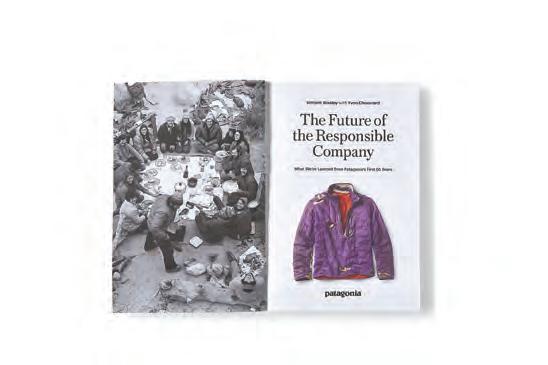

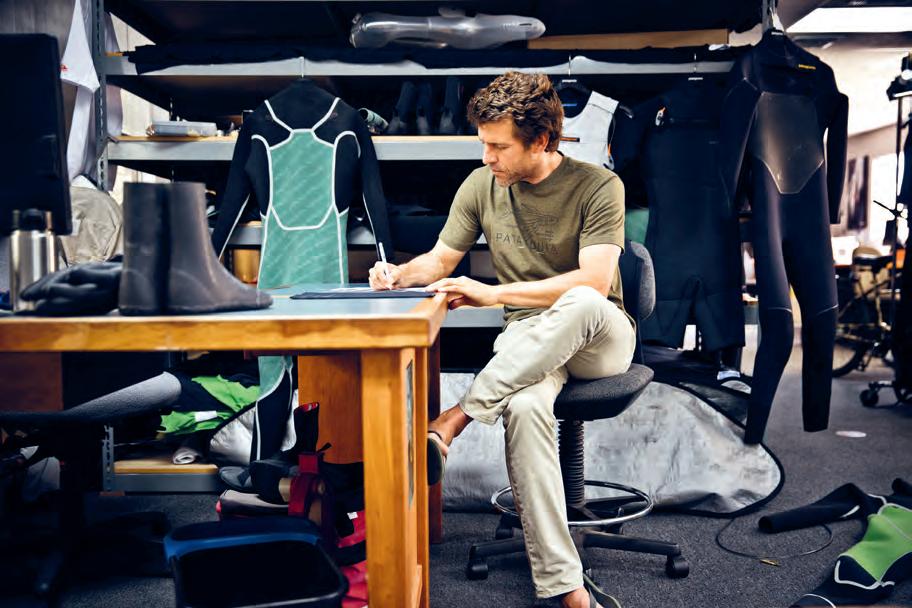
There’s a great line in the book: “Are (or were) you a juvenile delinquent? Great.You have the personality of an entrepreneur. Read all the checklists and go do something that makes you proud.” Do you have any other advice for entrepreneurs who want to start or run a responsible business? Most people who start businesses have something they care about a lot. To be more responsible, make the connection between the purpose of your business and its different stakeholders. Is there some effect your business has on your community or the environment that you’re not proud of? Go there first, rather than thinking abstractly: What’s the most serious thing going on in the world that I should be doing something about? Look at the problems your own business creates.
You also talk about the 80/20 rule: “If 20% of your products (or services) generate 80% of your sales, analyzing those products will gauge the lion’s share of your impact.” For us it’s more like a 90/10 rule. The bulk of our environmental impact comes from the materials we use. But we still look at everything else we do, even if it doesn’t have as much impact, because it reduces harm. And it also creates opportunities for business.
Your uncle has said, “Every time I do the right thing, I make money.” It’s the idea that altruistic constraints can lead to innovation. But I think people have a hard time believing that until it happens for them. That’s exactly right. I mean, that’s what
happened with us. We made the switch to organic cotton and took a hit on margins and sales for a while. But then it proved successful, and we started looking at other things. Our wetsuits rely on a really destructive limestone process. We asked, “Is there another way to make them?” Everybody on the team started thinking, What if we did this instead of that? That opens up the imagination, and the more that happens, the less you’re compromising between being successful and doing the right thing.
And quality is important to maintain—in order to be successful while doing the right thing. Absolutely. In the early 2000s, we made a line of rain shells that were much more environmentally beneficial. But they were stiff and noisy when you walked, and they didn’t keep you dry! We realized all we were doing was turning everybody off of environmentally responsible rainwear. I’m not buying a rain jacket to save the earth. I’m buying it to keep me dry. But if it keeps me dry and solves problems that other rainwear doesn’t, I’ll go with that.
Patagonia has also been transparent about problems you haven’t solved yet— even acknowledging that not buying your clothes might be a better solution. Yes. A little over a decade ago, on Black Friday, we put out this ad in The New York Times that said, “DON’T BUY THIS JACKET.”
The jacket pictured was the highest recycled content we knew how to make at
the time, and it would last 10 to 15 years, at which point you could send it back to us to be recycled. But it still generated a lot of scrap waste, and its manufacturing required a lot of water, and it created greenhouse gases many times its weight. So we were trying to say, “Listen, because we don’t really know how to make anything that doesn’t take more from the planet than we’re repaying, you should be thoughtful about what you buy, even from us.”
In 2018, Patagonia changed its mission statement from, “Build the best product, cause no unnecessary harm, use business to inspire and implement solutions to the environmental crisis,” to, “We’re in business to save our home planet.” Is this the kind of shift you think all businesses should make? I think it’s difficult. One reason we felt we could change the mission statement was because we’d gotten into the food business in a small way, with regenerative organic agriculture. This is more than not using chemicals—it’s crop rotation and companion planting and minimal tillage, things that actually build topsoil much faster than nature can. So you’re giving back more than you’re taking. But we can’t do much of that yet in the clothing business. We’re all still stumped. So if there’s no way to create a product or service that does positive good, at minimum, I think we should all be reducing harm, and cleaning up our act. If there’s a problem common to your industry, it’s up to you to work on it.
Return to office? Stay at home?
By the end of this year, 39% of all global knowledge workers will be hybrid workers. That’s a forecast from Gartner, and it’s more than just a statistic; it’s a harbinger of a seismic shift in our work culture.
Some business leaders may mistake this trend as a partial return to “the way it was.” But that is shortsighted. The hybrid model isn’t just “old office life” for half the week, and it also isn’t a free-form, work-fromhome life for half the week. To embrace the hybrid work model means reimagining the very fabric of our work environment. The pandemic taught us that work is not a place you go; it’s something you do—so the office must now serve as a hub for collaboration and innovation, not a factory for rote tasks.
I’m a business consultant who has helped over two dozen companies adopt hybrid work models, and I get plenty of pushback from managers who are used to “management by walking around.” But in the hybrid world, leadership will require a more nuanced understanding of remote team dynamics, and a focus on results rather than hours spent at a desk.
If you’re still not totally sold on the hybrid model, here are some points to consider.
Stanford economist Nick Bloom did a meta-analysis of work-from-home studies, and found that an organized, flexible hybrid model is 1% to 3% more productive than a fully in-person model—and that’s before doing any leadership development to improve how hybrid teams function.
Return to how we work.
Increasingly, companies are choosing both— going with a hybrid model that’s viewed as a compromise between old and new. But to do it right, you must treat it as a radical reimagining of how we work.
by GLEB TSIPURSKY
Why? It provides employees with the flexibility to determine how tasks can be completed most efficiently. In a hybrid setting, employees should only commute to the office for activities that are most productively completed there, such as intense synchronous collaboration and nuanced conversations. Meanwhile, tasks that consume 70% to 90% of a typical workday—like focused work and asynchronous communication—are done more effectively at home. The employee can skip out on commuting and the social obligations of office life while optimizing productivity.
But even as offices may not be conducive to heads-down tasks, they are invaluable to employee morale. The Stanford study finds that the happiness derived from a hybrid work model is equivalent to an 8% pay raise. Sit with that; it’s a revelation. It underscores the profound importance of work-life balance—the autonomy and flexibility of remote work,

as well as the community of an office in which to meet. The employee well-being that comes with work-life balance offers employers a major retention boost. If you want to get started on building your hybrid model, here are three steps I recommend to make it work for your team.
Identify which tasks require physical presence and which don’t. Survey your staff and get their input and buy-in in this process. Don’t just rely on managers. Use this data to design your hybrid model.
Ensure that your tech stack supports seamless transition between remote and in-office work.
The skills required to manage a hybrid team are different from those needed for an inoffice team. Invest in training programs that equip your managers for this new reality.
The future of hybrid work is not a diluted version of the past; it’s a bold new frontier. It offers a unique opportunity to redefine our work culture to make it more flexible,
more humane, and more productive. But seizing this opportunity requires more than just logistical adjustments. It demands a paradigm shift in our attitudes toward work, leadership, and collaboration.
As you stand on the cusp of this transformation, ask yourself: Are you merely adapting to change, or are you embracing all it has to offer?
Dr. Gleb Tsipursky is CEO of future-proofing consultancy Disaster Avoidance Experts and author of the book Returning to the Office and Leading Hybrid and Remote Teams
The promise of operational simplicity propelled SaaS into the mainstream but that promise never extended to data.
Owning data has turned out to be complicated, especially as customers increase their use of SaaS every day. Failing to protect it has painful consequences.






Boasting a multi-decade-high equity market, a supply chain haven for countries diversifying away from China, and “immense technological innovation and digitalisation,” according to the IMF, Japan continues to remind global investors why, in 2023, they should bet on Asia’s largest and most advanced economy. Enabled by the Bank of Japan’s ultra-loose monetary policy, this year marks a historic turning point for Japan – a meaningful return to healthy inflation after three decades of stagflation. As Prime Minster Fumio Kishida declared in his speech to the Economic Club of New York this September: “Japan’s economic indicators during the past year are at levels not seen in 30 years: Our nominal GDP annual growth rate was 11.4%, making it the highest among major developed countries; domestic investment is forecast to surpass 100 trillion yen this year, breaking a record-high in Japanese history... labour-management negotiations resulted in wage increases greater than 3.5%, which exceeded price hikes... Meanwhile, stock prices have risen to a level not seen in 33 years.”
Underpinning the strong performance of Japan’s equity market –both the TOPIX index and the Nikkei 225 far outstripped the USA’s S&P 500 across the first seven months of this year – is Kishida’s ‘new form of capitalism,’ which emphasises creating a “virtuous cycle” of income to spending that injects the economy with inflation and the dynamism of a tight, highly mobile labour market. It is also a perfect illustration of how Japan is defying its ‘demographic destiny’ and translating its biggest social challenges into fuel for economic growth. For example, to afford higher wages and compete for talent in a declining workforce, Japanese corporations are now more motivated than ever to increase their ROIs and profitability – this year, summer bonuses in Japan’s biggest firms rose to their second-highest level on record, whilst structural wage hikes have already spread to SMEs, according to Reuters.

Fumio Kishida Prime Minister of Japan
Rising wages are also key to the government’s goal of creating an environment that attracts foreign talent and enables elite human capital to flourish. Ultimately, the government wants to transform Japan into Asia’s premier R&Dand FDI hub –by 2030, it aims to raise Japan’s stock of inward FDI to JPY 100 trillion, more than double the JPY 40 trillion stock it held in 2020. Here, Japan’s declining workforce has engineered another huge demographic dividend by helping to inspire a transformative shift in the business community’s openness to the world. “Japan has seen a period of introspection and withdrawal. But now, it’s time for re-engagement; investors are now recognising how committed we are to fulfilling our promises. With its safety, top-tier infrastructure, and outstanding people, Japan holds immense potential,” states Jean-Marc Gilson, president of Mitsubishi Chemical Group.
A go-getting corporate Japan has also generated a more rewarding shareholder experience, with record dividend pay-out ratios and enthusiastic share buybacks –which reached their highest level in 16 years in FY22 – encouraging more investors to take advantage of the historically low yen. Early in April, Warren Buffet’s USD 7 billion vote of confidence in Japanese stocks catalysed a decade-high investment binge by overseas firms totalling JPY 1.05 trillion in the trading week through to April 14, as Berkshire Hathaway upped its stakes in Japan’s top five trading houses by 7.4%. This was later mirrored by BlackRock’s announcement it would go “overweight” on Japanese equities.
To sustain this momentum, Kishida is rolling out the red carpet to overseas asset management firms with “decisive” structural reforms to remove barriers to entry, including establishing special business zones where firms can make applications in English. The industry currently manages around JPY 800 trillion of assets – up 50% in three years,
according to Nikkei Asia – and Kishida’s reforms will target major banks, brokerage firms, and insurers. As a sweetener to new entrants, the government also plans to introduce a tax-free investment account for savers –the Nippon Individual Savings Account (Nisa) –to help unlock USD 14 trillion of household financial assets.
Whilst attracting foreign talent and higher FDI is fundamental to protecting Japan’s strong economic growth, corporations across the country are helping to redefine its traditional strengths for the modern era. Innovating within tradition is something the president of Tsuburaya Fields Holding –a leading player in the ‘smart’ transformation of Japan’s decadesold pachinko industry – Mr. Hidetoshi Yamamoto knows all about: “As the world evolves, we wonder about what new experiences we can introduce. To encapsulate our success mantra: It’s about unwavering dedication and patience. That’s the essence.” Mr. Yamamoto’s sentiment is echoed across corporate Japan, including by Akihide Tsuchiya, the president of Vertex Corporation, a leading manufacturer of construction materials, who states: “Yes, Japan faces a labour shortage, but as our labour force diminishes, there’s a growing recognition of the need for change.” Building on this sentiment of change and the role of individuals in driving it, many leaders share similar perspectives. “It is now clear that human capital plays a pivotal role in determining our country’s competitive position,” according to Yoshihisa Ozasa, chairman and representative director of Link and Motivation, a leading Japanese business consulting firm.
Innovation has always been the Japanese response, embedded within corporate philosophies like ‘Kaizen’ – meaning ‘continuous improvement’ – and today illustrated by Japan becoming the second most robot-dense country in the world, according to the International Federation of Robotics. To harness this energy, Kishida wants Japan to pioneer a new form of public-private partnerships, where government, industry, and labour work in harmony to accomplish paradigm-shifting policies, including enacting a legislative framework to accommodate JPY 150 trillion in investments across cutting-edge sectors like artificial intelligence, semiconductors, and renewable energy.
With businesses and the government open to global investment on an unprecedented scale and inflation back for good, Japan represents an investment opportunity more than three decades in the making. “I would urge you to evaluate what we are doing in my country, look at the underlying strength of our economy and our plans for the future, and then invest in Japan,” said Prime Minister Fumio Kishida.

Private consumption and investment have been the driving forces behind Japan’s economic recovery from the COVID-19 pandemic, according to the International Monetary Fund.
Furthermore, the IMF expects this growth to further accelerate in the current year. Exports are on the rise, and the forecasted current account surplus stands at a robust 2.9%, signaling the resurgence of Japan’s globally competitive businesses.
The Japanese chemicals industry houses many of these businesses, with Japan ranking as the world’s third-largest chemicals producer, according to the Japanese Chemical Industry Association. The chemicals industry contributes JPY 18 trillion in value-added to the economy, with JPY 2.6 trillion allocated to R&D, accounting for over a sixth of the manufacturing sector’s R&D expenditure.
Mitsubishi Chemical Group (MCG) stands as one of the world’s largest chemical producers. While the past decade witnessed growth that was not as robust as desired, the traditionally conservative company made a pivotal decision to bring in new leadership from outside. In December 2021, MCGlaunched “Forging the Future,” a new management policy aimed at optimizing corporate value through a clearer strategy, driving operational excellence, and unlocking the company’s immense growth potential.

Jean-Marc Gilson President and CEO
creating substantial value. They recognize our dedication to streamlining and refocusing the company. We have built that trust.”
The company’s financial results confirm the success of this strategy and reinforce investor confidence. In the 2022 financial year (ending March 2023), sales revenues surged by 16.5% to JPY 4.6 trillion.
Jean-Marc Gilson, Mitsubishi Chemical Group’s President and CEO, the first foreigner to lead the company and a recognized leader with a clear strategic vision, shares his insights, saying, “Our first milestone was focusing on discipline and excellence within MCG to optimize financial performance. We simplified the organization, unified all goals, reduced costs, restructured, and invested heavily in digitalization. Over the past two years, we’ve made significant progress, and it’s now time to embark on the next chapter—focusing on mid-term strategies and pillars for the future. We are concentrating on fewer industries, with our four key target markets being EV & mobility, digital, food, and medical.”
Innovation and the deployment of cutting-edge technology have long been integral to the company’s distinct competitive advantages. This, coupled with its customer-centric approach and consistent delivery of premium-quality products, sets Mitsubishi Chemical Group apart. At the core of MCG’s business is its unique concept of “KAITEKI,” signifying the company’s commitment to the sustainable well-being of people and the planet. To achieve KAITEKI, MCG identifies three axes: MOT (Management of Technology), MOE (Management of Economics), and MOS (Management of Sustainability). MCGis dedicated to addressing environmental and social issues in collaboration with supply chain partners, customers, and other stakeholders in its ecosystem.
Gilson emphasizes, “Our drive is to provide innovative solutions that improve people’s lives while ensuring profitability. We hold a responsibility to our stakeholders, and our reputation and respect in the industry necessitate maintaining the highest standards.”
To continue delivering value to stakeholders, the company is actively striving to become “the digital chemical company,” with seamless digital integration as a central element of its strategy. This digitalization initiative not only enhances the company’s market position but also underscores its commitment to transformation.
Gilson states, “Investors are now witnessing our commitment to action. Our growth strategy, focusing on specific markets and product lines, is
MCG’s share price has soared from below JPY 700 to above JPY 900 in the past year alone. With a leaner organization that specializes in growth segments, the company is well-positioned to continue delivering excellent returns in the coming years.
Furthermore, Mitsubishi Chemical Group is poised to strengthen its position as a partner for other businesses. This includes strategic collaborations, joint ventures, or distribution agreements with global industry leaders. As MCG develops and diversifies its client portfolio on a global scale, opportunities for such collaborations are expected to grow. The company, which already generates more than half of its sales outside Japan, is actively working on building its international brand and establishing a robust presence in each market.
“We are committed to localizing sales while upholding our distinct Japanese qualities, which include our commitment to quality, exceptional customer service, and innovation,” says Gilson. “We invest locally, embrace collaboration, and remain open to new opportunities.”
The President of MCG is leading his company through a transformative journey, one that is already yielding positive results. This path aligns with other leading Japanese businesses that are also adapting to change while retaining the qualities and values that have made Japan such a successful nation.
Gilson concludes, “Japan, at times, has been introspective in recent years. It’s time to open up. Many Japanese companies are beginning to realize that with the right approach, they can achieve remarkable success. Japan offers safety, excellent living conditions, top-notch infrastructure, outstanding people, and immense talent—advantages that should not be underestimated.”


As Japan entered the new year, fresh from relaxing its COVID-19 restrictions, proof of its economic resilience came instantly. Among the major developed economies, Japan boasted the highest employment rate in the first quarter of 2023, at 77.3%, according to Statista. To ensure continuous economic growth, Japan needs to address its most significant social challenges, particularly the increased demand for healthcare due to its aging and declining population. Japan’s highly sophisticated insurance market will be an essential tool in addressing the evolving needs of its citizens, particularly given that the country has one of the highest rates of insurance policy ownership globally.
Japan’s insurance market is among the largest in the world, with some of the highest premiums written globally. In 2021, 72% of total gross premiums written in 2021 were for life insurance, amounting to USD 295.85 billion, according to Statista. With over 30% of Japan’s population aged 65 or older and more than 50% of the wealth held by this age group, Japan’s aging society presents a significant opportunity for life insurers specializing in preventative health and wellness, long-term care, retirement, and wealth transfer, as indicated in a 2023 PwC report.

Hirohisa Uehara President
increase to JPY 70.0 in FY23. T&D Holdings’ solid financial performance also results from improved capital efficiency, explains Uehara: “Before, it was always thought that more capital was better from a life insurer’s perspective. But to improve profits in a sustainable way, you need to enhance capital efficiency, which is why we prioritize optimizing the capital entrusted to us by our shareholders.”
Founded two decades ago, T&D Holdings stands as Japan’s leading insurance business, housing three life insurance companies under its umbrella – Daido Life, Taiyo Life, and T&D Financial Life – each addressing Japan’s most critical issues. T&DHoldings also offers pet insurance and asset management services.
“Each of our three life insurance companies has a dedicated business structure. We’ve segmented the market, and each company concentrates on its unique segment,” says T&D Holdings’ President, Hirohisa Uehara. Since taking on the role in 2018, Uehara has championed life insurance to combat Japan’s problems and create economic value. For instance, Uehara propelled Daido Life’s mission to support Japan’s SME-dominated economy, where 99.7% of all Japanese businesses are SMEs. This involves helping SMEowners deal with the unexpected financial challenges caused by the retirement or absence of owners, managers, or employees through protection products like term life and critical illness insurance.
Simultaneously, through Taiyo Life, Uehara has aligned the group with the needs of Japan’s aging population, providing tailored medical insurance and nursing care products for senior citizens and households. In 2018, Taiyo Life pioneered a new aspect of the market with the launch of its groundbreaking ‘Dementia Prevention Insurance’. Also, in June 2021, Taiyo Life launched ‘Cancer and Critical Illness Prevention Insurance’, offering coverage of a lump sum across 19 predefined illnesses and disabilities, including cancer and diabetes. Similarly, T&D Financial Life focuses on the Japanese social issue of asset formation and offers bespoke products designed for senior citizens to support post-retirement expenditures and provide financial peace of mind for bereaved families.
Uehara’s decision to prioritize Japan’s most important social issues at T&D Holdings has yielded dividends. From December 28th, 2018, to September 14th, 2023, T&D Holdings’ share price rose by 99.26%. In this year alone, as of September 14th, it shot up by 33.99%. Likewise, in FY22, the group’s ordinary revenue increased by 22.94% year-over-year to JPY 3,214.1 billion, and its annual dividends per share rose to JPY 62.0, with the group forecasting an
For Uehara, M&A has been another key driver of growth for the group. In 2020, in partnership with Carlyle, T&D Holdings acquired a 25% stake in a reinsurance company, Fortitude Re. “When we initially invested in Fortitude Re was engaged in the closed-book insurance business primarily in the U.S., creating value from insurance business that has been issued in the past but is no longer open to new policies,” says Uehara, adding, “the original insurer transfers these policies to reinsurance companies to release reserves and capital for these policies. More recently, Fortitude Re has developed capabilities to assist insurers issuing new policies through its flow reinsurance solutions globally. Additionally, it has already transacted multiple times in Japan, further expanding its international presence. Since 2020, our investment in Fortitude Re has contributed c. 20% of our adjusted profits. And we’re thinking about extending the scope of our closed-book business strategy to other regions such as Europe”
The group is currently open to further partnership opportunities, including strategic alliances or joint ventures, whether with global financial institutions, reinsurers, or other key players in the insurance industry. The ultimate goal is to optimise the business portfolio, including geographically: “We need a partner with special knowledge of their region, one that would help us explore new opportunities globally and align with our values and vision. We would provide funding and, more importantly, allow them to leverage our considerable industry experience and knowledge – a great asset in a joint venture,” says Uehara.
Ultimately, what makes T&D Holdings the ideal partner is the same reason so many customers choose it – its integrity. “Sincerity and honesty are fundamental in this industry, and management understands what our stakeholders want. It’s reflected in how we do business.” From social and sustainability-focused impact investing –the group’s ESGinvestment balance increased to JPY 790 billion by the end of December 2022 – to a long-term vision of creating shared value within Japanese society, T&D Holdings has proven itself to be much more than just an insurance business but a source of unwavering support as Japan tackles its biggest issues.




According to the IMF report published in July, Japan’s economy will grow by 1.4% in 2023, fueled by pent-up demand, supply chain improvements, and policy support as the country seeks to strengthen its recovery from the COVID19 pandemic. Since lifting border control measures for overseas travelers in May 2023, Japan has seen a significant rebound in its tourism industry. In August, tourism levels reached 85.6% of the pre-pandemic figures, as reported by the Japan National Tourism Organization, marking the first time they surpassed the 80% threshold since the onset of the pandemic.
Takeshi Hashimoto President and CEO
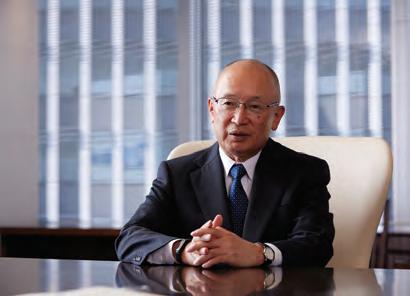
Japan’s maritime strength is central to its position as the world’s third-largest economy. Over 99% of Japan’s foreign trade occurs by sea, as per Statista, with the high demand leading to one of the most sophisticated maritime transportation industries and the globe’s most valuable merchant fleet. As Japan sets its sights on achieving net-zero emissions by 2050, the government has heavily emphasized the green transformation of the industry. Japan currently stands as the world’s largest LNG importer and specialized service vessels are being deployed to harness its world-leading potential in offshore wind energy, offering support to foreign investors in the sector.
Founded in 1884, Mitsui O.S.K. Lines (MOL) ranks among the top maritime transportation firms worldwide and is a member of Japan’s ‘big three’ international shippers. As of March 2023, MOL manages the third-largest global fleet, comprising 799 vessels. This includes the world’s most extensive collection of LNG carriers (97) and dry bulkers (276).
For around 140 years, MOL has played a pivotal role in advancing Japanese industries both locally and on the global stage, driven by its pioneering innovations. From high-speed cargo ships in the 1930s that traversed the Yokohama-New York route ten days faster than the industry average, to introducing the world’s first automated ship in 1961, followed by Japan’s inaugural methanol carrier in 1983 and its first fully-fledged cruise ship in 1989, MOL has consistently positioned itself at the forefront of the global maritime transportation industry.
As MOL sets its sights on the future, President and CEO Takeshi Hashimoto envisions a global business expansion. He remarks, “Our ambition extends beyond Japanese shores, primarily targeting emerging markets. Over the last twenty years, we’ve significantly aided the growth of the Chinese economy by accommodating its vast transportation needs. Our focus now shifts to Asian nations, along with India, African nations, and South America. In these regions, forging solid partnerships with local entities will be paramount. As we continue to evolve, we’re intensively building our intelligence and expanding our business networks, ensuring that MOL remains agile and adaptive to global changes.”
In light of the unpredictability inherent in the international shipping industry, Hashimoto is advocating for a transformative shift in MOL’s strategy. Keenly aware of the perils of over-reliance on shipping, he is championing business diversification to mitigate market risks, ensuring both sustainable and sustained growth that will also contribute to the shareholders. His vision is to transition MOL from being solely anchored in shipping to a ‘social infrastructure company’, although the main business remains in shipping, presenting a varied portfolio of services that capitalize on the company’s marine transport expertise.
One focus will be on tourism - MOL is poised to tap into Japan’s booming
tourism industry, with plans to establish a cruise line and a hospitality-focused real estate portfolio. “We aim to significantly shift our business mix, aiming to reduce our traditional shipping ratio in asset to 60% from 75% by 2035,” Hashimoto explains. This strategic move is designed to offer stability to investors and stakeholders. On the partnership front, Hashimoto reveals MOL’s inclination towards collaborations with international firms, for example, those in Europe and the USA, who possess vast expertise and experience in the cruise business and are interested in investing in the expansive cruise business domain in Japan. In return, MOL offers an unparalleled wealth of knowledge of Japan.
Transitioning to eco-friendly fuel alternatives remains a formidable challenge for the global maritime industry. Addressing this, MOLunveiled its Environmental Vision 2.0 in 2021and updated this April to “MOLGroup Environmental Vision 2.2”, setting ambitious goals: a 45% cut in GHG emissions by 2035 (relative to 2019 levels) and a target of net-zero emissions by 2050. While accelerating the shift to green fuels like sustainably-produced green ammonia and green methanol is crucial, Hashimoto emphasizes the need to first identify the right partner. “The USA presents emerging opportunities, and we’re keen on exploring potential collaborations or acquisitions. Our commitment to sustainability is unwavering, but realizing our goals hinges on partnering with a competitive fuel provider equipped with the requisite technical expertise and industry experience.”
MOL has set its sights on launching its inaugural net-zero ocean-going vessels within this decade, with an ambitious goal of operating a fleet of 130 such vessels by 2035. Presently, the company’s endeavors center around enhancing the energy efficiency of net-zero power. Initiatives like the ‘Wind Hunter’ project exemplify this effort: it features an automated hard sail technology, which not only propels the vessel but also generates electricity to produce hydrogen. Furthermore, the vessel is capable of storing hydrogen, ensuring propulsion is maintained even in calmsea conditions. MOLwill exhibit the “Wind Hunter” at the Japan Pavilion during COP 28, which will be held in Dubai, United Arab Emirates, from November to December 2023.”
Meanwhile, MOL has leveraged its maritime prowess to deliver renewable energy-related infrastructure services, encompassing operation, installation, and maintenance. Notably, through its Service Operation Vessel (SOV) business, MOL supports Danish sustainability leader Ørsted to maintain its offshore wind farm in Taiwanese waters. Actively involved in the SOVsector, MOL aspires to become an indispensable player in the global offshore wind value chain.
MOL stands as a cornerstone of Japan’s illustrious maritime heritage. Today, its international approach and commitment to sustainability not only epitomize Japan’s aspirations for an eco-friendly future but also position MOL as a pivotal force in realizing those dreams. “Japan’s distinctive history has sometimes seen it separated from global currents. Yet, in today’s age, a broad, global perspective is indispensable. For companies like ours to drive progress and achieve Japan’s goals, we must think and act globally. Through strategic international partnerships, MOL reinforces its identity not just as a Japanese maritime icon, but as a global social infrastructure company.”


According to a 2022 report by Fitch Ratings, an impressive 96 out of the top 100 companies in Japan find themselves in “positive credit change zones.” This finding is indicative of the expected reduction in leverage across these businesses, as the increase in EBITDA generation effectively counters the rises in capital expenditure and dividends. These results underscore the remarkable resilience and profitability of the Japanese corporate sector, despite global headwinds.
In this affluent and consumer-conscious market, the soft drinks industry is thriving. Statista predicts that it will generate over $27 billion in revenue in 2023, equating to a per-person expenditure of $127.

Calin Dragan Representative Director & President
Coca-Cola Bottlers Japan Holdings Inc. (CCBJH) stands as the largest bottler of the iconic soft drink in Japan and is responsible for approximately 90% of sales volume in the Coca-Cola system. Over recent years, CCBJH has undertaken a comprehensive transformation of its business, seizing the COVID-19 pandemic as an opportunity to invigorate its strategic approach. Presently, it is driving forward with an extensive overhaul to enhance its efficiency, strength, and profitability further.
Calin Dragan, Representative Director and President of Coca-Cola Bottlers Japan Holdings Inc., explains, “We accelerated the transformation by making substantial investments in digitalization, thereby laying the foundation for growth. Despite the challenges posed by COVID-19, our results this year have been outstanding. This has prompted us to unveil our strategic business plan, Vision 2028. We have set the stage for growth, transformed our business operations, and anticipate reaching our highest profit levels ever in 2028. Our targets are ambitious, but we are confident in our ability to deliver, and our progress in the first year has been highly promising.”
In the first half of 2023, the company achieved JPY 404.1 billion in revenue, surpassing H1 2022, indicating that it is reaping the benefits of these implemented changes.
Among the significant changes made in the past was the consolidation of the business into a single operating company. This shift marked a departure from the previous model that comprised 12 bottling companies, each with numerous subsidiaries. Dragan sees this consolidation as the foundational step upon which further growth can be built. Coca-Cola Bottlers Japan Holdings Inc. has also taken bold steps in pricing, marking the first price increase in 27 years in 2019, followed by subsequent increases in response to inflation. Remarkably, revenues have risen without a corresponding drop in sales volumes, as consumers are willing to pay a premium for the perceived value of the company’s products. With the business environment stabilizing after the pandemic and challenging cost conditions, the company is now committed to realizing Vision 2028.
The key objectives of this program include achieving a 2-3% CAGR in revenue growth, while also maintaining business income margin and return on invested capital at 5% or higher. The company’s vision is anchored in sustainable, profitable growth supported by a resilient cost structure. This involves focusing on pillars such as commercial excellence, supply chain optimization, back-office and IT enhancements, and bolstering ESG, human capital, and financial foundations. To
achieve these goals, product strategies aligned with market trends, channelspecific growth strategies, profitabilityfocused commercial activities, and a transformation of the vending function will be implemented. On the supply chain side, CCBJH aims for more agile logistics, a flexible manufacturing structure, and comprehensive digital integration, with a strong emphasis on data-driven management and efficient administrative and business operations.
Coca-Cola Bottlers Japan Holdings Inc. has agreed to form a partnership with the prominent global technology consultancy, Accenture, to enhance digitalization across its entire value chain, streamlining processes. This joint venture between the two companies is scheduled to commence operations on January 4, 2024.
Calin Dragan emphasizes the significance of this partnership, stating, “This is one of the largest enterprise agreements that Accenture has entered to support in Japan. We chose Accenture for their technological prowess and access to cutting-edge technology globally. The success of this business hinges on doing things differently. Our primary goal in this partnership is to enhance productivity from the outset, while also making substantial investments in technology and core process improvements over the long term. This partnership holds immense importance, and we are committed to its success, making it a top priority.”
CCBJH’s tech master plan is already in motion, and Dragan anticipates witnessing its impact in approximately three years.
Coca-Cola Bottlers Japan Holdings Inc. enjoys a high level of market credibility, bolstered not only by its strong international brand associations but also by its investor base, with approximately 40% of its market capitalization owned by foreign investors. Furthermore, its approach to business is unique and competitive.
“We are competitive in terms of our values –we move swiftly and in the right direction,” Dragan asserts. “We have invested more in digitalization than anyone else in the industry. We act with agility, speed, and scale.”
Investors and partners can place their confidence in CCBJH’s future, as the company remains open to collaborations that create value for both shareholders and employees. In 2014, Dragan facilitated the import of ten production lines from a global industry-leading company, demonstrating CCBJH’s commitment to strengthening its own business and the domestic market.
“Japanese companies excel in continuous improvement,” Dragan notes. “While decision-making may appear slow, our implementation is certainly not, distinguishing us from many other countries. At CCBJH, we are advancing, and through our partnership with Accenture, we are bringing a wealth of technology and expertise to Japan.”


Japan “continues to post economic gains, with a service sector recovery and pent-up demand driving growth”, according to a recent report by global professional services firm Deloitte. An upcoming wage bump and accommodative monetary policy should help support demand through the year. Solid growth, high incomes, and an aging population make Japan the world’s third-largest pharmaceutical market, according to the US International Trade Administration. The country is home to one of the world’s most innovative pharmaceutical sectors, exporting drugs worth $45bn annually.
Osaka-based Shionogi is at the cutting edge of this industry, and is building a global presence. Shionogi aims to continue to grow sustainably with society by addressing the needs of patients and society around the world, by continuously creating innovation solutions for a wide range of healthcare issues.
“Our mission is to deliver beneficial solutions (drugs and services) as quickly, as widely, and as affordably as possible to the people who need it,” says Shionogi Chief Executive Officer Isao Teshirogi, Ph.D. “In order to do that, we will continue to refine our established capabilities (such as our small-molecule drug discovery engine), and to expand our technological and business scope by becoming the partner of choice for a wide variety of companies, breaking through “common sense” limitation to meet the needs of people and society. We intend to open up a new era of healthcare as the premier hub of co-creation”.

Isao Teshirogi, Ph.D. Chief Executive Officer
Shionogi has already established and continues to engage in a number of highly-successful partnerships with top global pharmaceutical companies. It works with AstraZeneca, which has participated in the development and commercialization of Shionogi’s cholesterol drug, and has an important relationship with ViiV Healthcare, a global specialist HIV medicine company majority owned by GlaxoSmithKline, with both relationships dating back more than two decades. Shionogi receives royalty income from sales of HIV products licensed to ViiV. Currently, the treatment of HIVis evolving, with a new generation of long-acting injectable treatments coming to the forefront. As sales of these long-acting drugs grow, the royalty income received by Shionogi is also on an upward trend. Shionogi received approximately 230 billion yen in royalties and dividend income from ViiVin fiscal 2022. In the future, the market for long-acting drugs for HIV treatment and prevention, which enable a higher quality of life for people living with HIV, is expected to expand.
With 60 years’ experience in infectious disease research, Shionogi has remained specialised in infectious diseases, investing heavily in R&Din this area even when other pharmaceutical companies were leaving the field. The company prides itself on its innovative compounds – it is one of only three companies worldwide to develop and bring to patients an oral antiviral pill for the Covid-19 virus, ensitrelvir (known in Japan as Xocova). It is able to develop products for the global market as quickly as the world’s biggest pharmaceutical companies, and its goal is to continue to do so with a wider, more impactful scope. The development of ensitrelvir is a substantial boost for the company, confirming it was correct in its strategy of focusing on infectious diseases, and giving it strong impetus for further developments in this area. In this regard, the company
is currently pursuing medicines to combat infectious diseases including antimicrobial resistance (AMR), malaria and tuberculosis. AMR is estimated to have killed approximately 1.27 million people in 2019. It is estimated that if effective AMR measures are not taken in the future, approximately 10 million people will die annually by 2050, causing an economic impact of $100 trillion. Shionogi is committed to the research and development of new antimicrobial therapies to benefit both patients and wider society. And, Shionogi is reinforcing its cooperation with national governments, international agencies, pharmaceutical companies, doctors who prescribe antibiotics, and other stakeholders to advance initiatives focused on AMR countermeasures. As one example, its partnership with GARDP and CHAI will pave the way for access to cefiderocol, a treatment for multidrug-resistant bacterial infections, in 135 countries globally.
In 2023, Shionogi signed a collaboration agreement with Nagasaki University and the nonprofit Medicines for Malaria Venture (MMV) to create new drugs for malaria, which infects around 250m people a year, killing 620,000. The partners will seek to develop preventions as well as treatments for malaria, for which an effective preventative vaccine does not yet exist.
“Addressing the scourge of infectious disease is an essential initiative for society, and we will continue to innovate in the pursuit of total care for infectious diseases. By building a sustainable infectious disease business model together with governments and global policy makers, we aim to be a company that can grow sustainably together with society”, says Teshirogi. Given the universal nature of infectious diseases and the world’s growing population, Shionogi foresees a strong business outlook, and will continue to expand globally. In its medium-term business plan, the company has set “Further progress in the HIV business,” “Growth of COVID-19 drugs,” and “Expansion of new products and new businesses” as the pillars of its growth through 2030. The sales target for fiscal 2030 as been set at 800 billion yen, almost double the level attained in fiscal 2022. Listed on the Tokyo Stock Exchange, the company is open to global equity investors looking to tap into its growth story, and into the strength of the Japanese pharmaceutical market as a whole.
“I want to take advantage of the positive recognition of the high quality of Japanese-made products, which gives us a very strong competitive advantage as an exporter,” says Teshirogi. “People are comfortable with Japanese-made pharmaceuticals, they trust them. I want to build Shionogi-made vaccines and other Shionogi-made healthcare products that truly bring better health and improved quality to the lives of many people.”
Indeed, the company’s strengths reflect those of the country as a whole.
“I think Japan’s strength is based in production sectors, including raw material production and agriculture,” says Teshirogi. “Our quality in these areas reflects our commitment – we can deliver. We invest time, money, and effort in everything we commit to.”


Fuelled by a rise in car exports and inbound tourism, Japan’s economy grew an annualised 6.0% in April-June this year, according to government data, equivalent to a quarterly gain of 1.5% – almost double Reuters’ forecast of 0.8%. The expansion was the fastest since the final quarter of 2020, and businesses have responded with confidence and optimism. According to a recent survey by the Japan External Trade Organization (JETRO), more than half of all major companies approached stated they would “strengthen/ expand” their future business development in Japan, citing “the potential to acquire new customers” as their most important reason besides the government’s promotion of digital transformation and carbon neutrality.
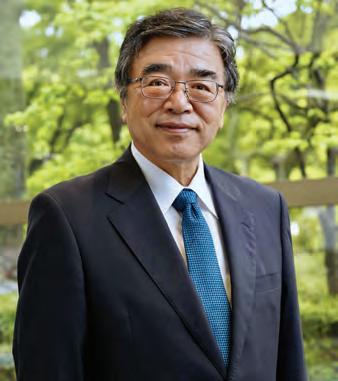
Takashi Kayamoto President & CEO
By 2035, Japan aims for all new cars sold to be environmentally friendly. Environmentally friendly vehicles in Japan fall under two categories: Clean Energy Vehicles (CEVs) –which include Battery Electric Vehicles (BEVs) and Fuel Cell Electric Vehicles (FCEVs) – and Hybrid Electric Vehicles (HEVs). According to the Japanese Automobile Dealers Association (JADA), sales of new electric vehicles in 2020 reached almost 1.4 million – of which 97.8% were HEVs – and accounted for 36.2% of total new car sales. As Japanese carmakers continue diversifying their fleets, innovative suppliers and firms creating new technologies will be key to helping them consolidate global leadership as the automotive industry electrifies.
With over eight decades of specialised industry experience, NHK Spring is one of the world’s leading spring manufacturers, with approximately one in every four cars worldwide using its automotive suspension springs. Roughly half of the world’s hard disk drives contain springs made by NHK Spring.
Initially a car parts business specialising in truck suspension for the Japanese automotive industry for clients like Toyota and Subaru, NHK now provides engine, transmission, and car seat parts, and is also deploying its spring-making expertise within the tech hardware industry through precision springs for hard disk drive suspensions. “Our springs are our key product and core growth driver. We focus on quality, innovation, and technological development. Springs are essential for many industries,” says NHK’s president and CEO, Mr. Takashi Kayamoto.
Still, Mr. Kayamoto believes supplying the automotive industry is its “bread and butter” and that NHK’s biggest advantage is that “we sell our product to all companies, not just a select few, which means we’re not dependent on anyone.” A diverse clientele base is also important for NHK’s future success in

an industry set to become one of the biggest arenas for carbon-neutral technologies. NHK is currently developing motor cores – a key component used in electric vehicles – and is moving ahead with R&D for new parts used in hybrid and clean diesel cars. NHK is also invested in ground-breaking companies like Sky Drive, which is developing zero-emission flying cars, as well as R&D to improve the safety of its driver seat technology.
Mr. Kayamoto also recognises the pace at which NHK’s other ventures are growing: “As for the non-automotive part of our business, it’s highly profitable and will be a solid investment. While the automotive business is our bread and butter, the non-automotive business is what we call a barbeque.” A harmonious mix between the automotive and non-automotive sides of the business is key, adds Mr. Kayamoto: “We see it as integral to the growth of the company and a way to reduce risk.”
For this reason, NHK is keen to partner with companies involved in the nonautomotive industries. Alongside R&D innovations in response to emerging customer needs, including a stage heater – a component for semiconductor manufacturing equipment –
and an integrated metal substrate with excellent heat dissipation, plus some of the industry’s most advanced R&D facilities – for next-gen materials, processing technologies, and the analysis tech and diagnosis fields – NHK offers prospective partners considerable advantages in accessing new markets. The company currently has 19 consolidated subsidiaries across China, the United States, India, Thailand, Mexico, the Netherlands, Malaysia, and Hungary, established presence in overseas via joint venture partnership. Mr. Kayamoto is also proud of NHK’s progressive workplace culture, which he believes to be its biggest asset in supporting new partners. By encouraging collaboration, collective accountability, and a highly aware workforce, NHK’s management ensures the company can rapidly adapt to customer needs, especially in new industries.
Ultimately, everything at NHK is done for its stakeholders, and the company’s management ethos, together with its consolidated market share, translates into an exceptional opportunity for investors. In FY22, NHK achieved net sales of JPY 693.246 billion – up 18.1% year-over-year – and an operating profit of JPY 28.838 billion – up 35% year-over-year. Meanwhile, in Q1 2023, the company’s net sales rose 15.6% year-over-year to JPY 179.293 billion, whilst between 4 January 2023-4 September 2023, its stock price by 39.82%.

Innovation is in NHK’s DNA, and the company’s ambitious pursuit of new opportunities not only makes for the ideal investment but also reflects Japan’s business environment as a whole. “Japanese companies such as ourselves are always creating new products – that’s how we do business,” states Mr. Kayamoto, who also emphasises the role that trust plays in Japan’s business community: “It’s part of our business culture, not just in the automotive industry, to put out clients first. We always fulfil our promises. It’s one of the biggest reasons to invest in Japan.”


As the world deals with the serious threat of climate change and the social structure transforms to reduce CO2 emissions, the electrification of the automotive industry will continue to accelerate, with hydrogen attracting attention as a clean energy source. Additionally, with the advancement of digitalization and automation, an increase in medium-to-longtermdemand is expected for semiconductor-related products. Daido Steel supplies high-performance materials to various industries such as aircraft manufacturing, energy, industrial machinery, electronics, information and communications, and medical equipment through its outstanding technological capabilities. As the social structure continues to change, Daido will continue to contribute to the “realization of a green society” by sincerely listening to the needs of people and taking on the challenge of going “Beyond the Special” to provide products that support changing lifestyles.
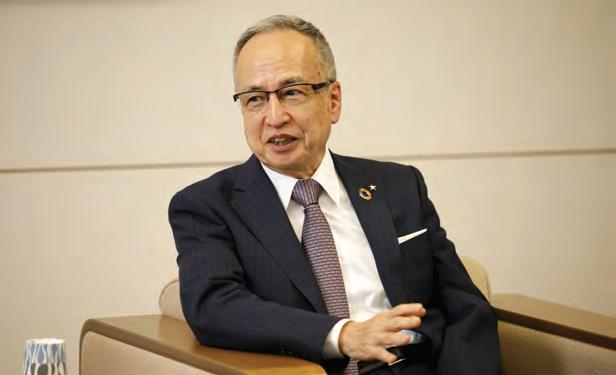
Takeshi Ishiguro Chairman
Japan’s steel industry is one of the country’s biggest arenas for technological advances, achieving rapid growth post-World War Two by supplying the automotive industry. In 2021, Japan was the world’s second-largest steel exporter at 33.8 million tonnes, according to Statista, with specialty steel exports alone reaching a value of USD 10.695 billion, according to the Ministry of Finance. Going forward, the industry’s shift from emission-intensive to carbon-neutral steel manufacturing is set to be its biggest achievement, whilst the global trend towards reducing CO2 emissions has greatly increased demand for high-value-added steel materials, such as those used in electric vehicles.
Since its founding in 1916, Daido Steel has positioned itself as Japan’s specialty steel manufacturer of choice. Distinguished by a unique catalogue of made-to-order specialty steel products and high-performance materials, Daido Steel has grown from a domestic pioneer into a global leader, with 13 plants and two research institutes under its ownership and a group of 33 domestic companies and 38 overseas companies.
When Daido Steel began operations, it primarily supplied Japan’s heavyduty industries, as the rise in industries like shipbuilding and machinery stimulated intense demand for steel production. Then, starting in the 1960s, Daido Steel saw an opportunity in the booming automotive industry. To meet the highly specialized, technologically sophisticated expectations of car makers, Daido Steel co-created unique material technologies with such car makers, expanding its expertise over time. Eventually, it merged with two specialty steel manufacturers, each with their own unique technologies, to form the Daido Steel of today, amassing a wealth of specialized technology and becoming one of the world’s largest specialty steel manufacturers in the process. “To put it simply, we became a one-stop destination for all aspects of the specialized steel industry in Japan,” explains Daido Steel’s chairman, Takeshi Ishiguro.
By the 1980s, Daido Steel’s dominant position in the competitive landscape provided it a platform for global expansion, which continued into the early 2000s. More recently, as it approached its 100th anniversary in 2016, the company unveiled a series of manufacturing reforms to help chart its next 100 years, emphasizing quality, efficiency, and innovation. “To this day, we’re devoted to perfecting the manufacturing process. We carefully examine our production facilities, and we’re constantly improving their efficiency. Our persistent efforts have culminated in a unique business model,” says Ishiguro.
To realize continuous business growth, Daido Steel makes strategic investments in high-value-added products where demand is expected to grow, including free forgings for aircraft engine shafts, gas turbine parts, and marine diesel engine valves. Daido Steel’s unique production process supplies distinctive products, such as clean stainless steel for semiconductor
manufacturing equipment. In addition to advanced steel products – such as steel for e-axle gears required by electric vehicles and hydrogen embrittlement-resistant steel used in the clean energy field – Daido Steel also manufactures ferrous metals such as NdFeB magnets for electric motors and new materials for storage batteries. Whilst the competition in Japan is tough, Daido Steel’s decades of expertise, acquired skills and technology, and sheer product diversity ultimately give it the edge. In response to requests for economic security from industries, moves to restructure the supply chain in the future based on customer needs are underway, as Ishiguro explains: “For example, Daido Steel manufactures and provides NdFeB magnets by building a supply chain that does not include China, a major country of mining rare earth elements. We are working to create new business opportunities while meeting the needs of our customers.”
Additionally, Daido Steel is keen to enhance its global presence, especially in Asia. Rather than starting from scratch with overseas manufacturing plants, Ishiguro explains the strategy is to create a new value chain to increase the value-added via partnerships: “It’s something we’ve been doing and plan to continue – producing custom-made products. We’re open to sharing our technology and collaborating to create custom products with the companies that approach us.”
For Ishiguro, such partnerships play into Daido Steel’s biggest asset as a supplier and manufacturer – uniqueness. “The individuality of each of our products is intricately tied to the client’s requirements. Rather than boasting about our success, we prefer that our customers appreciate what distinguishes our products.”Ishiguro points out that the products it makes for Honda will differ fromthose for Nissan, and the same goes for the aerospace sector. “What we’re doing cannot be replicated,” he says, adding: “For investors who appreciate distinctiveness, cutting-edge capabilities, and pioneering technology, we’re an excellent choice.” In FY22, Daido Steel achieved a 28.33% year-over-year increase in its consolidated net sales, which reached JPY 529.667 billion, and in the first eight months of this year, its share price rose a staggering 45.90%.
With a dedication to pushing ‘Beyond the Special,’ Daido Steel’s centurylong journey reflects the pioneering manufacturing spirit that sets Japanese companies apart. “Japan’s strength ultimately lies in monozukuri and the companies and skilled individuals who meticulously craft products with the approach that every detail matters. We hold craftsmanship in the highest regard, which is why Japan’s skill level ranks so highly,” says Ishiguro.


As highlighted by KPMG, “Japan has great potential to become a regional hub and R&D center in Asia.” This is attributed to its robust economy, a workforce brimming with talent, a dependable tax framework, and its longstanding culture of openness and innovation. In a proactive step to energize its private sector, the Japanese government unveiled an updated rendition of its ‘new capitalism’ strategy in June 2023. This strategy emphasizes the importance of investing in human capital, groundbreaking startups, GX & DX, as well as science, technology, and innovation. Paired with meaningful labor reforms, the aim is to boost productivity, thereby fostering a prosperous cycle in which rising income spurs increased spending.

Delving into the heart of Japanese entertainment, pachinko shines as an iconic and cherished pastime. Bearing similarities to a vertical pinball machine, pachinko thrives in countless parlors across the nation, offering players the thrill of trading their wins for exclusive prizes, which can later be converted to cash offsite. In a remarkable feat, the pachinko industry generated a whopping 26.2% of the leisure sector’s revenue in 2021, amassing JPY 14.60 trillion. To put this into perspective, this is not only more than the combined revenue of Japanese tourism and sports but also an astounding tenfold the amount the Las Vegas strip garnered. Modern parlors primarily feature ‘pachislot’ machines, characterized by captivating music, radiant lights, and dynamic LED displays showcasing animations. Despite facing challenges during the pandemic, the industry rebounded with the introduction of eased regulations and cutting-edge technologies like smart machines, sparking a notable uptick in pachinko-related stocks, as reported by Bloomberg.
Emerging as the standout performer on the TOPIX index in 2022, TSUBURAYA FIELDS HOLDINGS has established itself as more than just another player in the market. They are the leading supplier and manufacturer of pachislot machines, with the largest distribution network in the industry. Their success in parlors is backed by a powerful intellectual property (IP) arsenal, boasting hit series such as the renowned Evangelion series. But that is not all. As the overarching entity behind the vast content and digital realm of Tsuburaya Productions, they carry a legacy of 60 years. This studio has been at the forefront of creating globally resonant IP. One of their standout creations is ‘Ultraman’ – the brainchild of Eiji Tsuburaya. This Japanese superhero has transcended its original narrative, evolving into a global pop-culture phenomenon and gracing international media platforms such as Amazon Prime Video and Netflix. TSUBURAYA FIELDS HOLDINGS group is creating leisure experiences that resonate with the hearts of the future
generation, hoping to realize ‘The Greatest Leisure for All People.’ Driven by the core principle of enriching lives through thrilling leisure experiences, TSUBURAYA FIELDS HOLDINGS remains steadfast in its mission to amplify the value of its IPthrough diverse multimedia entertainment and immersive digital content. At the heart of their treasured IP portfolio stands Ultraman, hailed as Asia’s paramountheroic figure. Ever since winning its overseas rights in the USA Court in 2020, Ultraman has been pivotal in the global outreach of TSUBURAYA FIELDS HOLDINGS. This momentum was further accelerated with the launch of the critically acclaimed “Shin Ultraman” in 2022 and its subsequent feature on Amazon Prime Video. Building on this success, the company unveiled the world’s inaugural Ultramancentric attraction at Shanghai Haichang Ocean Park: “UltramanArea.” This theme park marvel boasts a grand 12-meter-tall Ultraman statue and meticulous recreations of iconic scenes from the beloved TV series.
“The timing was excellent because it coincided with the end of lockdown in Shanghai. People from all over China traveled to the site, and there was a waiting time of 4-5 hours just to enter. We also began selling trading cards in China, and our sales of those skyrocketed. We were not surprised to see a lot of copies of our character in China, but now people want the authentic Ultraman. Our operating profit grew tenfold compared to FY2020, up to 4.3 billion yen, as a result,” explains TSUBURAYA FIELDS HOLDINGS’ President and Group CEO, Mr. Hidetoshi Yamamoto.
Mr. Yamamoto further elaborates, “following this success, we expanded with new attractions in Dalian and Chengdu, China. Our partnership with Chinese enterprises has paved the way for around ten more prospective openings, all anchored by our cherished Ultraman. It’s heartening to observe that those who cherished Ultraman in their youth continue to do so, driving themto our attractions. As we continue to harness the appeal of Ultraman through fresh films and TV productions, we’re also contemplating potential franchising opportunities in the future.”
TSUBURAYA FIELDS HOLDINGS is now expanding its activities into China and Asia and aims to become a global company and premier global IP entity in the near future, with an ambitious target to double the operating profit of its content and digital business to JPY 9 billion by FY25. The company’s three-year strategy revolves around fortifying its foothold in China’s content and digital domains, utilizing digital tools like social media for IP creation. Armed with established brand equity, the plan extends to harnessing growth opportunities in the ASEAN region, specifically through trading cards, exclusive merchandise, and cutting-edge digital services that increase touchpoints to its IPs, alongside promoting e-commerce development to expand its sales network
efficiently. The roadmap for 2024 is promising. The company has also been approached to establish Ultraman Areas in multiple theme parks in Asia and is currently in discussion with relevant parties. This expansion will be bolstered by a highly anticipated Netflix Ultraman film – a collaborative venture with Tsuburaya Productions –destined for global audiences. In the future, the company aims for Ultraman to become a long-loved IP in multiple countries by producing films rooted in other countries’ cultures.
More broadly, TSUBURAYA FIELDS HOLDINGS hopes to achieve its global ambitions through strategic partnerships and by creating new IP and leveraging existing IP in line with market trends. “We’re interested in partnerships, of course. We have valuable IP, and by finding a local partner and granting a license, we hope to localize our works and produce local products – that’s the aim. We’re interested in large, holistic contracts that enable different players to use our IP,” says Mr. Yamamoto. In terms of supporting future partners, TSUBURAYA FIELDS HOLDINGS has recently opened an office in Singapore for the Asian market. The company also opened an office in Los Angeles in May to focus on the American market from 2024.

© TSUBURAYA PRODUCTIONS
best leisure to people. In a few years, there will be a new lifestyle where automated driving will be a part of everyday life. We’re not so much interested in automated driving but rather the free time it gives people to enjoy more entertainment. We’re always thinking about what else we can do to provide a better customer experience.”
Meanwhile, as the only nationwide distributor to the pachinko sector, its subsidiary FIELDS CORPORATION has carved out a unique, strategic position in the industry, with a network of branch offices and showrooms spanning 41 regions and 7,000 pachinko parlors across Japan, giving it a market share of 15%. Using data collected from customers and parlors, FIELDS CORPORATION is able to produce more ‘hit’ machines than others in the industry, which it does by leveraging its rich IP portfolio. According to the company’s research, machines based on ‘hit’ animation series outperform those based on new series or even well-known series, and as the market transitions to smart machines, FIELDS CORPORATION plans to continue providing unique and exclusive IP added value to manufacturers and parlors alike.
“Back when we started, it was impossible to show a game on the screen; you could only see numbers or letters. But we had a feeling that it could be done; eventually, we began applying popular animations to pachinko machines. At that time, we could not use popular animation characters in the machines because there was a technological limit,” says Mr. Yamamoto. “But today, the graphics and style of Japanese machines are much more advanced than the slot machines in Las Vegas.” Manufacturers can now display all kinds of animations – from music stars to popular television show franchises – enabling them to bring in new fans who might have previously only watched the show to play pachinko. Given TSUBURAYAFIELDSHOLDINGS’ high-valued IPportfolio, including popular television show characters and franchises, smart pachislot machines will only accelerate the company’s growth as the importance of exclusive IP comes to bear on the industry.
The multi-generational appeal of pachinko will significantly influence the market’s future stability, with TSUBURAYA FIELDS HOLDINGS poised at the forefront. As Mr. Yamamoto explains: “Our corporate philosophy is to provide the ‘Greatest Leisure for All People,’ including the older population. It differs from era to era and age to age what will be successful, but by being attentive to trends and the situation we are in, we’ve been able to keep providing the
TSUBURAYAFIELDSHOLDINGS’ ability to stay in sync and adapt to each new generation through trending IP has made it one of Japan’s biggest gainers in its current sky-high equity market. From the beginning of 2018 to the start of August 2023, TSUBURAYA FIELDS HOLDINGS’ stock price rose by over 376%, and by approximately 139% in the first seven months of this year. In just its pachinko and pachislot business, TSUBURAYA FIELDS HOLDINGS made an operating profit of JPY7.71billion in FY23 (compared to JPY 4.37 billion in its content and digital business). In the next fiscal year, the company aims to reach JPY8 billion in operating profit, followed by JPY 8.5 billion in FY24 and JPY 9 billion in FY25 – by which point the company aims to have a total consolidated operating profit of JPY 16 billion.
Above all, the mission at the heart of TSUBURAYA FIELDS HOLDINGS is to infuse joy and enrichment into the lives of both present and future generations of fans. This commitment is not just limited to producing hit pachislot machines or crafting new media around its iconic characters and narratives. A testament to this dedication is the establishment of The Ultraman Foundation in 2011. This initiative facilitates visits by Ultra Heroes to educational institutions and care centers in disaster-afflicted regions of Japan. In commemoration of the golden jubilee of the Ultraseven television show in 2017, the foundation launched the ‘Ultra Dream Project’, making a difference in the lives of children by visiting 600 child welfare facilities across Japan. Taking their benevolence a step further, the foundation coordinated special visits from Ultraseven and Ultraman Zero to ten educational centers in March 2023, all of which had suffered the wrath of a typhoon in central Japan. Reflecting on the ethos of the company, Mr. Yamamoto profoundly states, “If I were to encapsulate the essence of our success, it’s our unwavering dedication to invest both heart and soul into our endeavors.”


Aleading contributor to Asia Pacific’s rise into global prominence”, Japan has helped the region become “a global production powerhouse” with its focus on product design and higher value-added manufacturing, according to global professional services company PWC. Highlighting the country’s long-term investments in industry, infrastructure and technology, PWC notes that the country has “significantly enhanced human development levels” alongside its economic development.
This in turn has led to a high-income and quality-conscious consumer market, PWC says. This market is large and growing strongly – retail sales grew 5.3% in the year to June 2023, according to official figures.
This is a boon for sophisticated consumer businesses like Belluna. The company started as a catalogue shopping company focusing on apparel and other goods, but has expanded considerably. It now has eight business sectors: apparel and goods; cosmetics and health food; gourmet; nurse-related; database utilisation (call centres, distribution centres, and financial services); kimono-related (traditional Japanese garments); and property. Under each of these, there are various business lines: as part of its property business, Belluna operates 18 hotels, while it has five different kimono brands, and its nurse-related business is diverse enough to include both mail order for nurses, and recruitment.

“Common values are always crucial in any partnership,” he says. “What’s important is not to start big, but to start steadily, enabling us to check compatibility and build a strong bond over time.”
Investing in new ventures is only a part of what the company calls “healthy adventure”, that includes numerous ways of trying new things. Belluna aims to maintain such “adventures” within a range of 10-20% of its entire business. Some of the new ventures may not prove profitable, but those that do become strong pillars of the business.
Throughout, Belluna remains focused on three core aspects: customer satisfaction, employee satisfaction, and creating profitable companies.
“We are innovative and always strive for higher quality,” says Yasuno. “We adapt to trends and are flexible, to deliver what our customers want – while continuing to deliver the best in class. We want to keep excelling in our business areas and remain top choice for customers.”
Already known as a top catalogue business, the increasingly specialised Belluna is currently number one in Japan in mail-order shopping for wine, sake (the rice-based Japanese alcoholic drink) , and nurse-related items, and aims to retain that position over the coming decade; it is also one of the market leaders in the kimono retail industry .
“We are certainly open to strategic partnerships,” says Kiyoshi Yasuno, Belluna’s president. “We welcome the opportunity to be the supplier of choice for interested parties. We are also open to discussions about potential mergers and acquisitions. We encourage international businesses to consider us as potential partners, especially those interested in retail, Japanese culture, cosmetics, and related industries. We understand the value of partnerships and are eager to explore opportunities that align with our vision for the future. Together, we can achieve more and adapt to the ever-changing market dynamics. We know it can be challenging operating overseas and it is very beneficial to have a partner that has strengths in the market in question.”
Belluna has a strong record of partnerships around the world. Its overseas interests include hotels in the Maldives, Waikiki in Hawaii, and Colombo and Galle in Sri Lanka. Its development business has projects in Los Angeles, Kuala Lumpur, Colombo, and Yangon. It has formed a successful partnership with a Taiwanese counterpart in its cosmetics business, generating JPY3.1bn ($21.6m) ※FY March 23 in sales thanks to a strong and high-trust relationship. And in 2020, Belluna acquired Singaporean company Jobstudio, which hires personnel – particularly doctors and nurses – for the Singaporean market, seeing a strategic fit with its existing nursing products business. Yasuno says that further opportunities may arise for partnerships in Belluna’s solutions business in particular.
Tokyo-listed Belluna’s values, strategy, and outlook also make it an excellent investment. Its focus on growing areas including specialty mail-order and property are enhancing its position at a time in which the general catalogue business is seeing flatter growth.
“Instead of solely focusing on increasing sales, we prioritise profitability,” says Yasuno. “As a publicly listed company, we offer transparency and accountability to our shareholders. By investing in Belluna stock, they become part of a forward-thinking organisation with a bright future and potential for significant returns.”
Yasuno is similarly upbeat about the outlook for his country. The world’s third-largest economy has been characterised by slower growth in recent decades, but has reached a turning point, he argues – with a bright future ahead.
“Japan is currently undergoing significant changes, and looking at the stock market, Japanese stocks may appear undervalued at the moment,” says Yasuno. “However, the situation is set to change as more young people enter the business world. These young talents are like rough stones that can be polished into shining diamonds in the near future. I am impressed with the power and potential of the younger generation, and we are eager to harness their capabilities in our company. Japan is evolving, and we want global investors to have high expectations for the new Japan that is emerging.”


In recent decades, Japan’s accelerating external globalisation has netted it strong growth and closer economic ties with Asia’s fastestgrowing markets. Last year, Japan’s annual outward FDI flows rose to USD 161.56 billion, according to Statista, up 10.7% year-over-year, whilst between 2000-2019, FDI income from Japanese firms overseas soared from JPY 1.8 trillion to JPY 14.4 trillion, according to the Bank of Japan. On the flip side, Japan’s world-leading domestic infrastructure and government incentives for new R&D–including fast-tracked patent examinations –have made it a business hub for overseas firms.
Yasumasa Ninomiya President and CEO
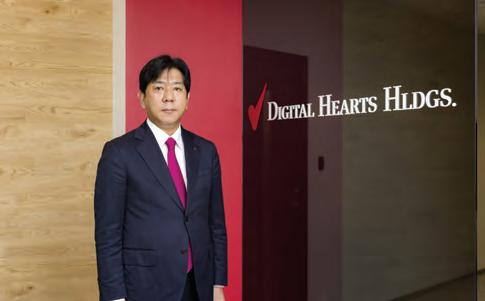
Since the 1980s, Japan has dominated the global gaming industry and is now the world’s third-largest video games market, with revenue projected to reach USD 46.18 billion in 2023 and USD 57.96 billion in 2027, according to Statista. Whilst the share of people in Japan playing video games on home consoles increased significantly during the Covid-19 pandemic –according to a mid-pandemic McKinsey survey, Japanese consumers listed at-home entertainment alongside groceries and household supplies in terms of spending importance –mobile gaming is projected to be the largest market this year, with a volume of USD 35.93 billion, according to Statista.
DIGITAL HEARTS HOLDINGS is a leader in Japan’s debugging and software testing sphere, with two main subsidiaries: DIGITAL HEARTS – Japan’s number-one debugging firm for console and mobile games, founded in 2001 – and AGEST – a one-stop quality assurance (QA) service for the global IT industry.
Beginning as a way to monetise Japan’s all-day gaming culture through a working space that paid dedicated gamers to find bugs in video games, DIGITAL HEARTS HLDGS underwent a ‘second founding’ in 2017, as its president and CEO, Yasumasa Ninomiya, explains: “Our chairman realised that if we stayed within just the gaming industry, the business would slow down, he believed it was time to jump into developing testing services for non-game software. After inviting some of the top leaders from other companies, we began to develop the ‘enterprise’ side of the business.” Five years after founding its non-gaming enterprise model, DIGITAL HEARTS HLDGSdecided to form a new subsidiary –AGEST –the next core company to DIGITALHEARTS, to manage the two business segments more effectively.
Currently, DIGITAL HEARTS HLDGS’ enterprise portfolio comprises QA solution utilizing advanced Integrated Testing Management Systems – covering everything from system integration and software testing, the process of finding bugs, to cybersecurity – and IT services, including IT support and security monitoring. Now looking to expand this range, AGEST is focusing on upskilling software development engineers to transfer their skills into next-gen QA engineering, with capabilities in both software development and the testing process, which only a limited number of engineers have. By FY28, the company hopes to have 500 next-gen QA engineers, a goal that its training program and AGESTacademy will support.
Ultimately, AGEST plans to become the leading global QA solutions provider, the key to which lies in developing original tools and infrastructure, as its president and CEO, Yasumasa Ninomiya, explains: “It’s necessary for
us to develop our own testing method. We are providing a new solution named “QA for development” that includes the know-how of the development side – which covers the pretesting stage – and that is a major differentiator from our competitors. For example, through providing automated testing or preparing for AI utilization as a service – it’s something other testing companies aren’t doing.” AGEST has already grown from JPY 1 billion to JPY 16 billion since 2017, and the company is now planning a spin-off listing for it in the next two to three years, as well as global expansion. As one of the few software testing specialists operating in Japan, AGEST is the ideal partner for foreign businesses looking to capitalise on a relatively underdeveloped industry.
Turning to the entertainment side of the business, Eichi Miyazawa is confident that DIGITAL HEARTS’ unique debugging method – DIGITAL HEARTS Quality (DHQ) – will help it become the global partner of choice for the gaming industry. For Eichi Miyazawa, positioning itself as a one-stop service is the key to DIGITAL HEARTS’ success, and as new trends such as Web 3.0 and the Metaverse arise, he wants to expand its range, whether through M&As, joint ventures, or strategic partnerships. “It’s essential for us to provide a one-stop service to our clients. We’ve already developed it in Asia, now we’re looking at Europe,” says Eichi Miyazawa, founder and chairman.
DIGITAL HEARTS HLDGS’s growth strategy is boosted by the fact that the Japanese are suited for debugging and QA. Eichi Miyazawa recalls an anecdote from the early days of DIGITAL HEARTS: “We entered a competition to see who could identify the most bugs, and we found a larger number of bugs, far more in comparison to the Microsoft team. Japan is known for quality assurance; Japanese people are the best in this niche.”
For investors, AGEST and DIGITAL HEARTS’ market leadership and planned expansion represent a significant opportunity, especially given the group’s exceptional financial performance in recent years. DIGITALHEARTS HLDGS grew at a CAGR of 16% between FY17-22, reaching record-high net sales of JPY 36.517 billion in FY22 across its two business segments, up 125.2% year-over-year, with double-digit growth in operating income to JPY 3.0 billion; by FY28 the target is a total of JPY 115 billion in net sales, with AGEST projected to reach JPY 80 billion. DIGITAL HEARTS HLDGS’s M&A target range for FY28 is between a few JPY billion and JPY 10 billion.
At the forefront of one of the world’s most significant gaming and tech sectors and a leading player in Japan’s IT renaissance, an investment in DIGITAL HEARTS HLDGS is also an investment in Japan, and, for Yasumasa Ninomiya, the time is now: “Japan is growing, and the structure of the IT industry here is unique. Each industry player is now becoming global, which comes down to two aspects: positive changes in the style of ITdevelopment and globalisation.”


In an age where economic growth is a challenge due to a declining population, Japan is capitalizing on its renowned culture of innovation to reinforce its traditional strengths. Central to this is the government’s ambitious ‘Society 5.0’ initiative, designed to integrate groundbreaking technologies like AI and IoT to propel human development into its next phase. Alongside digital transformation (DX), Japan is also keenly focused on green transformation (GX). A comprehensive GX roadmap was unveiled in December 2022, earmarkingastaggeringJPY150 trillionfor public-privatefinancingover the next decade to accelerate the sustainability efforts of businesses both in Japan and across Asia.
Founded in 1980, FORVAL Corporation has emerged as a cornerstone in this ambitious vision, expertly guiding SMEs in Japan and beyond in both DX and GX. With a forward-thinking approach encapsulated by its concept of ‘New Standard,’ FORVAL delivers top-tier consultancy services in five pivotal domains: information and telecommunications technology, overseas business, environmental stewardship, human resources and training, and entrepreneur andbusinesssuccession.Throughitsconsultancy services,FORVALsignificantly contributes to its customers by enhancing “Value proposition,” optimizing “Operating mechanisms,” and ensuring comprehensive “Risk hedging.”
Beginningasagamechanger inthemonopoly ofJapan’stelecommunications industry, FORVAL has harnessed decades of experience to aid SMEs in optimizing their profitability. As a case in point, FORVAL is enabling these enterprises to leverage big data analytics, thus transitioning from a traditional

Japan, the third-largest economy globally, boasts a sizable, affluent market of 125 million individuals. In 2021, Japan’s medical costs impressively reached $329 billion, as noted by the government trade body, JETRO. Health expenditure represents nearly 11% of GDP, according to the World Bank. Spending is high and likely to climb due to the country’s aging population; nearly 30% of Japanese citizens are aged 65 or over. It is perhaps the country’s most pressing social issue.
ELAN Corporation, a leading nursing care service provider, adeptly navigates these challenges by offering specialized products and services tailored for patients within the healthcare ecosystem.
“Our strategy centers on converting individual challenges into viable business opportunities,” remarks Hideharu Sakurai, the President of ELAN Corporation. “Through this journey, we offer services that genuinely touch our clients, bringing them joy and contentment. This method of molding services into successful business models has become our most potent asset and the cornerstone of our success.”
A highlight in ELAN’s offerings includes the CS sets—comprehensive rentable packages comprising clothing, towels, diapers, and other inpatient essentials. This all-inclusive approach eases the stress for patients and their loved ones during challenging times.
“There are no companies quite like ours in the world. In our domain, we’re unparalleled,” says Sakurai. “There’s a genuine need for this business and the overwhelming demand for our services attests to that.”
The statistics speak for themselves. ELANCorporation services 12.8%of Japan’s healthcare facilities, and of those outsourcing in this specific sector, they command
customer-first model to an innovative individual-first (B2i) approach.
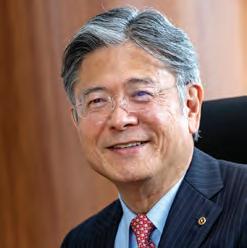
and CEO
Through its groundbreaking F-Japan project, FORVAL is magnifying its impact on DX and GX at the grassroots level, deploying specialized staff to approximately 1,700 local government offices across Japan. According to Chairman and CEO Mr. Hideo Okubo, “SMEs often lack the resources that larger companies have for meeting GXtargets. Our mission is to inspire themto take action and understand that GX is instrumental for their long-term growth.”
Moving forward, FORVAL is strategically positioned to solidify its status as the premier consultancy firm in Japan and throughout Asia, drawing on its triumphant ventures in Myanmar, Thailand, Vietnam, Indonesia, and Cambodia. Mr. Okubo emphasizes, “The essence of any strategic alliance is rooted in mutual respect and harmonizing philosophies, values, and cultures. We are open to forging alliances with companies whose visions resonate with ours.”
FORVAL’s partnership strategy is rooted in collaborating to generate meaningful social impact. With an abundant reservoir of knowledge, technological expertise, and a proven track record, FORVAL stands out as a premier partner. Mr. Okubo underscores, “We prioritize the satisfaction and gratitude of our customers, and this ethos equally extends to our partners and team members.”
In the initial eight months of 2023, FORVAL saw an impressive 24.95% surge in its share price. Thanks to its forward-thinking ESG-centric strategy, the firm is ideally poised to harness the growing demand for GX and DX facilitation. As both Japan and the wider Asian region aim to address the key challenges facing businesses and governments, firms like FORVAL will continue to play a crucial role in determining success or failure.

an impressive 30% market share, significantly surpassing their closest rivals.
For a remarkable fifteen consecutive years, Tokyo-listed ELAN Corp has demonstrated steady sales and profit growth. In 2021 alone, they reported a profit of JPY1.9 billion and an ROE of 27.9%, ensuring reliable returns for its shareholders.
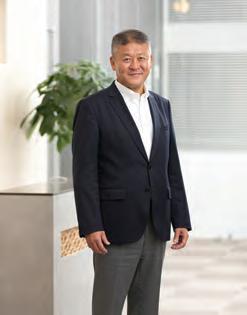
Navigating personal challenges in his early years, Sakurai’s entrepreneurial spirit and vision drove him to start a futon mattress venture. His astute business acumen and entrepreneurial spirit later led him to recognize an untapped opportunity in the medical industry, culminating in the creation and success of ELAN. Drawing from his background as a former professional racer, Sakurai emphasizes: “Racers need to be swift and precise,” he states. “In business, as on the track, rapid and accurate decision-making without mistakesisparamount–speed, coupledwithprecision, isof theutmostimportance.”
His aspirations now lie in driving ELAN’s global footprint, recognizing opportunities in regions where societies are witnessing an aging population and a growing demand for robust healthcare support systems.
“Be it through Joint Ventures, Mergers & Acquisitions, or strategic capital partnerships, we are versatile in our approach to collaborations to realize our global goals,” shares Sakurai.
With its pioneering stance in a country leading the way in senior-focused products, ELANemerges as the ultimate growth partner.
Japan stands at the forefront of innovation for products tailored to the aging population,” notes Sakurai. “The global community can greatly benefit from Japan’s pioneering advancements, and in tandem, Japan presents a wealth of investment opportunities.”


According to a July survey by The Asahi Shimbun, Japanese business confidence has doubled since spring of 2021; 76% of business leaders surveyed express belief that the economy is expanding, and that personal consumption is improving.
As Japanese businesses ride the post-pandemic economic high, so is its entertainment sector. Japan’s nightlife scene is dominated by karaoke, a regular fixture in major cities and small towns, with millions of people from all generations participating in karaoke sessions each year in an industry worth upwards of JPY 380 billion, according to Statista.
Founded out of a ramen shop, Koshidaka Holdings operates Japan’s largest karaoke chain. An on-trend entertainment pioneer for the past three decades with a unique revitalisation business model, the company now wants to bring the joy of karaoke to the rest of the world.
By focusing on renovating existing properties and opening karaoke rooms in high foot traffic areas, like downtown shopping districts and near train stations, Koshidaka has achieved rapid success. Its main brand ‘Karaoke Manekineko’ has about 620 stores, and the company operates about 16,000 karaoke rooms across Japan – a number it plans to double over the next five years. Customer-centricity is key to Koshidaka’s broad appeal, embodied by its multi-generational portfolio of brands like ‘MAFU,’ which caters for university students and ‘ASA UTA’ for seniors.
Koshidaka has opened 60 new stores in the past year, and its president, Hiroshi Koshidaka, plans to continue its overseas expansion into Southeast Asia. “Our priorities are Indonesia, Malaysia, and Thailand. Given Japan’s shrinking population, it’s essential we’re established in

According to McKinsey, by 2030, Japan could undergo “one of the most inspirational transformations of our time.” Japan has the right endowment, with smart citizens and quality assets; the technology to build is readily available, and the barriers to transformation are largely mindset-related.”
The business consulting industry plays a pivotal role in transforming Japan’s mindset. In 2022 alone, it generated revenues of JPY 5.8 trillion, as reported by Statista. Faced with an aging and shrinking workforce, Japan’s demand for HR-centric solutions and strategies to enhance organizational performance has surged in the past decade. Consequently, consulting firms addressing these needs have emerged as vital drivers of growth.
Established in 2000, Link and Motivation stands out as a leading Japanese business consulting firm. It seamlessly blends academic research, business administration, social systems theory, behavioral economics, and psychology to assist businesses in adapting to the evolving labor market and enhancing productivity.
Link and Motivation emerged in 2000 as a leading motivation-focused business consulting firm. Over the following two decades, the company has honed its core technology, known as ‘Motivational Engineering’. This approach perceives businesses as collaborative systems where performance ties directly to employee engagement and individual motivation. “I noticed a prevalent issue across companies: the challenge of enhancing and sustaining employee motivation,” observes Link and Motivation’s chairman and representative director, Yoshihiza Ozasa. “Upon researching various consulting firms, the lack of motivational consulting stood out.

other markets,” says Hiroshi. “Currently, there’s no competition in Southeast Asia, but we’re looking for local partners to help us.” Hiroshi also highlights the USA – specifically the West Coast – as a massive untapped opportunity, especially after the success of its ‘Wave 808’ branch in Hawaii.
Meanwhile, Koshidakaisemployingits‘entertainmentasinfrastructure’ philosophy to diversify its services portfolio. For example, its ‘Mira Poni!’ brand lets groups watch movies and play games in its karaoke rooms.
In December 2020, Koshidaka opened ‘AQERU MAEBASHI,’ a five-story entertainment and commercial hub with next-generation facilities like ‘HADO,’ an augmented reality (AR) sports venue, and ‘ENNICHI,’ which offers customers an immersive experience of traditional Japanese culture.
Koshidaka is the ideal investment proposition. “We’re already a success story, we have a proven track record, and with our vision of enhancing the global karaoke boom, there’s no way our corporate value will go down,” says Hiroshi. Between August 2022-August 2023, Koshidaka’s stock price rose 55.99%, whilst, in the first six months of this year, it rose 23.63%.
Above all, Koshidaka’s recent performance is a testament to both the resilience of Japanese businesses and the investment potential of their unique skillsets in an increasingly connected post-pandemic world.

I knew I had to address it.”
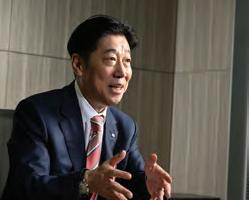
InFY2022alone, approximately 1,600 companies have benefited from the support of Link and Motivation. The company offers tailor-made solutions, providing revisions to a comprehensive range of services fromrecruitment, training, consulting on personnel systems, culture reform, IT skills support, to global human resources. Link and Motivation’s flagship product is its ‘Motivation Cloud,’ Japan’s first cloud-based product to measure, visualize, and deeply analyze areas of improvement in employee engagement using concrete and objective data.
The ‘Motivation Cloud’ has already found its way into major Japanese corporations such as Panasonic Holdings and Seiko Epson Corporation. However, Ozasa envisions a global market for the product. “We’ve established agency partnerships in Asia, specifically in Vietnam and Thailand, to facilitate its distribution. As we broaden our reach overseas, we’re enthusiastic about partnering locally or entering joint ventures. Our ultimate ambition is to penetrate the North American market, where I’mconfident that the ‘Motivation Cloud’ will strongly resonate with the U.S. audience.”
Link and Motivation holds a prominent share in Japan’s emerging employee engagement solutions market. Its wealth of information and data gives it an undeniable advantage, especially for the future landscape in Japan. According to the market research report “ITR Market View: Human Resources Management Market 2023” by ITR, the company has impressively been ranked No. 1 in sales amount and share by vendor in the employee engagement market for six consecutive years (from 2017 to 2022). This remarkable achievement highlights their leading position and prominence in the industry. ‘We’re witnessing a paradigm shift toward a serviceoriented society, transitioning from tangible assets to the prowess of human skills and innovative ideas. Human capital now determines Japan’s competitive standing. Looking ahead, an investment in our company’s shares is synonymous with a bright future,’ remarks Ozasa.”


In a country that has experienced some of the worst natural disasters in modern history, Japanese businesses have become masters of resiliency. According to a 2020 survey by Nikkei BP Consulting, Japan is home to more than 33,000 ‘shinise’ companies – businesses over 100 years old – and 1,340 companies with a 200-year history, representing 41.3% and 65.0%, respectively, of the world’s total. Besides a well-drilled focus on long-term, sustainable growth – which embraces the need to pivot and diversify – Japanese businesses place great cultural emphasis on values such as family business, community, and tradition.
Given the longevity of Japanese businesses, fierce competition within industries is the norm. This is especially true for the logistics sector. Japan ranked 13th on the 2023 World Bank’s Logistic Performance Index, and customers have come to expect an exceptionally high level of accuracy, reliability, and flexibility from providers, particularly in stressful situations like relocating offices or moving house. Some Japanese logistics businesses have taken their skills beyond just transporting goods to providing replacement merchandise, or even processing and returning goods to market – Japan’s reuse industry was worth JPY 2.7 trillion in 2019, according to Statista.
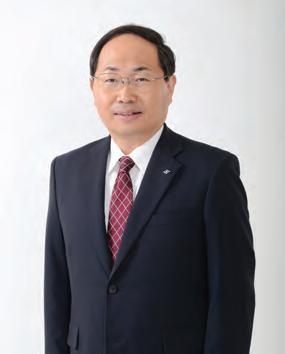
Tetsuyasu Tajima President
Beginning as a general cargo transporter over 50 years ago, Sakai Moving Service is one of Japan’s most successful moving service businesses, with a nationwide network of 210 branches across 47 prefectures and 12 subsidiary businesses.
“My parents started the business, and at the time, the business ran into difficulties. They racked their brains, produced new idea to provide our moving service on the weekends. But eventually, in 1979, we established it as our main business activity,” states Sakai Moving Service’s president, Tetsuyasu Tajima.
From that point onwards, according to Tajima, the company began an expansion phase that would culminate in a nationwide presence by 1993, aided by a memorable TV advertising campaign, and in 2006, following over a decade of quality-focused growth the company launched on the Tokyo Stock Exchange (TSE).
When it comes to moving, whether domestic or overseas, large-scale or familysized, Sakai Moving Service always puts the customer first, with cost-effectiveness and efficiency its two biggest assets, according to Tajima: “For example, whilst most of our competitors are limited to one relocation a day, we can carry out two within the same time.” As a result, in March 2023, Sakai Moving Service was

chosen by the government office to be responsible for relocation and transportation work between Tokyo and Kyoto, using its fleet of trucks to mobilise 1000 people for a total of 34 days.
Ultimately, Sakai Moving Service’s success today comes down to much more than its professional expertise as a moving business; it stands as a testament to how well the company has embraced new opportunities and capitalised on the aligned interests of its moving customers. With the aim to help families and businesses settle in as quickly as possible, Sakai Moving Service offers an extensive portfolio of services, including electrical engineering and cleaning services –with sales in this segment alone reaching JPY8.8 billion. Sakai Moving Service also operates a highly successful reuse business. “When people move, they leave behind lots of valuable things, such as TVs, air conditioner units, and furniture, that can be reused for something else. ‘Made in Japan’ goods are very sturdy and lend themselves to reuse. We are going to continue to grow the reuse business, and to address environmental tasks through the reuse business,” says Tajima.
Through a growth strategy aimed at accelerating existing synergies, Sakai Moving Service plans to become the world’s leading one-stop lifestyle support group. For Tajima, such an undertaking requires an aggressive M&A policy –Sakai Moving Service recently concluded a capital and business alliance with CANDEAL, a repair & inspection service and construction service – and he is keen for new partners to help the company expand its business interests globally. Having already established a strong European presence through acquisitions of moving businesses in the UK and France, Tajima’s focus is now on Asia, where he wants partner companies. And with over 800,000 completed moves and a wealth of customer data to leverage, Sakai Moving Service constitutes the ideal partner, particularly for overseas companies looking to tap into Japan’s high-quality moving services and reuse markets.
In an industry that prizes 100% reliability, Sakai Moving Service’s longevity speaks for itself. And for investors, it represents an excellent opportunity to enter Japan’s high-performing stock market. For the fiscal year ending March 31st, 2023, Sakai Moving Service registered a 5.5% year-over-year increase in total sales to JPY 109.556 billion and a 22.3% year-over-year increase in net income to JPY 8.21 billion. Looking ahead, the company’s 10% profit rate – a rarity in the logistics industry – puts it in an excellent position to reach its targets. “We’re the leading company in Japan with a steady increase in sales. Our medium-term aim is to reach JPY 140 billion in total sales across all business segments, strives to grow and develop as lifestyle support group” says Tajima. Alongside increasing its market share through partnerships, Sakai Moving Service is expanding into building maintenance, security services, and living environment maintenance to increase the number of touchpoints it has with customers and market share.
Sakai Moving Service epitomises everything that Japanese businesses have built their reputation on, from exceptional customer service and quality products to balancing tradition with the need to reinvent. As the company continues its journey, Tajima believes Japan will offer it a unique competitive advantage: “Japan is now facing a turning point where its ability to adjust and work with Asia constitutes a massive advantage. We’re the only country that can do it; it’s Japan’s time to rise.”


According to a July 2023 outlook report by the Bank of Japan (BOJ), Japan’s economy will “continue growing at a pace above its potential growth rate as a virtuous cycle from income to spending gradually intensifies the overall economy.” Alongside a substantial wage increase, the BOJ cited advances in digitalisation and increased investment in human capital as driving forces behind a strong flow of corporate profits and the country’s sky-high equity market. Going forward, the BOJ expects businesses to continue investing in research and development (R&D), decarbonisation, and strengthening their supply chains.
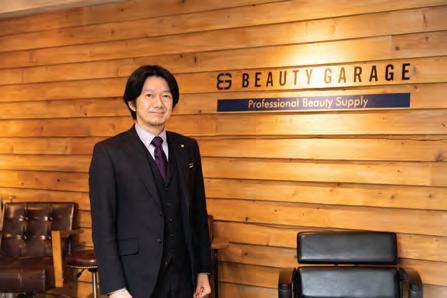
Japan is one of the world’s biggest beauty and personal care markets. Industry revenue currently amounts to USD 41.88 billion, according to Statista, with 23.7% of total revenue attributed to e-commerce. Japanese consumers value high-quality products and are willing to spend big to keep up with the latest trends. Consequently, beauty salons, which offer hair-related beauty services, and aesthetic salons, which offer cosmetic and anti-ageing treatments, have become embedded in Japanese everyday life. In 2021, the number of beauty salons reached 264,220, whilst in the last fiscal year, the value of beauty salon sales topped JPY 1.48 trillion and JPY 314.1 billion for aesthetic salons.
Founded in 2003, Beauty Garage is the leading B2B e-commerce business in Japan’s beauty industry and a game-changer through its unique distribution model and solutions for start-up salons.
Beauty Garage began as a reuse business for used beauty equipment until 2007when it began plans to develop its own products. Initially faced with unwillingness from Japanese manufacturers to invest in its vision, Beauty Garage forged its own path. “We used the roadblock as an opportunity; we designed products ourselves and manufactured them in Southeast Asia and countries like China and Korea to maximise their price competitiveness,” says Beauty Garage’s CEO, Hideki Nomura. “We chose not to follow the traditional Japanese distribution model, opting to go directly to salons through online sales.”
Despite the criticism it faced, Beauty Garage’s rule-breaking synergy of IT and direct sales proved a massive hit with salons and the company soon launched services to help salon start-ups with financing, insurance, salon interior design, real estate, and point-ofsale (POS) technology. Today, the company boasts a membership of more than 600,000 beauty professionals and continues to support aspiring beauty entrepreneurs launch their own salons. “Our biggest asset is the transformation of our e-commerce website into a SaaS marketplace platformto promote the industry’s digital transformation,” says Nomura.
Beauty Garage’s evolution into a tech company marks the beginning of a new era and will be crucial in achieving its goal of being Japan’s number-one B2B beauty product distributor by FY 2025. Partnerships will also be key, says Nomura, as the company
looks to expand its e-commerce product range – which currently accounts for 80% of wholesale sales – and enhance its human resources through a combination of M&As and joint ventures. “We’re already in negotiations with some companies for collaboration and M&As. Whenever the opportunity arises, we’ll be open.” Beauty Garage is also looking to expand overseas, having proved itself in Singapore, Taiwan, and Malaysia. Future partners will have access to an extensive range of collaborative opportunities as the company’s horizontal growth strategy favours diversification. “We’re venturing into fitness spas, gyms, and hot bath facilities. Our targets are always expanding,” says Nomura. Beauty Garage recently added fitness products to its online portfolio. Partners will also benefit from Beauty Garage’s progressive leadership philosophy, which blends top-down management with bottom-up ‘outside the box’ thinking to achieve sustainable, impactful growth.
Ultimately, Beauty Garage’s mission is simple: to make beauty fun. In an industry where reputation and customer loyalty mean everything, Beauty Garage’s numbers speak for themselves. A staggering 75% of all sales come from just 15% of customers – many VIPs accessing Beauty Garage’s VIP programme – whilst customer engagement numbers are soaring. In FY 2019, 29% of Beauty Garage’s 95,516 users –separate from its 600,000 beauty members –were return or frequent customers (making six or more purchases in a year); today, that ratio has risen to 40.5% of 162,006 users.
Beauty Garage’s market leadership and bullet-proof credibility have resulted in a rarity for the beauty industry –a listing on the Tokyo Stock Exchange (TSE) –representing a lucrative opportunity for global investors to participate in Japan’s high-upside equity market. Between August 2022-August 2023, Beauty Garage’s stock rose by over 60.8% and 26.0% in just the first six months of this year. “There’s considerable scope for further growth, especially with the rise in inbound tourism. Our future is very promising,” says Nomura. In FY 2024, sales are forecast to increase year-over-year by 14.1% to reach JPY 30.158 billion –almost double the results posted in FY2020 –and net profit by 22.0% to reach JPY 865 million.
Fromcars, clothes, and food to entertainment and beauty, Japanese culture is now a global phenomenon. Japan has positioned itself as a staple for Western investors, assured by its democratic values –Japan ranked 16th on the 2022 Economist Intelligence Unit (EIU) Democracy Index – and business freedoms. For Nomura, Japan now sits at a crossroads: “whilst many believe the economy is shrinking, we believe big change is coming. Japan’s economy will flourish by being more open-minded and embracing international partnerships. We see great opportunities ahead.”


According to the World Intellectual Property Organisation’s (WIPO) 2022 Global Innovation Index (GII), Japan is the world’s 13th most innovative country and fourth most across Southeast Asia, East Asia, and Oceania. Japan is a “leader in innovation,” according to the index’s measurement of innovation and economic development, and it scores amongst the highest in the world for how effectively it converts highcost innovation investments into high-quality products. Japan also scores highly in R&D, ranking fourth globally, as well as human capital, where it ranks third for the percentage of research talent in business.
Japanese innovation has helped it become the third-largest auto-producing nation in the world. In 2021, Japan produced 7.85 million vehicles, according to the International Organisation of Motor Vehicle Manufacturers (OICA). Of this figure, 6.6 million were non-commercial cars – the second-highest in the world by some margin. At the heart of the industry is the Japanese manufacturing philosophy of continuous improvement – monozukuri – which, together with the government’s social and environmental commitments, has encouraged the rapid adoption of new technologies like autonomous driving, electric vehicles (EVs), and hydrogen fuel cells. Honda, for example, has set a target for EVs to account for all unit sales by 2040.

Masahito Kanekuro President & CEO
that cannot be obtained through remote development, which has become the mainstream since the Covid-19 pandemic.
Founded in 1987, Honda Techno Fort began its business by operating as a testing department for Honda vehicles.
And over the years, the company has continued to develop new business areas and is now involved in the design, testing, styling data creation, and CAEfor many automotive components, as well as assembly (prototypes), vehicle management/maintenance, PG operations management, and public relations. Diversification remains a priority, as Masahito Kanekuro, the company’s President and CEO, explains: “We want to expand our portfolio beyond our core business of developing vehicle components to developing full vehicles.” In addition to this, IT system operation and intellectual property management are services that Honda Techno Fort has further established. In addition, an office in Ohio, USA, is involved in the design and development of US vehicles.
‘Going beyond the impossible’ is Honda Techno Fort’s motto, and the company is proud to share in Honda’s industry-leading innovation DNA. Honda is a one-of-a-kind company, unlike any other Japanese brand. Honda is able to build cars that exceed customer expectations,” said Mr. Kanekuro. Every year, Honda Techno Fort discusses its strategy and future goals with Honda’s R&D department, including what kind of cars it will develop in the next five to ten years. The company uses the information it receives to adjust its own skill set and ensure that its development is in line with Honda’s future needs. Furthermore, Honda Techno Fort emphasizes the importance of genba, genbutsu, genjitsu (Honda’s Three Reality Principle) in development. In other words, it is important not to do things in the desk but to go to the site, see the actual thing, and think about it realistically. This is essential for problem solving and enriches the company’s creative knowledge of automotive development. Mr. Kanekuro states that this way of thinking is something
Today, while Honda is rapidly shifting its focus to new technology development in a variety of areas, not just automotive development, Honda Techno Fort is involved in the development of many of Honda’s automotive functions, as well as minor model change vehicle development. We are a loyal partner to Honda, and by 2030 we hope to take on the challenge of taking on even more full-model changes for Honda.” We are also training several project leaders who can be entrusted with organizing and leading the development of a vehicle as a whole. In many ways, we already know many of the parts of a Honda vehicle, and we want to challenge ourselves to put the puzzle together and create the whole picture.
Gaining Honda’s trust to build its own designs will be a massive achievement for Honda Techno Fort, and Mr. Kanekuro believes that with its unique expertise, decades of experience, and philosophy of never giving up, it can level up its win-win relationship with the automotive giant for many years to come. Ultimately, ambition lies at the core of Honda Techno Fort and, as a long-term strategy, Mr Kaneguro states, “Once we are able to develop full vehicles, we may want to cross this river and aim for potential customers outside of Honda in the future.”
Either way, Honda Techno Fort has systems in place to ensure its accumulated knowledge will be passed on to the next generation and all new employees. Indeed, for Mr. Kanekuro, this – sustaining and passing on knowledge – is what sets Japan apart from South Asia when it comes to emerging technologies. He also believes the Honda brand maintains the same unity that has made Japanese industry so successful: “There’s a kind of national character that unites all manufacturing, technology, and R&D-related companies, a feeling of teamwork and responsibility to the whole process. It’s what defines Japan and creates a solid foundation for businesses here.”


Japan stands as the second-largest economy in Asia and ranks third globally, cementing its role as a major force in the financial world. The Tokyo Stock Exchange further underscores this dominance as the fourth-largest in the world by market capitalization, as noted by the financial services firm, Refinitiv.
Under the leadership of Japanese Prime Minister Fumio Kishida, there’s a heightened commitment to advancing the country’s capital markets. This commitment was evident in September 2023 when he actively participated in “Japan Weeks.” This series of events, orchestrated by the Financial Services Agency, was a clarion call to promote capital markets. The gatherings served as a platform for domestic and foreign investors, emphasizing the importance of proactive asset-building.
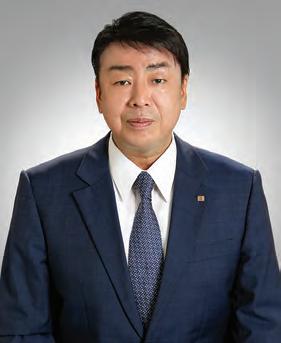
Hirofumi Tamada President
Ichiyoshi Securities stands prominently in this rapidly evolving sector, distinguishing itself with an innovative investment strategy and philosophy.
Hirofumi Tamada, Ichiyoshi’s president, proudly shares, “We pioneered the shift from a fee-based corporate income approach to one that emphasizes asset management advice. Our goal? To ensure our customers’ assets grow safely and consistently.”
Tamada continues, “We refrain from short-term deals, even if there’s an immediate profit. Why? Because our customers’ long-term benefit is our priority. We’re not here to deplete our customers’ assets. We don’t push trendy products that don’t align with our clients’ best interests. Instead, we offer insightful advice, instilling confidence in their financial decisions. Our approach to service is built on a foundation of trust and expertise. We mirror Edward Jones, a U.S. financial services firm, in our client relationships, ensuring transparency and consistency. This unwavering approach fosters mutual trust, leading to satisfied customers who continue to invest with us. It’s more than just a method—it’s our philosophy.”



At the heart of Ichiyoshi’s ethos lies a steadfast commitment to being a trusted and preferred boutique brand in the financial services domain. This commitment extends to every stakeholder. We value the uniqueness of our employees, nurturing talent and fostering growth; we aim to be the top pick for every client; we continuously strive to enhance performance and boost shareholder value; and, importantly, we take an active role
in advancing the broader financial and securities markets for the benefit of society.
Tamada draws a distinction between Ichiyoshi and other brokerages. Ichiyoshi takes a curated approach, specializing in medium- to smaller-sized growth companies. This refined strategy has borne fruit: Ichiyoshi’s assets under custody swelled from JPY400 billion to JPY2trillion in just two decades. This robust growth translates directly to investor gains, with investors reaping either 50% of Ichiyoshi’s profits or 2% of the net asset every six months.
In April 2023, Ichiyoshi unveiled its ambitious “3D” medium-termmanagement plan. By March 2026, the firm aims to manage JPY3 trillion in assets, achieve a 10% return on equity, and a 70% cost-coverage ratio. To realize these goals, Ichiyoshi is set to broaden its assets under custody by introducing offerings tailored to align with clients’ investment objectives. Ichiyoshi emphasizes not just offering these solutions but also maintaining regular engagement with customers, ensuring that their investment needs are continually followed up.
A defining feature of Ichiyoshi is its esteemed research division, the Ichiyoshi Research Institute (IRI). This division shines for its expertise in smalland medium-cap growth companies. In 2022, the IRI achieved an impressive feat by topping the Best Research House Rankings in the small-and mediumcap stock category for the 19th year in a row. Demonstrating its unparalleled reach, the institute boasts an access ratio of nearly 17%, eclipsing its closest competitors by asignificantstretch. IRI delves intovarious burgeoningsectors, notably IT and high-tech industries. Each year, they produce comprehensive analyses on approximately 500 companies and publish over 3000 additional reports for investors, encompassing in-depth industry insights.
“Japan’s domestic market holds immense promise,” remarks Tamada. “At times, the barrier for investors is simply the absence of accurate information. Our strength lies in bridging that gap; providing insightful data becomes our edge.”
Ichiyoshi’s core values emphasize societal contribution, which naturally aligns with its focus on sustainability. The company’s endeavours stretch across various facets of sustainability: from the environment and the larger community to individual stakeholders like employees, shareholders, and customers. Its commitment resonates with the United Nations’ Sustainable Development Goals. This is evident in its multifaceted initiatives, from fostering a vibrant and inclusive work environment and reimagining asset management for an aging global population to championing child health and well-being projects.
Ichiyoshi is ready for the future, embracing both its challenges and opportunities. In this sense, it embraces the Japanese vision – taking a longterm view and putting trust and value creation first.
“Japan is engineering-driven by nature,” says Tamada. “We have a lot of good corporations, and we have a system and culture of protecting and growing our assets. In this respect, Japan is number one in Asia. Our Prime Minister champions this strength of our nation, and the momentum feels perfect. All signs point to growth – making Japan a compelling investment choice, so why not invest in Japan?”


Japan’s economy experienced a remarkable surge, growing at an annualized rate of 6% year-on-year in the second quarter of 2023. This growth nearly doubled what economists had projected. A significant boost in exports played a pivotal role in this economic achievement, pushing net trade to unprecedented levels. Echoing this uptrend, Japan’s construction industry is witnessing “robust activity,” as highlighted in a recent report by the global professional services company Deloitte. The report projects that the construction sector will contribute a staggering JPY62.1 trillion to the economy this year.
In the competitive construction materials sector, Vertex stands out distinctly. Offering a diverse product range—from concrete to netting that controls rockfalls— the company boasts a comprehensive portfolio of construction materials designed to instill peace of mind. By leveraging proprietary technology and an extensive nationwide network, Vertex can respond swiftly to any situation. Their products cater to a variety of fields, including sewers, roads, agriculture, and railroads, with a particular emphasis on flood control and disaster prevention.

Tsuchiya President & Representative Director
Recognizing the constant threat of natural disasters, Vertex offers unparalleled products tailored for a society frequently confronted by such calamities, consistently prioritizing the safety of families through innovative, market-leading solutions. “We create something truly unique, a product you won’t find anywhere else in Japan, or even worldwide, and this is our key strength,” says Akihide Tsuchiya, President & Representative Director of Vertex Corporation.
“Our company’s primary product is sturdy precast concrete, known for its excellent functionalities. We possess this exceedingly rare, unique product, which is our core strength. We’ve dedicated significant effort into developing this distinctive product alongside our more conventional offerings. While many competitors lean towards more generic, easily duplicated products, our emphasis on distinctiveness positions us ahead of the curve.”
Vertex prides itself on its strengths in product development and technology. The majority of its products are innovated in-house, boasting the highest number of patents and utility models in the industry. The company consistently seeks blueocean opportunities, areas untouched by competitors.
Given Japan’s vulnerability to natural disasters such as earthquakes, typhoons, and torrential rains that often result in flooding and landslides, the need to protect human lives becomes increasingly paramount. Recognizing this, Vertex has positioned itself as the leading company in the disaster prevention and mitigation
For Tsuchiya, the prevention of damage from natural disasters stands at the forefront of the company’s mission. Vertex is dedicated to supporting communities, households, and individuals with its distinctive offerings, aiming to make a meaningful difference by reducing the impact of disaster-related damages.
Vertex’s rich history stems from the amalgamation of four distinguished companies. Hanex, Haneda Concrete Industry, and Nippon Zenith Pipe, each with a legacy spanning 80-90 years, united in 2014. They were later joined by Hokukon in 2018, a major precast concrete manufacturer with six decades of expertise. This merger facilitated the horizontal integration of Japan’s top precast concrete manufacturers, leading to synergies that birthed a conglomerate greater than the sum of its individual components. Among the 500+ precast concrete manufacturers in Japan, Vertex stands out, ranking first in sales volume as a conduit product maker.”
The consolidation drive that created Vertex achieved both horizontal and vertical mergers, fromwhich a fresh strategy emerged. The business eliminated unprofitable business lines and revitalized others, with a keen focus on profitable ventures. This approach propelled Vertex at the top of industry profitability. Its asset value, which stood at JPY13.4bn in 2018, has surged to JPY47.5 billion — a staggering 3.5-fold increase, attesting to the efficacy of its strategy.
Tokyo-listed Vertex stands as a pivotal opportunity for investors keen on tapping into the Japanese construction sector, all while benefitting from the company’s innovative product lineup and ambitious vision. For the fiscal year ending March 2023, Vertex reported sales figures of JPY39 billion, marking a 4.2% ascent from the prior year. The company’s value proposition for investors is further accentuated by its sustained stock performance: its share price skyrocketed from just over JPY350 in December 2018 to an impressive JPY1500 by summer 2023. Such robust performance is bound to capture the attention of discerning international investors.

As Tsuchiya notes, while the company is currently focused on catering to the high demand in the Japanese market, companies across the globe can benefit from Vertex’s technology. Many countries face the risk of natural disasters and could utilize the company’s products to ensure safer, more resilient structures. “If an international company is interested in our technology, we are open to collaboration,” says Tsuchiya. “Looking ahead, we aim to forge partnerships by showcasing our distinctive products, such as the high drop manhole, Spiral Hole, designed to counteract flooding damage, and preventive nets to counteract mudslides and rockfall-related incidents.”




Vertex’s growth is rooted in Japan’s unique challenges —not just its seismic and climatic conditions, but also its emphasis on fostering innovative, problem-solving businesses that address global needs. “At Vertex, our mission is to do what only Vertex can do. The keywords are Safety and Security” says Tsuchiya. “Our commitment stems from Japan’s vulnerability to diverse natural disasters; we constantly confront the potential of calamities. Mitigating the harm these disasters cause while providing the highest quality innovative products is our foremost objective.”

necessary.”

With a GDP of USD 4.231 trillion as of 2022, Japan is the world’s third-largest economy, according to the World Bank. SMEs dominate the economic landscape, accounting for 99.7% of all businesses and employing 70% of the workforce, according to ministry data.
Japan is committed to becoming net-zero by 2050, and helping SMEs embrace environmentally friendly energy sources will be vital to realising a sustainable future and a more competitive business community.
Founded in 2005, Gremz provides Japanese SMEs with environmentally friendly, cost-cutting energy solutions. Gremz specialises in photo-voltaic systems for businesses, storage batteries, and electricity retailing services for low and high-voltage clients and is listed on the Tokyo Stock Exchange (TSE).
Since spotting a gap in the market for SME-focused energy services, Gremz has grown its customer base to 60,000 factories. “SMEs need costefective energy solutions. In the past, there wasn’t much of a support system. What we’re doing is niche, but the market potential is huge,” says Gremz’s president, Masomi Tanaka.
Gremznowplans tosetupsolar panels onfactory rooftops toencourage nationwide solar adoption. Most importantly, Gremz understands the need to provide confidence to those, including households, thinking about making the switch, as Tanaka explains: “There’s a lot to do to cover all of Japan, and solar panels only work when the weather is fair, which is why we’re developing storage batteries that save electricity to fill in when

According to a September 2023 government report, Japan’s robust economic recovery has generated a promising pickup in capital spending and private consumption –which accounts for over half the economy –and boosted corporate profits.
Keen to reassert its electronics dominance on the world stage, Japan plans to triple the sales of chips made in the country to JPY 15 trillion by 2030. Promisingly, in 2022, Japan’s electronics industry registered an 11.7% year-over-year rise in exports to JPY 12.52 trillion, according to Statista.
Founded in 1952, Takachiho Koheki is a leading technology trader and services provider specializing in cutting-edge electronics for domestic and overseas markets.
By integrating product sales and added-value services, Takachiho Koheki has achieved astronomical growth in recent years, as its president, Takanobu Ide, explains: “Since I became president in 2018, our stock price has tripled, from approximately JPY1,000 to over JPY3,000, which is due to the growth in our financial performance as well as our enhanced shareholder returns. We cover everything from consulting to installation and after-sales service. It’s a unique approach for a trading company.” For example, one of Takachiho Koheki’s cloud service and support contracts – “MSP (Managed Service Provider) Service” – includes system design and construction, equipment, operation, and maintenance as standard. Similarly, Takachiho Koheki’s business and retail solutions – from advanced ofice security, access control systems, and authentication devices to shop surveillance systems and trafic counter security systems – come with 24/7 professional customer support. “We’re a one-stop service. About 40% of our employees are engineers and understand the

Masomi Tanaka President
Gremz’s biggest strength is its tight-knit customer base, and the company is quick to seize new opportunities. “We’re very welcoming when it comes to partnerships and joint ventures. We like to visit all of our clients one by one; there are no competitors that do this. If a new company wanted to replicate our model, it would be near impossible,” says Tanaka. Gremz’s knowledge of Japan’s energy regulations makes it the ideal local supplier for foreign firms, and the company is also open to partners utilising its network.
Stability against fluctuating electricity prices and rapid installation has allowed Gremz to move fast to fill gaps in the market –which its employees are experts at identifying – and the company’s win-win proposition has resulted in over 17 years of consecutive increases in sales. In FY03/2023, Gremz achieved net sales of JPY 31.392 billion – a year-over-year rise of 35.0% – and an operating profit of JPY 3.600 billion – up 46.9% year-overyear – whilst foreign investment has increased to 12% of all investment by the end of FY03/2023.
Ultimately, Gremz’s mission is to improve society and inspire businesses. “Some companies don’t have enough information; we want to share our knowledge,” says Tanaka, adding: “The key for local businesses like us is to facilitate the opportunities Japan’s huge market provides. Those kinds of partnerships are always win-win.”

technicalities of the products. This allows us to provide a one-stop service. It’s why we have 25,000 long-term customers.” says Ide.
Takachiho Koheki also offers customers a comprehensive lineup of highperformance semiconductors, ICs, electronic components, and sensor products tailored to suit their needs, whatever industry they operate in.
“Under its ‘Movement Solutions’ initiative aimed at creating a comfortable living environment, Takachiho Koheki provides a range of mechatronics products.

These include hardware and cable solutions, power supply products, EV charging connectors, slide rails, and hydraulic lift systems. These products are designed for both home and industrial machinery applications.
Takachiho Koheki is currently looking for global partners in semiconductors and mechanical components in China, the USA, and Southeast Asia. “As for total sales, domestic accounts for 70% and overseas for 30%. We’re deeply rooted and highly successful in Japan; now we want to expand internationally,” says Ide.
For inbound companies keen to partner with a local distributor or cloud services provider, Takachiho Koheki is a gateway to the Japanese market. Indeed, as the country’s GDPand export competitiveness go from strength to strength, now, says Ide, is the ideal time to invest in Japan: “It’s the perfect investment destination, especially for overseas investors given the yen’s depreciation. Our political climate is stable, and we’re still one of the world’s economic giants.”


The world’s third-largest economy, Japan is one of the great economic success stories of the modern era.
One of the drivers of this success has been Japan’s trading companies, which capitalise on the country’s productive capacity, excellent infrastructure, and large domestic market.
O’Will Corporation is more than just a trading company – it positions itself as a market-builder, creating added value for its customers by developing new supply sources, client networks, and market potential. Its combination of the detail-oriented approach of a speciality seller and broad range of a general trader makes it unique. It handles a range of products from food additives (where it has a 13% market share of ascorbic acid in Japan) through dairy products (a 10% market share in pasteurised milk), beverages, and wastewater purification and ceiling fans (HVLS) for food factories and logistic centers.
“We are always seeking partners and investors,” says Hideki Oguchi, O’Will Corporation’s Chairman. “We are particularly interested in partners who bring expertise and a network of infrastructure and logistics; we’re also open to M&Ato grow. We want to expand to new markets, particularly in the USA and Southeast Asia –we can be a distributor and supplier of choice for our partners.”
Oguchi founded O’Will in 1986, following a desire he had since he was a student to build a company from scratch. The company’s founding team of eight experienced people developed the business, and within a decade it had developed strong sales channels, and Oguchi created a strategy for the coming years. In November 2008, following the company’s long-term plan, O’Will launched an IPOon Tokyo’s JASDAQexchange. This achieved widespread public recognition that the company has leveraged to attract talent, and helped build the corporate strength to turn its new business concepts into reality. Investors in the stock have repeated the rewards - O’Will’s consolidated operating income grew

As Japan’s core inflation held above the Bank of Japan’s 2% target for the 16th consecutive month in July 2023, the country’s decadeslong struggle against deflation seems to be at an end. Japan’s economic progress is welcome news for inbound investors, who can now reap the rewards of its future-ready business community with confidence.
Japan is committed to reaching carbon neutrality by 2050, and businesses have responded with overwhelming financial support. According to Reuters, the volume of sustainability, social, and green bonds sold domestically increased a staggering 47 times between 2016-20, reaching JPY 2.1 trillion.
One company leading the way in Japan’s green finance market is NEXYZ. Group, whose flagship financial business, NEXYZ.ZERO, provides embedded finance for energy-efficient products such as LED lighting with zero upfront investment.
NEXYZ.ZERO has already amassed 100,000 customers and a product catalogue of 490,000 items since its inception, according to Mr. Takami Kondo (NEXYZ.Group’s president and CEO), who terms the service ‘Lease 2.0.’ And with formal support by Japan’s Minister of the Environment as well as a world-first AAA accreditation from Moody’s for its securitised lease bonds, Kondo has set his sights high: “ Our goal by 2025 is to reduce 2 million tons of CO2 through the service, which is equivalent to the annual CO2 emissions of the Westminster area in London or Shibuya in Tokyo. ”
To help introduce new clients, NEXYZ.ZERO has partnered with 52
to JPY942m in the financial year ending March 2023, up 14% from the previous year, and 40% from 2020.

“We have a strong growth strategy in place, and a new generation of management focused on that plan,” says Oguchi. “Our market value is JPY3bn now, and there’s so much room to grow by building our client base.”
In 2019, Oguchi appointed Kazuki Date as a new president & COO together with new young board members, through whom he is willing to accelerate the company’s growth.
As a relatively small company, O’Will can make decisions quickly, which is a competitive advantage as it enters new markets overseas. The company focuses first and foremost on building credibility and value with its clients, such as big food and beverage companies , with the knowledge that business growth will follow. Sincerity and reliability in relationships is essential to its approach – as is supporting its home market.
“We care about Japan’s growth story, and want to promote our country,” says Oguchi. “Japan is rich in knowledge and experience to tap into. Supply chain and logistics are important for Japan’s growth, and the country needs partners to support these industries.”

banks – over half of all Japan’s banks. But the company is also keen to collaborate with local governments, such as by providing LED streetlighting – Japan plans for LED usage to reach 100% by 2030 – and energy-efficient products to hospitals, fire stations, and indoor farms. “None of our clients pay the construction or initial costs,” says Kondo, who estimates that 15,000 new businesses would have benefitted from the service in the past year.

NEXYZ.Group is also open to international partnerships, whether through joint ventures, technology transfers and collaborative R&D, or as the supplier or distributor of choice for energy-efficient products. Most importantly, NEXYZ.Group’s unique business model allows partners to gain the firstmover advantage through popularising new paradigms and markets. “We have exceptional sales and planning abilities, and if we’re not sure we can become number one in a market, we won’t enter it,” says Kondo.
As businesses across Japan navigate the post-pandemic era, services that provide cost savings with zero initial expenses like NEXYZ.ZERO will inevitably see higher demand. Paired with NEXYZ.Group’s discounted, postpandemic share price and strong growth last year, this makes it the ideal investment opportunity.
More broadly, for Kondo, now is the perfect time to invest in Japan: “We have exceptional infrastructure, high academic standards, and our goods are about 60% the price of the USA’s. It’s essential we attract more foreign talent, and companies like us must lead the way and tell Japan’s story to the world.”


Strong consumer demand backed by a robust labour market have bolstered Japan’s growth in 2023, according to a recent briefing by global professional services company Deloitte.
The manufacturing sector is also picking up, showing its strongest growth in a year in both output and new orders in May 2023.
Japan has long been renowned for its world-leading innovative manufacturing companies, and Benda Kogyo is a stand-out example. Founded in 1964 by Kazuyoshi Yashiro, the current company president Kazunari Yashiro’s grandfather, in 1975 the company received patents for “the Benda Method” for cold-bending steel. This enables 95% material yield, and dramatically raises processability and productivity. The company’s technology gives it a unique edge in supplying the fast-evolving global automotive industry.

“We can provide high quality products for combustion, hybrid, and electric cars,” says Kazunari Yashiro. “We are now preparing for the transformation of our business structure to respond to the great transformation in the automobile industry that will happen in the next years. We will have an ever-greater percentage

As Japan strengthens its economic recovery, its biggest industries are regaining momentum. According to the World Travel & Tourism Council, Japan’s travel and tourism sector’s GDPcontribution will reach USD285.5 billion in 2023 and drive a 553.4% surge in international visitor spending to USD 16.8 billion. One standout sector is wellness, with pioneers like Slim Beauty House leading the way.
Centered around holistic concepts of beauty, health, and wellness, Japan’s beauty industry’s focus on both physical and psychological therapies has gained significant popularity worldwide. According to the Global Wellness Institute, Japan is now the world’s third-largest –and Asia’s second-largest –wellness tourism destination.
Founded in Tokyo, Slim Beauty House is a technologically advanced beauty company with a unique, research-driven program that combines Oriental aesthetic principles with modern science to impact both the mind and body.
In a time of booming economic growth in Japan, where a rising health consciousness was juxtaposed with increasing health issues, Ms. Saiko Nishizaka took action. As the leading force behind Slim Beauty House, she was driven by the principles of Oriental medicine, which focus on inner health and well-being. With this in mind, she launched a research institute in Shinjuku in 1980. This was succeeded by the opening of an acupuncture and moxibustion clinic in 1983. By 1987, her vision was fully realized with the establishment of Slim Beauty House, which offered courses as a fresh alternative to conventional treatments.
Today, Slim Beauty House operates 60 luxurious beauty spa salons and clinics and offers a range of services. These include cupping, and cup drainage – a novel treatment method that combines cupping therapy with lymph drainage practices and Yin-Yang aroma treatments that harness the five elements to bring balance between mind and body. “Blood circulation, lymph flow, and meridian balance are essential foundations for
of our business from hybrid and electric vehicle manufacturing. We always invest in R&D and innovation, which has led to more growth – and we want to grow more.”

Kazunari Yashiro President
Over the years, the company has expanded across Asia, with facilities in Japan, China, Korea, Thailand, and Vietnam. While working internationally, Benda Kogyo, a third-generation family business, has retained a united corporate culture founded on the philosophy of Yasuhiro Yashiro, the current company president Kazunari Yashiro’s father, – “quality is vital”. Benda brings its Japanese quality and operational excellence, as well as integrity and style, to its partnerships around the world. This combination led to the company being awarded “Minister of Economy, Trade and Industry Award” in the “Manufacturing Japan Awards” in 2009.
Benda Kogyo counts leading Japanese steelmakers among its suppliers, while trading partners are major domestic and international automobile manufacturers and global Tier 1 manufacturers.
“We have a range of business partners integrated into our group,” says Yashiro. “We have good partnerships in every market we operate in. We won’t achieve the growth we want on our technologies alone, so we’ll make further partnerships, whether Japan or overseas.”
As a unique, niche business, which is privately owned, Benda can move quickly to seize opportunities that come its way, including in activities with its partners. The company places a great importance on communication, which is appreciated by those with which it does business.
As it undertakes its transition, Benda will continue to enhance its environmentally-friendly technology, while also accelerating its digitalisation. As Kazuyoshi Yashiro said: “Let’s bend the world’s iron!”
holistic well-being. My approach emphasizes healthy weight management and slimming. I aim to support individuals in their journey towards achieving their personal wellness goals,” says Ms. Nishizaka.
Slim Beauty House’s therapies undergo meticulous, uncompromising research, carving out their towering competitive edge.

The company has showcased its findings – most notably its weight-loss technique using enzyme-based supplements combined with electric muscle stimulation (EMS) – at over 30 academic conferences both in Japan and internationally. Moreover, the acclaimed Slim Beauty House Academy offers accredited, world-class training programs. Their deeprooted expertise in proficient human resource nurturing stands as their crowning strength.
With an expansive global vision, Ms. Nishizaka ardently seeks formidable strategic business alliances and adept product distributors. “Premium hotels align perfectly with our vision, particularly those emphasizing wellness tourism.
Internationally, we’re actively searching for partners well-versed in marketing tailored to their respective countries. In exchange, we bring to the table our distinguished Japanese brands, premium products, certified therapists, and profound academic expertise, ” she articulates.
Slim Beauty House presents an unparalleled investment proposition in Japan’s burgeoning medical tourism space. Their clinics represent an evolved fusion of beauty treatments and holistic medical care. With plans to amplify the number of clinics, particularly designed for beauty and slimming, there’s an anticipation to cater to foreign clients visiting Japan for beauty retreats. The clinic model, inherently more appealing, offers a ripe opportunity for potential investors or travel agencies willing to forge partnerships.
Beauty treatments pave the way to holistic medical care, a bond that’s set to grow even stronger in their state-of-the-art clinics. Yet for Ms. Nishizaka, it’s more than just a commercial endeavor. She envisions a future where Slim Beauty House becomes emblematic of Japanese health excellence. More than a mere expansion plan, this is a golden chance to highlight Japan’s distinctive approach to health and wellness to the world. As economic booms often bring health challenges, the insights from Japan’s past are now visible across Asia and beyond. Today, there’s a growing demand for the exceptional hospitality and slimming expertise honed in Japan.


According to a July 2023 economic outlook report by the Bank of Japan (BOJ), “as a virtuous cycle from income to spending gradually intensifies, Japan’s economy is projected to continue growing at a pace above its potential growth rate.” Beyond pent-up demand and stimulative financial conditions, the BOJ highlighted investments in the labor market, digitalization, productivity, and R&D related to decarbonization as primary growth drivers.

Tadao Hanagata President
Japanese electronic components manufacturers continue to have a strong presence, producing one-third of the world’s total demand. According to the Japan Electronics and Information Technology Industries Association, the value of production by Japan’s electronic component manufacturers is set to grow 4.0% year-over-year, reaching JPY 10.8456 trillion in 2023. One of the factors supporting this growth is the transformation towards a carbon-neutral society, particularly the vehicle electrification strategy of each country set to achieve carbon neutrality by 2050. Megatrends like the surge in hybrid (HEV) and electric vehicle (EV) ownership due to this transformation are attracting attention. The EV market is expected to expand at a CAGR of 5.95% from 2023-28, culminating in a market volume of USD 9.2 billion, as per Statista.
Established in 1940, KOA Corporation stands as the global market leader in resistors, a key electronic component. Its products are supplied to the automotive, industrial equipment, aerospace, medical, and telecommunications industries, which require top-level precision and reliability. In addition to its main production and sales bases in Japan, the company has production bases in China, Malaysia, and Taiwan and sales bases in Germany, China, Taiwan, Malaysia, and Singapore, including the United States, where KOA accounts for 40% of the resistor market share.
Today, KOA is striving to achieve the goals outlined in its long-term management plan, Vision 2030, announced in 2022. The plan is based on trends in the automotive industry, which accounts for more than 40% of the company’s sales, particularly electrification. According to data obtained by KOA in dismantling certain vehicles, its flagship thick film chip resistors are used 1.5 more in HEVs and 1.6 times more in EVs compared to internal combustion engine vehicles. Advances in autonomous driving technologies are also boosting the demand. KOA offers pioneering solutions in this field, such as high-precision current sensing resistors, which are essential for improving EV efficiency and making life-critical systems. “We are stimulating innovation to make our company and products essential to the world in 2030,” remarks KOA Corp’s president,

Tadao Hanagata.
By allocating 4% of its sales to R&D, KOA is expanding its line of resistors with a strategic focus on high precision, high reliability, and high power while working on new product development. Moving towards a “trillion-sensor society” is the key trend here. Japan’s government has announced “a human-centered society that balances economic advancement with the resolution of social problems by a system that highly integrates cyberspace and physical space” – Society 5.0 – and has implemented various policies to realize it. Sensors are essential to integrating this, and KOA offers a comprehensive range, including current sensors, by utilizing fundamental technologies cultivated in the production of resistors.
Furthermore, KOA is developing sensors for diverse applications and has launched a distinctive air flow sensor. Under these circumstances, Hanagata articulates the company’s vision for collaboration and technology transfer: “We do not intend to collaborate in a way that only aims to expand the size of the company. In the past, we have formed a joint venture with a company in the US to establish a distribution base in the US. We believe that it is the strong trust between managements that has produced KOA success in today’s US market. Having this experience, we are eager to collaborate with entities that share the same values and objectives of corporate management for further growth.”
Kazuto Mukaiyama founded KOA in 1940, and two years later, he set up a factory in his hometown in the Ina Valley of Nagano Prefecture. From there, he began to make steady progress toward what he later called “Farming and Manufacturing in Unison,” supporting the farmers in his hometown, a poor rural area, by melding agriculture and industry. Having overcome great difficulties such as war, the Ina Valley, surrounded on both sides by beautiful mountains called the “Japanese Alps,” remains the main production area of KOA. It is also now the “Valley of Electronics,” where many electronic component manufacturers derived from KOA operate. Mukaiyama’s vision of “Farming and Manufacturing in Unison” and the motto, “let’s make our workplace more upbeat and pleasant than anywhere else,” have been passed down in the DNA of KOA not only in the Ina Valley region but also around the world.
KOA is also devoted to strengthening its own sustainability initiatives. As outlined in its medium-term management plan, KOAis targeting a 65% reduction in greenhouse gas (GHG) emissions from 2020 levels by FY24, and a further cut to achieve a 70% reduction by FY30. To achieve these goals while adopting cuttingedge energy-saving technologies, KOA has set an ambitious goal to elevate its renewable energy consumption to 70% by FY24, a significant rise from 17% in FY22.
Since the early 2000s, KOA has been engaged in company-wide quality improvement activities with the aim of entering the automotive field in earnest. These activities aim to improve the quality of work of employees who work with customers and partners, as well as product quality. “Thanks to the efforts of all employees, we have gained strong trust from customers in fields that require high precision and reliability, such as automotive industries. We will continue this activity to further enhance the trust in relationships with our customers and business partners,” asserts Hanagata.


Japan has among the world’s highest World Bank Governance Indicators (WBGI), which measure the quality of government, as ratings agency Fitch noted in a recent ratings action on the country. As Fitch says, the strong WBGI reflects a “long record of stable and peaceful political transitions, well-established rights for participation in the political process, strong institutional capacity, effective rule of law, and a low level of corruption”.

Yukihiro Ikawa Founder & CEO
This environment has allowed the world-leading service sector to flourish, contributing 70% of GDP. Business services specifically are a major employer and magnet for investment – ranking in the top three sectors for greenfield foreign direct investments in 2021, according to official figures.
Creek & River stands out as one of Japan’s most innovative business services companies. They specialize in recruiting networks of independent professionals spanning a wide array of sectors. Through in-house production, contract development, and outsourcing, they provide clients with top-tier professional human resources. Moreover, they distribute intellectual property crafted by experts, paving the way for the creation of new value.
It works with professions that fulfill three criteria: occupations active all over the world; that cannot be replaced by machines; and in which intellectual property is accumulated. It operates in eight professional domains: creative (including TV, film, and games), medical, construction, quality of life (including fashion and food), life sciences (including agriculture), computer science, and engineering. The company’s expertise and scope make it the ideal partner for professionals, clients, and international businesses both in Japan and internationally.
“We work in 18 highly sophisticated professions, and have 29 companies, each one an artwork,” says Creek & River CEO Yukihiro Ikawa. “We create networks where professionals can work in a safe and secure environment. “Our professionals, highly skilled in their respective areas, choose our company for the opportunities we provide. Clients need the talent. Our mission is to find a person’s talent and create a route for this talent.”
The company’s ethos, “starting from zero to create something,” mirrors Ikawa’s entrepreneurial spirit. He began as a TV director, producing documentaries, which spurred thoughts about societal challenges and potential solutions. Recognizing the unfavorable treatment and pay for freelancers, Ikawa envisioned a change. This vision laid the foundation for Creek &River, uniting freelance television professionals.
The company now has 800 directors working for it in Japan, dispatched to all the main TV stations, and is involved in a remarkable 45% of all programs made in Tokyo. Following television, Creek & River’s next business line was healthcare, where it also has a commanding position, with 153,000 registered doctors on its books, and 80-90% of Japanese hospitals as clients. While television and
medicine are very different sectors, the principles of protecting the individual rights of professionals while supplying the best talent to leading clients are the same. In the legal realm, 40% of Japanese lawyers are affiliated with Creek & River. Furthermore, in the accounting sector, the company boasts a robust network of 65,000 certified public accountants and licensed tax accountants, complemented by 6,200 affiliated audit and licensed tax firms. Collectively, Creek & River’s extensive network encompasses 368,000 professionals and serves 46,000 clients across 18 diverse sectors.
Creek & River’s revenue currently stands at JPY50 billion, with ambitions to double this through organic growth and mergers & acquisitions, eyeing a long-term target of JPY1 trillion.
As it drives towards its ambitious targets, Creek &River will be open to mutually beneficial partnerships with other top-tier companies, both in its own international expansion and as a partner of choice for businesses looking to enter the Japanese market. The company brings a lot to the table: its innovative business model, large network, and deep knowledge of individual markets, particularly in Japan.
Ikawa emphasizes the company’s willingness for partnerships, stating, “We’re always on the lookout for joint venture opportunities, especially with firms that have a wealth of talent.”He envisions building a vast network and sees potential in partnering with companies that have a broad clientele. While Ikawa holds an interest in various global regions, he acknowledges the interconnectedness of today’s world. Ikawa believes that opportunity, rather than location, guides his decisions, suggesting he’s open to venturing anywhere if the conditions are right.
Ikawa’sfutureendeavorsincludeexploringtraditional craftsmanship and potentially establishing a network for businesses specializing in traditional art. He also sees immense potential in curating a network of managers available for deployment, viewing it as a long-term source of revenue. “Managers, seen through a creative lens, can be regarded as works of art,” Ikawa muses. “A single transformative manager can overhaul a company; locating 100 such managers could potentially channel JPY5 billion business to an individual.”
Potential partners can recognize the business’s potential and its impressive track record. In the first quarter of the current Japanese fiscal year, sales increased by 112%compared to the same period in the previous year, with both operating and ordinary profits rising by 94%. The company’s gross profit margin was 40.6%.
“As long as we utilize human capital and client-supporting capital in a creative way, we can always create new business and grow,” says Ikawa. “Our philosophy is to think about both the dream and the calculator, balancing vision with practicality.”


Japan’s economy, the world’s third largest, surprised on the upside in the first quarter of 2023, growing at an annualised rate of 2.7%, almost a percentage point above analyst forecasts. Capital spending helped drive growth, as companies confidently invested for the future. Japan has long been known for its high-tech, high-quality manufacturing sector, so it is little surprise that the country leads the world in robotics and automation. Some 45% of the industrial robots produced in the world are manufactured in Japan, according to the International Federation of Robotics. Japan has been a global leader in automation since at least the 1960s, when the government launched a campaign to modernise the country’s industry.
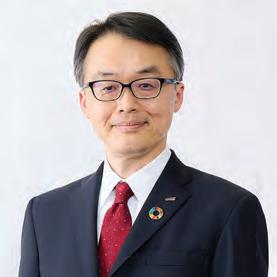
Kiyohiro Yamamoto CEO
Azbil Corporation is at the forefront of Japan’s thriving automation industry, with an international presence in BA (Building Automation), AA (Advanced Automation: process and factory automation) and now LA (Life Automation). Azbil was established in 1906, when working conditions were often poor, and automation then as now made a significant impact. The company draws on its deep history to underpin its ethos and approach to business.
“Human-centred automation is our identity,” says Kiyohiro Yamamoto, Azbil’s president and CEO. At the time of our establishment, the company’s principle was “freeing people from drudgery” ; the working environment was horrible, people worked in dangerous places, and through automation technology, we wanted to release them from that. Our company exists for humans, and we cherish humans. In Japan we have a culture that emphasises that if we have harmony, we can make a better world. Automation needs to focus on making a better world for humans, and giving back to each individual.”
In addition to increasing interest in sustainable growth, and changes of social structure as the population ages and the workforce shrinks, the covid19 pandemic increased people’s desire for safer workplaces and increased remote work. Clients’ accelerated investments in high-tech products, facilities, and the environment increased demand for Azbil’s products. The company’s greatest competitive advantage is its technologically-unique micro-electromechanical systems (MEMS) products, including sapphire vacuum gauges used in factory automation. In its engineering capabilities, Azbil has a competitive edge due to its ability to promote BA energy conservation projects, operating as an energy service company in Japan. The company’s business structure gives it expertise in and the ability to consolidate


both edge domain (for example sensors and controllers installed at customer sites) and the application domain. Azbil’s BA technology monitors buildings throughout their full lifecycle, and helps promote longevity; its early warning system for factories detects the risk of faults in advance, both enhancing safety and reducing machinery downtime and wasted energy.
“Our business is essential for clients’ resilience, so there was certain amount of demand during the pandemic,” says Yamamoto. “If there’s a crisis again in the future, the impact will be limited. I recognise that this stability is important for investors. Azbil can provide engineering in the long-term, which is also essential to achieve carbon-neutral targets as machines age and energy efficiency decreases.”
In 1953, the company entered a 50/50 equity-based alliance with US technology company Honeywell Inc., and became known as Yamatake Honeywell. The US partner exited in 2002, and the company became Yamatake, and started to expand internationally. In 2012, it was renamed Azbil Corporation.
Azbil’s current sales are around JPY280bn ($1.94bn), which it aims to increase to JPY400bn by 2030, with JPY100bn of that coming from overseas sales. To support its international expansion, and its overarching goal of improving lives and the environment, the company is scoping out opportunities for partnerships around the world.
“Our customers are familiar with our cost-effeictive, high-performance products, and that can increasingly be recognised overseas,” says Yamamoto. “That’s why we are boosting our sales all over the world. Right now our focus is Southeast Asia and China, but we are also looking at the US and Europe. Our aim is to partner with some companies so we can achieve success, to grow. We are open to all sorts of partnerships, even with our competitors, so we can work as one towards the carbon-neutral future.”
To achieve its goals, Azbil is making long-term investments to enhance product competitiveness as well as strengthening its HR capabilities, while implementing measures to strengthen cooperation with other companies. In doing so, the company is following the path that Yamamoto thinks more Japanese companies should make: thinking of a high-tech future, while drawing on the country’s long and proud manufacturing tradition.
“Japan is an advanced society with an aging population; the knowledge that we have accumulated through the years is an important factor in the future for the world,” says Yamamoto. “Secondly, we have a lot of history, and our sustainability from that perspective is unique. From the perspective of a Japanese enterprise able to compete on the global arena, in addition to making use of the well-established strengths of high quality and high performance, it is important to strengthen our ability to generate business models that will lead to growth in the significantly changed society of tomorrow, and also to enhance our competitiveness. The latter can be achieved by harnessing revolutionary new technologies like quantum computing and generative AI.”


apan is not only the world’s third largest economy. According to EU data, Japan also has the third largest insurance market. In a report on the industry outlook for 2023, global professional services company PWC emphasised the need for accelerated digital transformation in the Japanese insurance industry, including increased deployment of cloud platforms.
Among the numerous insurance categories in the Japanese insurance market, pet insurance is one of the few growing sectors. The penetration rate for pet insurance is only around 16%, and further market expansion is expected in the future.

Nobuaki Komori President
Due to rapidly changing global circumstances and accelerating tech nological advancements, society as a whole has become increasingly engulfed in a sense of anxiety and loneliness. Pets, who provide comfort in such solitude, have gained even more value in recent years as a counterbalance to the volatile global situation and the rapid progress of technology.
“Our company generates the power of life, by loving pets that cannot live by themselves,” says Nobuaki Komori, the president of Anicom Holdings. Anicom Insurance, which offers pet insurance, is its core subsidiary. “We have more veterinarians on staff than any other company in Japan. The greatest purpose of our company is to make health visualised. Consistent with this, we want insurance to be preventive and educational, so when clients’ pets get insurance with us they will get healthier – this is the fundamental aim of what we do. We want to make pets healthier, and we know the main drivers that accomplish this– DNA, food, oral health, gut microbiota and other factors. We believe we are able to know whether the pets are smiling or not IT and AI. We also believe that we can find out which foods make them healthier and happier – and make them smile.”
Komori was inspired to found Anicom in 2000 because at the time veterinary insurance barely existed in Japan. The company’s name comes from “ani”, meaning “life”, and “com”, from “communication”, emphasising mutual understanding. Komori emphasizes the company’s view that companionship and support from pets can give humans better mental and physical health, and vice versa. Caring for pets also has mutually positive effects.
“Through owning pets, different life forms love each other beyond species boundaries, resulting in both humans and pets becoming healthier and happier. Furthermore, this contributes to world peace. It is our mission, from both philosophical and business perspectives, to convey this not only logically but also emotionally.”
Anicom has spent several years focused on providing insurance to help make pets healthier, while improving their health benefits. Anicom Insurance has been working to popularise pet insurance across Japan, so that pet owners can easily visit clinics for convenient and early treatment of their pets’ injuries and illnesses. Most veterinary clinics accept Anicom’s health card, which can be used like Japanese National Health Insurance. Anicom Specialty Medical Institute operates over 50 of its own clinics, which also provide services such as regular teeth-cleaning to combat the
development of oral disease; the subsidiary also has research operations. Another branch, Anicom Pafe, provides services including “Anirece cloud”, a cloudbased medical records management system for comprehensive support of hospital administration, which includes both accounting and patient information management.
icom utilizes its accumulated big data in pet insurance to engage in cutting-edge technology and product development to ensure health and happiness of pets. Pets require diverse dietary stimuli improve their immune system, and Anicom has developed food products based on this perspective. Furthermore, based on statistical analysis indicating that periodontal disease exacerbates various illnesses, the company is also dedicated to oral crobiome analysis and the development of corresponding products.
“We’re really going to take off with this technology,” says Komori. “In 2022 Anicom had the second most patent applications published among Japanese non-life insurance companies. We use AI and scientific research to determine if pets are healthy and happy. Additionally, we propose necessary dietary recommendations to improve the health of pets through the analysis of genetics and gut microbiota. We take great pride in these efforts.”
He adds that the technology Anicom has developed is also applicable to humans and farm animals. No longer viewing combatting illness as “the main battlefield”, Komori sees a new, more aggressive approach towards overall health. This prevention focused approach strengthens the health of all lives including human life. This will especially be the case in the coming years. Opportunities to join the company on this journey are manifold.
“We are open to all kinds of partnerships,” says Komori. “Joint ventures for expansion and growth, R&D for tech transfer and new breakthroughs, businesses that want to supply our technology to vet clinics; clients for our pet health insurance. We see value in partnerships and helping one another. That’s where real business growth and strength happens.”
Tokyo-listed Anicom Holdings is also open to equity investors looking to participate in a high-tech company in a growth segment, focused on finding solutions to animal and human health and happiness. And as it expands, Anicom is a proud ambassador of the Japanese country brand, and of the excellence of its healthcare industry.
Komori says “Our viewpoint in healthcare and indeed life itself is quite different from the Western countries; in Japan we consider all living organisms divine. We think that gods dwell in everything in nature. We think we can make new discoveries and inventions by observing, learning a lot from the natural world, and thus in Japan we can create new value from unknown territories.”

We
We believe all students deserve an educational experience that sets them up for success—beyond ready—from day one.
“Beyond thankful for the education, experiences, and incredible individuals I met. My Miami experience was nothing short of transformative, equipping me with the skills and insights needed to thrive in the 'real world' and seize numerous growth opportunities. Even following graduation, the support of our alumni community and the continued mentorship from faculty has allowed me to reach new heights that I will always be grateful for.”
Amber (Hallmann) Manna ‘18 President and General Manager L Street Collaborative, LLC
Princeton Review, 2024 PUBLIC UNDERGRADUATE ENTREPRENEURSHIP PROGRAM Top 10 16 YEARS IN A ROW
ENTREPRENEURSHIP PROGRAM IN THE WORLD
Princeton Review, 2024
“I have so many friends at different colleges that are strictly doing busy work when I get the opportunity to create a business, invest in real companies, and connect with top talent around the country—and we call it class.”


Abigail Van Drunen
’24







Harness the power FSB.MiamiOH.edu/GoBeyond

For the fourth year in a row, at least one student from every undergraduate major at the university enrolled in an entrepreneurship class. This creates a diverse, interdisciplinary environment that fosters creative creative thinking, strategic skills, and decisive action.
Our program emphasizes hands-on learning, with students engaging in experiential opportunities to apply their skills in real-world scenarios. Through various co-curricular programs, they gain immersive experiences and actively solve practical problems.
Last year, our students and student-led startups received mentoring, coaching, and advice from more than 800 angel investors and venture capitalists, social enterprise and accelerator directors, startup founders, social entrepreneurs, corporate innovators, and other ecosystem builders.


an you learn to be an entrepreneur? It’s a common question in entrepreneurship circles.
After all, an entrepreneur is a little of everything—a visionary, hustler, builder, and boss. Can you learn that stuff in a classroom? The answer is yes and no: You don’t have to go to school for it, but doing so can help accelerate your growth and provide you with the fundamentals for entrepreneurial success.
Not all elements of entrepreneurship can be found in a book, of course, which is why the best colleges and universities have robust programs that support students’ startups and help build the kind
of networks that last a lifetime.
So which are the best schools? Entrepreneur has partnered with The Princeton Review for 18 years to answer that question—ranking the top undergraduate and graduate programs for entrepreneurs. This year’s survey considered hundreds of colleges and universities in the U.S., Canada, Mexico, and Europe, and evaluated them on a multitude of factors—including their programming, their available mentors, and their graduates’ success rates in the business world. More about our methodology is below.
To see which schools made the grade, just turn the page.
LAST SUMMER, The Princeton Review surveyed more than 250 colleges and universities to determine which of them best serve future entrepreneurs. Below are a few of the key metrics collected from those schools. For more information on the methodology and details on each ranking, go to: PRINCETONREVIEW.COM/ENTREPRENEUR
→ Academics and Requirements
Academics and the
Schools were asked whether they offer a major, minor, concentration, or degree program in entrepreneurship; how many courses in entrepreneurship they offer in topics such as new technology, social entrepreneurship, business analytics, idea development, and venture capital; and whether they provide cross-disciplinary opportunities to interact with students in other majors (e.g., working with computer engineering students to develop a product).
→ Outside the Classroom
Schools were asked for the number and value of scholarships available and the number of outside mentors who worked with students. Annual business-plan or new-venture competitions, hackathons, and pitch-deck or startup weekends, among other activities— along with prize money amounts—were also considered. Schools were also asked to report the total dollar amount of prize money won from outside competitions by students enrolled in their entrepreneurship offerings.
→ Students and Faculty
Schools were asked for the total number of full- and part-time students enrolled in entrepreneurship courses in the 2022–2023 academic year, and how many of them had developed an actionable business plan to launch a startup. Then it asked how many companies were started by graduates both over the past five and the past 10 years, and how much money those companies have raised from investors. The Princeton Review also tallied the number of faculty teaching courses on entrepreneurship during the year, and how many faculty members have started, bought, or run a business.
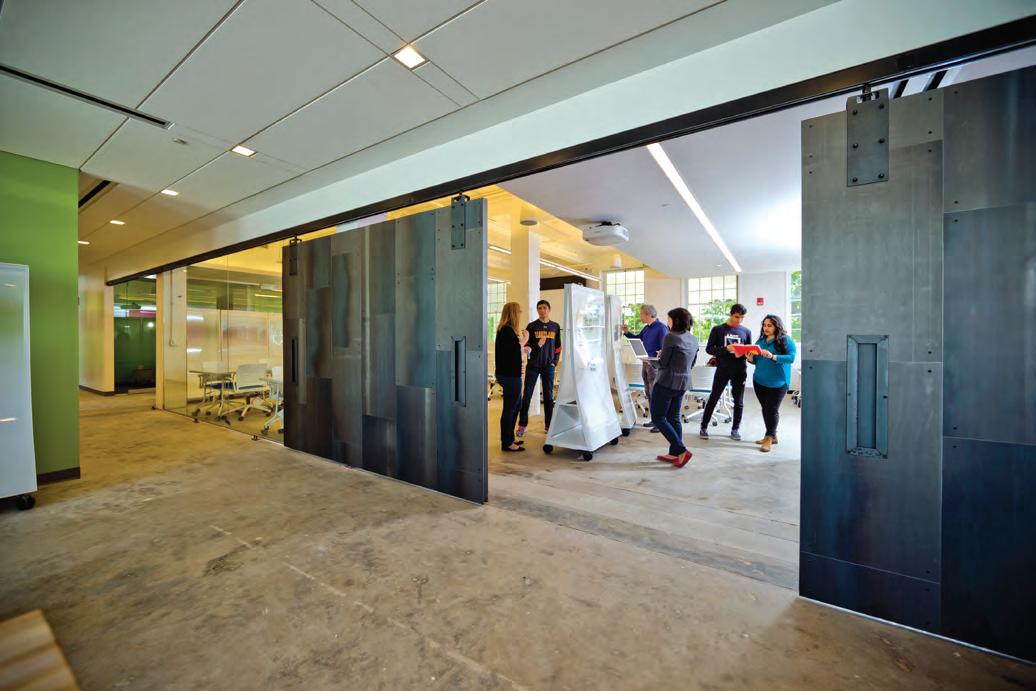
Tecnológico de Monterrey Institute for Entrepreneurship Eugenio Garza Lagüera Monterrey, Mexico
Erasmus University Rotterdam Erasmus Centre for Entrepreneurship, Erasmus Enterprise, Yes!Delft (3 locations: Delft, The Hague, Rotterdam) Rotterdam, Netherlands
(in-state)
(out-of-state)
Drexel University Baiada Institute for Entrepreneurship Philadelphia, PA
University of Delaware Horn Entrepreneurship - Venture Development Center Newark, DE

Those who bring an entrepreneurial mindset to firms large and small will create the future. At the UVA Darden School of Business, our mission is to develop leaders who want to be on the leading edge.
the a full MBA scholarship for students.
Explore the BATTEN SCHOLARS PROGRAM, a full MBA scholarship for entrepreneurial students.
darden.virginia.edu/batten

At the University of St. Thomas Schulze School of Entrepreneurship, a topranked undergraduate entrepreneurship program, we empower students to take risks and pursue their passions through full-tuition scholarships, business accelerators and annual competitions with cash prizes. And every student is equipped to solve global problems in innovative and socially responsible ways — for the common good.
Schulze School of Entrepreneurship

Yubi Hassan ‘24
Undergraduate Student, Serial Entrepreneur Co-founder, Yedi Detailing Services Founder, Gocciolare Clothing Brand Founder, BlueHorn Tea

• Ranked the #1 undergraduate and #2 graduate entrepreneurship programs in the South by The Princeton Review for 2024
• Also ranked the #15 undergraduate and #16 graduate entrepreneurship programs nationally by The Princeton Review for 2024
• Ranked #35 among the nation’s best undergraduate entrepreneurship programs by U.S. News & World Report in 2022
• Ranked the #42 entrepreneurship program by Bloomberg Businessweek in 2022
• Recipient of the 2017 NASDAQ Center of Entrepreneurial Excellence award by GCEC
• Global headquarters of the Collegiate Entrepreneurs’ Organization (CEO)

Located in vibrant downtown Tampa — rated a top-10 metro area for startups — UT’s nationally renowned Lowth Entrepreneurship Center cultivates entrepreneurs and business leaders with the skills to make their visions a reality. In an award-winning facility designed for inspiration and collaboration, students and startups are connected with mentors, resources and investors. Visit ut.edu/entrepreneur.
Check out the EnFactor podcast, hosted by Rebecca White, Ph.D., director of UT’s Lowth Entrepreneurship Center. Find it on most podcast platforms or at enfactorpodcast.com.
13 5 2 7 2024 REGIONAL
11 3 12 4 1 6 8
Saint Louis University Chaifetz Center for Entrepreneurship St. Louis, MO
University of Wisconsin-Madison Weinert Center for Entrepreneurship Madison, WI
University of Minnesota
The Gary S. Holmes Center for Entrepreneurship Minneapolis, MN
Babson College
The Arthur M. Blank Center for Entrepreneurship Wellesley, MA
Northeastern University
NU Center for Entrepreneurship Education Boston, MA
Syracuse University
Blackstone Launchpad at Syracuse University; Couri Hatchery; Center for Digital Media Entrepreneurship; Institute for an Entrepreneurial Society (IES) Syracuse, NY
Boston University Innovate@BU Boston, MA
Rowan University
Rowan Center for Innovation & Entrepreneurship Glassboro, NJ
University of Connecticut
Peter J. Werth Institute for Entrepreneurship and Innovation Storrs, CT
State University of New YorkUniversity at Buffalo Blackstone LaunchPad Buffalo, NY
New Jersey Institute of Technology Martin Tuchman School of Management Newark, NJ
Launched by Grads in Past 5 Years
(out-of-state)
(out-of-state)
(out-of-state)

babson.edu/el

#1 in Entrepreneurship, Northeast Graduate and Undergraduate Programs
– Entrepreneur magazine, The Princeton Review,2024
#1 in Entrepreneurship Undergraduate Programs
27 consecutive times – U.S. News & World Report, 2023
#1 MBA in Entrepreneurship
30 years in a row – U.S. News & World Report, 2023
#10 Best College in America
– The Wall Street Journal, 2023


The strategic thinkers, the risk takers, the problem solvers. They are the unifiers, the ones who lead with empathy and create sustainable solutions on a global scale.
world needs entrepreneurial leaders ... ... and we’re educating them at Babson.
The
John P. Lowth Entrepreneurship Center Tampa, FL
Georgia Institute of Technology CREATE-X Atlanta, GA
The University of Miami The Launch Pad Coral Gables, FL
Florida State University Jim Moran College of Entrepreneurship Tallahassee, FL
Florida
10,258 (in-state) $31,370 (out-of-state)
4,640 (in-state)
(out-of-state)
5,986 (in-state) $21,543 (out-of-state)
Belmont University Thomas F. Cone Sr. Center for Entrepreneurship Nashville, TN
Savannah College of Art and Design SCADpro Savannah, GA
East Carolina University Crisp Small Business
Center Greenville, NC
University
$6,168 (in-state) $18,566 (out-of-state) $4,559 (in-state) $15,473 (out-of-state) $4,452 (in-state) $20,729 (out-of-state)
10,856 (in-state) $26,096 (out-of-state)

De Sole School of Business Innovation
From marketing to management, SCAD prepares tomorrow’s creative innovators to transform the future of business.
Advertising and branding
Business of beauty and fragrance
Creative business leadership
Design management
Luxury and brand management
Service design
Social strategy and management
scad.edu/innovation

































Florida International University is Miami’s top-ranked public research university that is as vibrant as the city it calls home. FlU is dedicated to driving talent and innovation locally and globally.







Students have countless opportunities to pursue their passions with 200+ bachelor’s, master’s, and doctoral programs spanning 11 colleges and schools, including engineering, medicine and law. FIU connects students to thousands medicine and law. FIU connects students to thousands of internships available, empowering them to hone their skills and contribute to groundbreaking research.
$1B
best entrepreneurship programs in the nation
Princeton Review Top 5O patent producing university in the country TOP 2O
in research expenditures in the last 5 years

Erasmus University Rotterdam Erasmus Centre for Entrepreneurship, Erasmus Enterprise, Yes!Delft (3 locations: Delft, The Hague, Rotterdam) Rotterdam, Netherlands
Concordia University District 3 Innovation Hub, National Bank Initiative in Entrepreneurship and Family Business, Barry F. Lorenzetti Centre for Women Entrepreneurship and Leadership, Dobson Practicum, Bob and Raye Briscoe Centre in Business Ownership Studies, KPMG-JMSB Entrepreneurial Indices Montreal, Canada
Drexel University Baiada Institute for Entrepreneurship




































In each episode, an entrepreneur opens up about their biggest problem—and the step-by-step way they solved it.

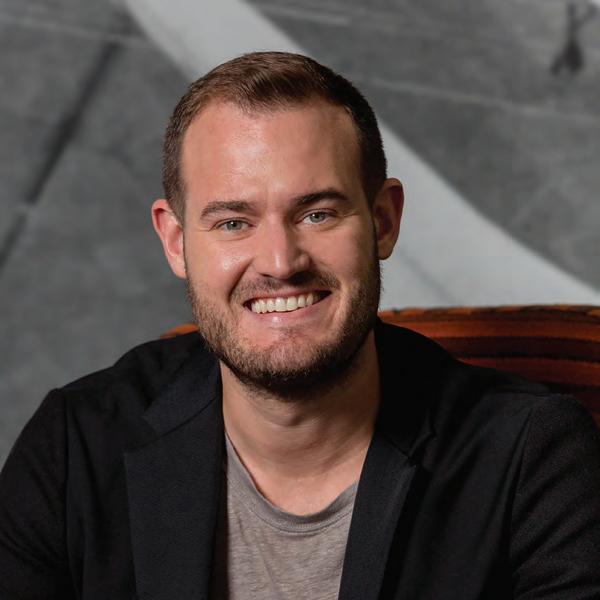

2 7 4 1 9 5 1 6 3 8 2
Eastern Michigan University Center for Entrepreneurship Ypsilanti, MI
Babson College The Arthur M. Blank Center for Entrepreneurship Wellesley, MA
Northeastern University NU Center for Entrepreneurship Education Boston, MA
Boston University Innovate@BU Boston, MA
University of Connecticut Peter J. Werth Institute for Entrepreneurship and Innovation Storrs, CT
New Jersey Institute of Technology Martin Tuchman School of Management Newark, NJ
The University of Tampa John P. Lowth Entrepreneurship Center Tampa, FL
(in-state) $29,583 (out-of-state)

NSU’s graduate program is recognized as one of the nation’s “Top 50 Programs for Entrepreneurs” by The Princeton Review and Entrepreneur magazine.


5 10 7 2 3 8 4 9 6 1 3
Launched by Grads in Past 5 Years
$252,946,677 $52,550 (in-state) $58,270 (out-of-state) varies $33,307 (in-state) $52,898 (out-of-state) $53,833 $66,000 $12,737 (in-state) $30,130 (out-of-state) $15,757 (in-state) $37,276 (out-of-state) $20,198 (in-state) $33,190 (out-of-state) $34,000 (in-state) $39,000 (out-of-state) $32,000 (in-state) $32,000 (out-of-state) $5,467 (in-state) $16,695 (out-of-state) 2024 REGIONAL RANK
Florida International University
StartUP FIU, Eugenio Pino and Family Global Entrepreneurship Center, Florida Small Business Development Center at FIU, and FIU CARTA Ratcliffe Art + Design Incubator (North Miami), Blackstone LaunchPad at FIU Miami, FL
University of Arkansas Office of Entrepreneurship & Innovation Fayetteville, AR
University of Florida Entrepreneurship and Innovation Center Gainesville, FL
University of Louisville Forcht Center for Entrepreneurship Louisville, KY
Florida Atlantic University Adams Center for Entrepreneurship Boca Raton, FL Clemson
Nova Southeastern University Alan B. Levan | NSU Broward Center of Innovation Fort Lauderdale, FL
Tulane University Albert Lepage Center for Entrepreneurship and Innovation, The Phyllis M. Taylor Center for Social Innovation and Design Thinking, Tulane University Innovation Institute New Orleans, LA
The University of Texas at Austin Master of Science in Technology Commercialization, Texas McCombs MBA Programs
The University of Oklahoma Tom Love Center for Entrepreneurship Norman, OK
$2,294,552,170




The South Florida region—from the Palm Beaches through Boca Raton and Fort Lauderdale down to Miami—is an incredible place for new businesses. Budding entrepreneurs find a complete entrepreneurial ecosystem at FAU. Our students experience a supportive start-up environment with many educational opportunities including boot camps and business pitch competitions with seed funding prizes. The Adams Center for Entrepreneurship and the Phil Smith Center for Free Enterprise—funded by successful FAU alumni— sponsor speakers, mentors, and provide customized training for students, veterans, local entrepreneurs, and members of underserved communities through a Spanish language boot camp. FAU’s Tech Runway® is a proven incubator and accelerator in South Florida that mentors, funds, and assists with launching and scaling start-ups. FAU’s SBDC and Research Park at FAU provide support for continued growth.

MILES
1.8 beach to the

Arielle Baril | RIELLI Local Miami List CLOTHINGBRAND [Riellibrand.com]
Alex Cooper & Andrew Schulze | 4OCEAN SOCIALENTREPRENEURSHIP [4ocean.com]
Hannah Herbst | BEACON HIGH-TECHSTARTUP [hannahherbst.com]
Jan Bednar | SHIPMONK LOGISTICS&ECOMMERCE [shipmonk.com]
When someone sets off to attend a business meeting or a big industry event, they’re likely focused on the people they’ll meet and which goals they’ll accomplish. Will they close a big deal? Dreaming up big, new ideas? Finding new partners? But, often, it’s the location of the meeting itself that creates the most lasting memories.
From arrival to departure, everything from a location’s weather, venues, culture, nightlife, and so much more are the details that stick in people’s minds. One place that hits on all the right notes is America’s Finest City: San Diego. Located at the southern tip of California’s coast, San Diego is booming with positivity, overflowing with innovation, and radiating creative energy.
“Destination-specific programming, such as cultural and museum tours and local cuisine tastings, helps attendees feel connected with the area they’re in,” says Julie Coker, President and CEO of the San Diego Tourism Authority. “Incorporating local vendors into your event allows attendees to engage with businesses that embody the spirit of the city they are in. These measures will help foster an environment in which people come together for meaningful experiences and conversations.”
Here are four reasons San Diego is among the top locations to host unforgettable business meetings and events in the U.S.
1. The weather is amazing.
Depending on where you’re located, your idea of “nice weather” may be different from the next person’s. But in San Diego, there’s no disputing the forecast. On average, every day is 72 degrees and sunny. That means chances here are high that your next company retreat or conference won’t be rained out and leaving attendees feeling dreary and uninspired.
With 70 miles of amazing coastline and abundance of outdoor activities, the climate in San Diego helps people harness happiness and creativity, while the city’s easy-going vibe creates opportunities for making valuable connections.
2. It’s a hub for innovation.
San Diego is the ideal location for collaboration and creativity for everyone from restaurateurs to scientists and engineers, to businesses large and small, and technologists.

With a population of nearly 1.4 million, San Diego is where innovative thinkers—among them at least 27 Nobel Prize winners—have called home. CBRE says San Diego’s tech-sector job growth makes it the hottest among North America’s leading tech hubs.
Innovation here is fueled by the fast-growing tech startup scene as well as the city’s collection of world-class education and research facilities like the University of California San Diego, the Salk Institute for Biological Studies, and Scripps Research, just to name a few. If you want your event held in the heart of where big things are happening, then San Diego is the place to be.
3. The culture is fun and inclusive.
San Diego’s innovative spirit, diverse cultures, and open sense of community nurture an inspiring climate that’s conducive to collaboration and creativity. From La Jolla to Little Italy, to Mission Beach to North Inland and beyond, there’s an endless variety of dining venues with spacious open-air settings and infectiously friendly people to satisfy every mood and craving, no matter the neighborhood.
After your breakout sessions, attendees can break away and enjoy San Diego’s medley of coastal towns, seaside villages, urban enclaves, and cultural hubs that reflect the diversity of the entire region. “When inclusivity and belonging are part of the culture around planning events, it creates an atmosphere of acceptance and respect and allows for more opportunities of collaboration which can lead to more innovative solutions,” Coker says.
To learn more about hosting a business event in San Diego that will leave a lasting impression, visit SanDiego.org/brightestcity
Funded in part with City of San Diego Tourism Marketing District Assessment Funds.






When
opened a Pizza
in Minnesota, he hoped to serve the nearby Native American communities in more ways than one. by


Many things make Bemidji, Minnesota, a special place. Among them: It’s the central city for three Native American reservations, it’s the northernmost city connected to the Mississippi River, and it’s where the folklore figure Paul Bunyan was supposedly born. But according to an entrepreneur in the area, it was sorely lacking something important: Pizza Ranch, a buffet restaurant that’s thriving in the Midwest.
“I live in North Dakota, so we’re in Pizza Ranch country,” says Dennis Johnson, a member of the Red Lake Band of Chippewa, who’d been working in commercial real estate. When he visited Bemidji in 2020, he was surprised not to find one there. That’s too bad, he thought; Pizza Ranch could be a gathering place and a steady employer for local tribes. He asked around and met local entrepreneur Bob Bush, who’d had the same thought. “I said I would invest and help him find the real estate,” Johnson says. “A partnership was born.” Johnson and Bush opened their first location in Bemidji in January, and then a second in Kearney, Nebraska, in September. Here, Johnson talks about what the Pizza Ranch brand can offer his Native American community.
Did you know anything about operating pizza restaurants when you started this journey? No, and I said, “Pizza Ranch is fabulous, but I don’t want to be the guy running it.” Bob said he had someone to run it. So three of the five members of our management team came with
that partnership. I’ve always said I wouldn’t want to own a restaurant, but of all the times to start one, this idea was born in June 2020, in the middle of COVID. Not just a restaurant, but a buffet restaurant on top of that. It seems kind of crazy, doesn’t it?
You must have really believed in the opportunity.
100% conviction. Pizza Ranch is really a warm and inviting atmosphere. “Gathering place” is really the best term for it. You’ll have multiple generations at the tables: kids and grandkids. And we’ve got
arcades attached to some of our restaurants. That doesn’t provide huge revenue, but it takes a lot less human capital to run since you’re leveraging games and technology.
Do you feel like Native American areas are often underserved with franchises?
I do. I think that’s one of our success factors in Bemidji. We opened in January and, fast-forward to this coming January, my prediction is that we’ll have exceeded our forecasted revenues by about 15%. And I attribute a lot of that to the Native American communities. We also have mostly tribal people working for us. We’ve even had some people that said the only reason they applied to work here was they heard it was a tribal-owned business. I love that.
Have there been any challenges for you as a Native American business owner? No. Historically that’s been a problem, but there does seem to be a changing tide. The city of Bemidji has reached out to at least one of those three tribes and met with them in the last year to say, “Hey, we’d love it if you guys did more business in Bemidji. We’d love to have more tribal representation here.” I don’t know if that would have been the case 20 years ago.
Do you have a plan for expansion?
I’ve got a plan to do another 10 locations over the next five years, and we’d like to expand to 20 in a seven-to-10-year period. And if all goes as we anticipate, we can even accelerate that a little bit.
































Could franchising help increase access to mental healthcare? Ellie Mental Health is making a strong case for it. by CARL STOFFERS
There aren’t a lot of franchised mental health services, and at first, Erin Pash had no interest in starting one. “I will not be the McDonald’s of mental healthcare!” she joked at the time. But eventually, she came to a different conclusion: Franchising could help her make real, lasting improvements to people’s mental health.
Pash is the founder of Ellie Mental Health, which began as a single location in St. Paul, Minnesota, at the end of 2015. It’s a clinic that offers mental health services from licensed practitioners—and for therapists, it combines the stability and employee benefits of a large company with the autonomy of a local, independent practice. “The clinic was full almost right away, and people were knocking on our doors wanting to work there,” Pash says. Today there are 155 Ellie clinics in operation, with another 500 in development. Here, she describes how she grew the business.
What did you want to do differently at Ellie Mental Health?
A little over eight years ago, I was working in nonprofits and recognized some pretty significant gaps in mental healthcare. I wanted to open a clinic that filled some of those gaps. It would be a great place to work for therapists, where they could make commonsense decisions for clients. And I wanted to create a punchy, destigmatizing brand that made everyday people feel welcome.
Our colors are very bold and bright, and we use a ton of humor in our marketing. The basic psychology is that the more authentic somebody is, the more likable and desirable they are to engage with. We’re not going to sugarcoat it—and we try to be funny about it.
Do you have to be a therapist to own an Ellie franchise?
No. Only about 10% of our franchisees are licensed in healthcare. The rest are business owners who we partner with a licensed mental health professional. The franchisee operates the business while the clinic director operates the medical practice.
What prompted the transition into franchising?
In 2019, I was traveling around the country and realized that people really did want the Ellie model in other places. We met with an attorney who said, “What you’re describing is franchising.” I realized that our model works so well because we find like-minded partners who want to bring this to life in their own communities—and that’s franchising!

Have there been challenges?
porate practice of medicine.
Are some states more difficult to operate in than others?
Absolutely. In Minnesota, we might average $125 an hour for reimbursement from insurance, but in Tennessee or Florida, maybe $65 an hour. And recruiting talent is really challenging if we’re not getting compensated for it.
Children’s mental health is a crisis, because there just aren’t enough child-focused
don’t want to pay enough to keep therapists employed.
Given all that, what’s driven your rapid growth?
Mental health services have been on an upward trajectory for the last 10 years, and then COVID made the average American recognize that life can turn upside down in a matter of seconds. Plus the millennial generation, which they call the “therapy generation,” are having kids now, and want to make sure it’s more widely accepted.

When Jeffrey Bell gave up horse training to buy a Floor Coverings International franchise, he wanted to be ahead of his new pack. To do that, he had to learn to delegate. by
Jeffrey Bell once had a problem: “I really believed I was the best at everything,” he says. “But if that’s true, you better be a heart surgeon.”
Bell is a former horse trainer who, in 2010, bought a Floor Coverings International franchise in Cherry Hill, New Jersey. Once he realized he couldn’t run it all by himself, he started investing in a team that could. Now his business is on track to do $11 million in sales, making him the top-performing franchisee among Floor Coverings’ 250 locations.
Here’s how he did it.
Floor Coverings International sends franchise owners books to read. Most recently, it was Who, Not How by Dan Sullivan. Bell agrees with one of the book’s core lessons: “If you hire a good salesperson or a good marketing person, you don’t have to figure out the ‘how.’ They know the ‘how.’ You, as the franchise owner, just need to figure out the ‘who.’ If I have the right people, I can leave them alone 80% of the time.”

Bell takes a high-tech approach to his consumer marketing. “We do things like geofencing, which is when you do a job and capture the IP addresses of all their neighbors to try and sell them too,” he says. “If you walk into a flooring store with your phone in your hand, I can capture that, and the next time you go online, you’ll see a banner ad for my store. I know it’s creepy, but it’s the world we’re living in.”

paid-for leads,” he says. “That’s OK in your first year. It may be OK in your second or third year. But if that’s how it is in your fourth year, if you have no repeat business, you’re doing something wrong.” Bell focuses on relationships and bringing his customers back, which is why 80% of his business this year came from repeat customers.
When Floor Coverings CEO Tom Wood looks at Jeffrey Bell, he sees a guy who thinks outside the box—and outside the system. “One of his mentors is a franchise owner over at California Closets who is doing $40 million this year,” Wood says. “That’s who Jeffrey makes sure he talks to a couple times a year to think about the next level.”
That’s smart. Although fellow franchisees have much to offer, don’t limit yourself to one small community. Outside ideas can help you think bigger.





























Want to buy a franchise in the hottest categories? Here’s why these four areas are booming—and why they might be right for you. by
KIM KAVIN
If you want to find a great opportunity in franchising, it’s worth asking two questions: What categories are booming (or about to boom)? And why?
We can certainly answer the first one. At the end of each year, Entrepreneur looks across the franchising space and the world at large, and analyzes industry trends and year-overyear unit growth. Then we produce a list of franchise categories that we expect to thrive next year. You can see that full list of predictions, along with the brands inside each category, starting on page 122.
But why are these categories so hot? For that, we must turn to some industry insiders.
“When you look at the category level, it is always a reflection of larger economic factors that are driving consumer behavior,” says Edith Wiseman, president of FRANdata. “All of these can be tied back to the overall change in how consumers are viewing their lives, and how they want to spend their time and treat themselves.”
Sometimes, the answers are obvious. If you look at our list of predictions, you’ll see a mixture of old and newly thriving categories. Some of them, like pets, have been hot for years, and are clearly tied to the way COVID shifted people’s behaviors. (Remember all those pandemic puppies?) But there are also newly growing categories, which either weren’t surging before or are just beginning to experience rising levels of competition.
In particular, there are four ascendent categories worth paying attention to: beverages, STEM enrichment, sports, and meal preparation and delivery spaces.
If you want to understand what’s driving the franchise industry today, and what might be most important for it tomorrow, those four categories can tell you a lot. That’s why we’re singling them out in this story. We called the experts to ask: What’s driving all that business, and what do we need to know?
The answers—along with insights on what it’s like owning a business in these spaces—are on the following pages.

Short answer: People are thirsty!
Long answer: People are thirsty for something very specific.
Beverage franchises are doing well as a whole, but much of the industry’s growth is fueled by one kind of drink: boba tea (also known as bubble tea). It originated in Taiwan, made with tapioca pearls and nearly endless combinations of flavorings and additions. It’s also a perfect drink for our social media age, with colorful—and photogenic— presentations that are easy to share.
“If you ask somebody over the age of 40 or 45, there’s a good chance they haven’t heard of boba or bubble tea, unless they have teenagers in the household,” says Geoff
Henry, president of the Americas for the brand Gong cha. “But if you ask someone under 30, almost everyone has tried it.”
To appreciate boba tea’s rise, just look at Gong cha’s history. The brand opened its first store in Taiwan in 2006, and then opened its first overseas outlet three years later in Hong Kong. Growth was rapid; by 2019, after 10 years of expansion, it had opened more than 1,100 global stores. Now it’s nearly doubled that, surpassing 2,000 locations in July, with about 105 to 120 stores expected to open this year in the Americas. “We think next year we’ll open another 150 in the Americas,” Henry says. “Two-thirds of that will be in the U.S.”
Many other boba brands are following suit. The brand Kung Fu Tea, founded in 2010, is now approaching its 400th store opening—and is raising its profile even more by selling canned drinks. “We have an energy can that sold
out in the first six months, and the only two places we had it were on Amazon and in-store,” says Kung Fu Tea marketing manager Matthew Poveromo. “I think in the next year, we’d like to move further into the ready-todrink category, building out more flavors and more distribution, maybe through grocery channels. What would be more accessible than seeing Kung Fu Tea on your Walmart shelf?”
But boba isn’t the only drink on the rise. The franchise HTeaO caught fire by innovating on iced tea, and by the end of this year, it expects to have 95 locations in nine states. Other drinkable opportunities will surely follow.
“You think of coffee and what’s happened there, with the inclusion of flavorings and syrups, and now there’s all the iced and cold beverages that are out,” says Heath Nielsen, president of HTeaO. “There’s enough variety coming in to feed everybody.”
Tracy Vitela opened a Just Love Coffee Cafe franchise with her sister near Nashville, Tennessee, in 2021. This year, they are on target to surpass $1.5 million in sales—and have three more locations opening in the area by the end of 2023.
Why do you think demand for beverages is booming?
I think more people nowadays, post-COVID, are dreaming bigger and thinking outside the box. You have AI and ChatGPT and all these different expansions happening. I believe that those dreams start in places like coffee shops.
What has most helped your franchise grow?
The biggest things are service and quality. I had a guest yesterday who asked to have his coffee extra hot. He asked me to warm it up, and I said, “No, I’ll just remake it.” I may be throwing away 60 cents, but he’s going to remember that I wanted him to have a quality product.

Parents have thought about STEM for a long time—but with artificial intelligence now on so many people’s minds, educational services have gained a new urgency.
“Parents are not feeling like they’re getting the competitive edge just by going to schools, so they have to have supplemental education to prepare the kids for the world of tomorrow,” says Edith Wiseman, president of FRANdata.
Enrichment franchises are rising to fill that need. “What we’re after is not really giving
kids an opportunity to learn coding as a vocation, but to give them an understanding of the world around them,” says Colin Fitzpatrick, vice president of global development at Code Ninjas, a kids’ coding education and enrichment franchise. “The same way a kid takes science classes, it’s important that every kid has a foundation in computer science and computational thinking.”
Code Ninjas is seeing results: It was founded in 2016 and started franchising the same year, and now has about 385 locations in the U.S., Canada, and the U.K.
Enrichment franchises also have another advantage: There’s a steady stream of qualified franchisees. As teachers look for opportuni-
ties outside traditional school systems, many are finding a nice fit in franchising.
Jeff Hughes, president of Skill Samurai, says 75% of his new franchise owners in the past year were teachers. “One of them was a principal,” he says. “They’re people who want to keep teaching, but they may not like the politics or the current setup of the schools.”
A similar dynamic is happening at Challenge Island, which now has more than 150 franchises in 31 states. Many are run by former educators who look forward to far surpassing their former $50,000 teaching salary. “This year, we’ll have people making $300,000 and $400,000,” says Challenge Island founder and CEO Sharon Duke Estroff.
Danish and Mansi Majeed, both from the tech industry, bought 10 Challenge Island franchises in the Seattle metro area this past year. “We saw it shaping up as a life mission,” Danish says. “We wanted to buy all of Washington state.”
Why do you see your STEM/ STEAM franchise as a life mission?
We have a 10-year-old and a 12-year-old. They respond to things by pressing a button, whereas when we were kids, we were throwing a sheet over a couch and creating a fort, or tying a towel around our neck and making a cape out of it. I feel like devices are robbing kids of creativity.
How have local educators reacted to your franchise? They all agree that we have these problems, and they can’t address them within the construct of the public school system. Having an enrichment program that addresses that is mind-blowing for them.


















































































































































































Last year, Entrepreneur identified recreation as a booming franchise category. But that was a broad group, including everything from DIY art studios to trampoline parks.
As we looked more closely at the category this year, we saw a spike in a very particular area of recreation: sports!
Why are sporting franchises so popular? There are many theories—from the rise of specific sports to the healthier pursuits of consumers.
Of course, no sport has taken off recently the way pickleball has. In 2021, about 5 million people played the game. Today, it’s more than 40 million—and that surge has spawned a growing number of pickleball franchises.
“We do introductory classes for the public for free, twice a day,” says Ace
Rodrigues, founder and CEO of Pickleball Kingdom. “We get people who say they were an athlete 20 years and 20 pounds ago, and they’re asking about leagues and tournaments because it’s so much fun.”
Pickleball Kingdom’s flagship location in Arizona opened in May 2022. A dozen franchises are now being built nationwide, with 70 awarded.
But more traditional sports are also seeing a surge—especially if a franchise adds a unique twist or expands the experience.
X-Golf is a good example. It offers golfers a place to refine their swing with indoor simulators, but it’s also much more. “You can play famous courses, interactive games, tournaments across the country, all inside your own pod or room,” says X-Golf president and CEO Ryan D’Arcy. “They can drink, have fun, there’s a full bar, and we have food.”
X-Golf started franchising in 2015. Today, it has 84 locations with 50 in devel-
opment. D’Arcy expects 100 to be open by the end of this year. A location inside Milwaukee’s American Family Field, where Major League Baseball’s Brewers play, opened in September 2022.
D-BAT is another great example: The franchise operates indoor baseball- and softball-training facilities, and casts a wide net—working with everyone from Little Leaguers to MLB prospects. There are batting cages, coaching, special events, and more.
Founder and CEO Cade Griffis thought that, with interest rates rising, his franchisee interest would slow down in 2023. But the opposite happened. “Our biggest year pre-COVID was 2019. We opened 22 stores,” Griffis says. “But this year, we’ve already opened 24, and I have 32 under construction.”
He thinks COVID is still on people’s minds, and that’s driving them to sports. “People remember being cooped up and don’t want to go back to that,” Griffis says.
Ben Feret has been a longtime real estate investor, and then decided to fill some of that real estate himself: He became an X-Golf franchisee in 2019, and now owns five locations in Minnesota, with a sixth opening in December.
Why is interest growing in indoor golf?
COVID really catapulted the golf industry in general. For a while, golf was the only thing people could do outside.
In Minnesota, indoor golf makes sense with the weather, right?
We have about 150 realistic golf days in Minnesota. The rest of them are too cold, too hot, too rainy, or too windy. That leaves us with about two-thirds of the days that are ideal for indoor golf.
What’s it like being part of a growing franchise?
Now that [X-Golf is] approaching 100 stores, we have national tournaments. The prize pools we can offer are pretty awesome. We’ve sent folks over to Ireland, we’re giving away a trip to Cabo—that’s another piece we can leverage with our size.








AMERICAN FREIGHT FURNITURE • MATTRESS • APPLIANCE
















To understand why this category is booming, just consider your own dining-in habits.
“Before the pandemic, I think the only thing that I ever had delivered to me was pizza,” says Mark Siebert, CEO and franchise consultant with The iFranchise Group. Then Siebert, like many people, started having everything delivered. “It wasn’t that much more expensive to get the food, and it became an ingrained behavior in terms of what I was doing.”
That laid the foundation


for a new generation of food service, he says. People started to think differently about their meals—whether they’re delivered, or even picked up as meal kits.
“Customers can come in our stores, purchase one meal and heat it up to go, or purchase 10 or 15 meals for the entire week and have everything you need for the week,” says Austin Evans, CEO of Lean Kitchen Company, who started franchising in 2018 and now has 33 locations open nationwide and 60-plus sold and in development. Customers can also order online from their local Lean Kitchen, and more than 30% now
do. For some store owners, it’s near 50%. “That’s been the most notable shift: It’s about convenience,” Evans says.
Convenience, along with quality and value, is also driving growth in the prepared meals segment at New York Butcher Shoppe, says Joseph Giordano, vice president of corporate and franchise development. The stores sell a combination of traditional meat cuts, specialty groceries, wine, and prepared meals.
“The prepared meals, right now, represent over 20% of our product mix,” he says, “and that continues to grow and grow each year.”
After working for decades in department stores, Mike and Kristen Murn changed careers—and in late 2022, they became the first franchisees of Delish Delivered. Their territory is west of Milwaukee, where the company’s founder is based.
How has your career shift felt?
MIKE: I’m used to sitting in an office for 10 or 12 hours a day, and now I’m talking on the phone with customers about how they liked the meals. Having that connection with the customer is such a great, great feeling.
Why did you choose Delish Delivered?
MIKE: What we’re providing really helps people. Some aren’t able to cook. Some don’t have time to cook. Some people want a great-tasting meal but don’t want to cook.
KRISTEN: We consider ourselves an integral part of the community. This is helping our friends, our neighbors. It’s getting locally prepared meals delivered right to their doors.
Kim Kavin is a regular contributor to Entrepreneur.











To become a business owner, you don’t have to start from scratch. These franchises have proven systems and offer support for entrepreneurs ready to grow now.
Pillar To Post
Home Inspection
Image One USA
Commercial Cleaning
PuroClean Restoration
Empower Brands
Home Services Brands
Links Golf Café
Sports, Coffee, Business Training to




Shane Mollohan joined Pillar To Post Home Inspectors® in May of 2021. “It was nearing the end of the COVID-19 crisis and I was so impressed with the Virtual Training that Pillar To Post offered. It was fantastic, just like I was there in the class in Toronto. It was very impressive that it all was handled so professionally and smoothly during this difficult time for many businesses that had to remain ‘contactless’. Mollohan ought to know quality. He was in the United States Army for 24 years as Command Sergeant Major of an elite unit. This skilled veteran is now serving homebuyers, sellers and residents throughout Temple, Belton and Killeen, Texas.
Pillar To Post Home Inspectors® is recognized industry-wide and has achieved

the highest standing in various rankings of “Top Franchises for Veterans.” It also holds five-star status with VetFran, a program offered by the International Franchise Association that provides discounted franchise fees to veterans. “I really believe the skills I acquired as a soldier have helped me become a great home inspector and business manager,” Mollohan said.
“The company rolled out some pretty amazing technologies back when I started,” said Shane. “I have been fortunate to have local Realtors ask me to spend extra time walking through an entire inspection with them so they could learn about the innovative technologies that are now in full swing for all Pillar To Post Home Inspections® One of these is the PTP360 tour.”



PTP360 is an interactive, virtual home inspection tour that allows users to revisit a home anytime and anywhere from a smartphone, tablet or desktop and even share the tour with family and friends.
“This and PTPEstimates have been instrumental in lots of new clients for me referred by Realtors who know these technologies save both them, and their clients, time and money,” added Shane.
“In addition, no other operating system but Pillar To Post’s matched my needs to run my own business, which has always been a dream for me. I believe Pillar To Post Home Inspectors® is the industry leader in the home inspection business and will continue to deliver through innovation and adaptation,” Mollohan said.



To consider launching a cleaning services franchise, given the heightened importance of health and sanitation in today’s society. Commercial property owners across various sectors are recognizing the value of professional cleaning services in maintaining a safe and hygienic work environment, vital for sustaining their businesses. Our franchisees adopt an expert approach to eliminate dangerous bacteria, viruses, and other harmful germs from spaces. Image One has been at the forefront of developing Cleaning for Health protocols, which have been proven to effectively reduce the spread of harmful viruses.
Beyond merely enhancing the visual cleanliness of a facility, commercial property owners now comprehend the paramount significance of thorough cleaning and disinfection. As a prospective Image One Franchisee,

we will guide you on tailoring your services to meet these heightened demands and secure lucrative contracts for your business.
In the realm of commercial cleaning, certain qualities are pivotal for success. We seek candidates who enjoy handson work, excel in leadership roles, and prioritize getting the job done correctly on the first attempt. As a franchise owner, you will bear the responsibility for every aspect of your business, from determining growth strategies and project timelines to selecting your team. With substantial autonomy comes the need for strong leadership skills, enabling you to work both independently and collaboratively to ensure an exceptional customer experience.
Previous experience is not mandatory to benefit from our system. Ideally, we are seeking individuals committed to mastering our business model
To honor your service to our country, veterans qualify for a 20% discount on the franchise fee. Your distinctive qualities are what make you the ideal candidate for an Image One Franchise.
� Franchise Fee: $29,750 (Less Discount of 20% for Veterans) all in for under $50K
� Protected Territories Available through most of the U.S.
� Comprehensive Training in Sales & Operations including 2 weeks in your market!
� Proprietary software to operate your business
and building a thriving franchise. Nevertheless, prior experience can be an asset, but a strong willingness to learn and a dedication to putting in the necessary effort are equally valuable qualities. If you possess these traits, we encourage you to reach out to us to determine if you meet our qualifications.
Register now for Image One’s Veteran Franchise Giveaway: imageonefranchise.com/giveaway


Founded in 2001, PuroClean is a leading franchise concept with a business model ideal for entrepreneurs passionate about contributing to their communities during times of need or natural disasters. PuroClean has a network of more than 400 franchise offices across North America.
PuroClean Fast Facts
Diverse revenue opportunities
25% initial franchise fee discount to qualified veterans
Recession-resistant business opportunity
Proven system backed by training and support
PuroClean empowers veteran franchisees to step into a new career in the civilian sector while continuing to use the skills and expertise they obtained while in the military. PuroVet, PuroClean’s veteran-centric franchise program, offers veterans the freedom to do what they do best – offer service to their communities while providing leadership to people during their most challenging times – all while backed by a proven system.
Veterans have a unique skillset to bring to a franchise opportunity like PuroClean. Strong work ethics and the capability to succeed within an established business
model, veterans are ideal candidates to move into franchise ownership. When honorably discharged U.S. military serviceman or woman join the PuroClean family, they are part of the “Paramedics of Property Damage®” team and become heroes in their community when they provide damage remediation services like water damage restoration, fire and smoke damage reparation, mold removal and biohazard cleanup to residential and commercial customers.
A 5-Star VetFran Franchisor, PuroClean helps veterans walk the path to business ownership affordably and
accessibly. PuroClean’s PuroVet program proudly offers a 25% discount off the initial franchise fee to qualified veterans, as well as access to other discounts and funding resources. Not to mention, PuroVets also receive top-notch training at the company’s $1.5 million state-of-the-art training facility, benefit from some of the largest territories in the industry and can connect to a strong network of franchise owners and other veterans whenever they’d like.
PuroClean thanks you for your service!
To find out more about PuroClean’s PuroVet opportunity, contact us today and take the first step to your next rewarding career.

Buying a turnkey business, building it and selling it is a sustainable investment that allows you to control your financial future.
• Choosing a franchise in the home services industry offers you the assurance of consistent demand. Your client could be your next-door neighbor or anyone in your community. THERE ARE 124 MILLION HOMES IN THE U.S. AND GROWING.
• Consumers are investing more in their homes than ever before.
• You will not need a commercial storefront because you visit your clients at their homes which helps to keep your startup overhead affordable.
• Prior industry experience is not a requirement.
Business ownership in the home services vertical allows you to scale to meet your financial goals by expanding into a multi-unit or multi-brand franchise owner. You work for yourself and when you decide to exit your business, you will have a salable asset.
To start your own home services business, the burden would be on you to handle every aspect of business ownership yourself. It would be incumbent on you to create branding, a website, brand awareness, operational best practices and determine how to scale head count, which equipment to buy and which vendors to use. Trial and error could delay your road to profitability.
Empower brands offers leading franchise concepts that empower franchisees to drive their financial futures. Support includes marketing, coaching, vendor partnerships, technology and best practices. Minimum investments range from $85,025-$163,498. Financing options are available. Business models can be owner operated or as an executive model with a semi absentee owner.
Archadeck: avg revenue $2.1 M and median gross margin 38.6%.
Outdoor Lighting Perspectives: Avg revenue $899,000 and revenue less certain costs of $209,000.
Superior Fence & Rail: avg revenue $2.8 M and median gross margin 40.8%.
It can be even more difficult if you are a first-time business owner or do not have experience in the home services space.
When you work with a proven franchise partner, you are given the tools and resources you need to start quickly, including training and technology that will differentiate you from the competition. You will have access to a network of individuals who have been in your position before and will help you grow. The website, branding and lead generation are done for you so you can focus on growing your new business.
TO LEARN MORE, SCAN THE QR CODE OR VISIT EMPOWERFRANCHISING.COM/OWNYOUR-FUTURE.





Bumble Roofing: revenue $4.1 M and revenue less certain costs of $403,000. https://empowerfranchising.com/own-your-future/


We combine three recession proof businesses into one. Golf, coffee and business. With a track record of having built 187 coffee bars, we’ve launched “possibly the most advanced start-up in franchise history”. Your team will run this business for you, everyone will have a ton of fun.
Franchise Fee: $45,000
Total Investment: $769,164 - $1,061,981
Master Franchise and Area Developments available
New franchise, nine units awarded
Do you love golf, coffee and business? Consider combining these three passions into a brand new conceptLinks Golf Café.
Take the fun of Top Golf (for much less than $20 million), the passion of Starbucks (but in a franchise) and add in a boardroom for small business, and you’ll see why we’re so excited.
Last year 50% of all golfers in America no longer golf on green grass courses. Golf simulators and driving ranges combine high tech with high touch experiences for a lot less time & money than golf & country clubs. Imagine playing 30 minutes at Pebble Beach, then saving your round for another day!

Done right, coffee bars are one of the most profitable businesses in the world. Coffee is the second most consumed beverage in the world; 52% of North Americans consume coffee every day, coffee bar visits grow in a recession.
Local businesses need cost effective ways to grow and scale. We include Business Growth Training and Local Masterminds that meet twice a month, leveraging connections made, helping members grow their sales and increase their profits.
HIRRA MIRZA, MEMBERSHIP
DIRECTOR, IFPG said we are “possibly the most advanced start-up in franchise history”.
Our first Area Developer, RAY PEL OF PHOENIX, ARIZONA, said “I was blown away by the attention to detail and the marketing strategies. The potential for building community is a key ingredient. And it’s going to be a ton of fun.”
Our FOUNDER, TOM MATZEN, has set up some one hundred and eighty-seven independent coffee bars, and they’ve averaged a stunning 52% cash on cash return per year. He believes that Links Golf Café will improve on that.
Learn more and see why we’re the world’s first golf cafe franchise that guarantees results.
Beverages/ P. 137
Chicken/ P. 138
STEM Enrichment
Programs/ P. 140
Health & Wellness/ P. 142
Meal Prep/Delivery/ P. 144
Pest Control/ P. 144
Pets/ P. 146
Restoration/ P. 148
Sports/ P. 148
Tutoring/ P. 150

Want to buy a brand in the hottest categories? Check this list.
by TRACY STAPP HEROLD
Where are the hottest franchise opportunities in the year ahead? Every year, we at Entrepreneur like to try answering that question. To do so, we consider a few factors: What trends are we seeing in the world at large? In which industries are we seeing new franchisors pop up? Which industries are seeing high unit growth? And what does our experience covering the franchise industry for over four decades tell us?
We take those factors into account, and then we produce our predictions for the 10 categories we think will perform well in the year to come. As always, this year’s list includes categories that have been thriving for a while, such as chicken, health and wellness, and pets.
But you’ll find some exciting newcomers to this year’s list as well, including beverages, meal prep and delivery, and sports.
On the following pages, we share almost 300 franchise opportunities that are available within those categories—some that have been around for decades, and others that are brand new. Keep in mind that inclusion on the list does not constitute a recommendation of any specific franchise. Even—and maybe especially—when you’re considering a franchise in a “hot” category, it’s important to do your homework first. Read the company’s legal documents, consult with an attorney and an accountant, and talk to current and former franchisees to decide if the brand and the opportunity are right for you.
Franchises oriented around drinks are becoming an everhotter commodity, perhaps because liquids tend to be more profitable and easier to prepare than meals. Coffee shops and juice bars have seen strong growth for a while, but the last few years have seen the market for boba and other teas explode as well.
Aroma Joe’s
Coffee, espresso, tea, energy drinks, baked goods
TOTAL UNITS
(Franchised / Co.-Owned)
105/0
STARTUP COST
$500.6K-$959.3K
Bad Ass Coffee of Hawaii
Hawaiian coffees, coffee blends, teas, blended drinks, food
TOTAL UNITS
(Franchised / Co.-Owned) 31/2
STARTUP COST
$454.2K-$920.5K
Bahama Buck’s
Shaved ice, fruit smoothies
TOTAL UNITS
(Franchised / Co.-Owned) 112/3
STARTUP COST
$444.6K-$1.2M
Bambu
Vietnamese dessert drinks and coffee drinks, boba tea, fruit tea, smoothies
TOTAL UNITS (Franchised / Co.-Owned) 68/1
STARTUP COST
$155K-$309K
Beans & Brews
Coffee, tea, specialty drinks, food
TOTAL UNITS
(Franchised / Co.-Owned) 44/27
STARTUP COST
$518.5K-$761.5K
Beyond Juicery + Eatery
Smoothies, juices, smoothie bowls, wraps, salads, soups
TOTAL UNITS (Franchised / Co.-Owned) 40/3
STARTUP COST
$360.9K-$515.7K
Biggby Coffee
Specialty coffee, tea, smoothies, baked goods
TOTAL UNITS (Franchised / Co.-Owned) 363/0
STARTUP COST
$246.3K-$564.6K
Bliss Tea & Treats
Teas and food
TOTAL UNITS (Franchised / Co.-Owned) 0/1
STARTUP COST
$97.95K-$166.7K
City Brew Tours
Educational craft brewery tours
TOTAL UNITS
(Franchised / Co.-Owned) 9/11
STARTUP COST
$78.2K-$101.5K
Clean Juice
Organic juices, smoothies, acai bowls, wraps, sandwiches, salads, toast
TOTAL UNITS
(Franchised / Co.-Owned) 117/10
STARTUP COST
$279K-$685.5K
Dunkin’
Coffee, doughnuts, baked goods
TOTAL UNITS
(Franchised / Co.-Owned) 13,372/0
STARTUP COST
$437.5K-$1.8M
Ellianos Coffee
Specialty coffee and smoothies
TOTAL UNITS
(Franchised / Co.-Owned) 39/0
STARTUP COST
$612K-$899K

The Fresh Monkee Protein shakes
TOTAL UNITS
(Franchised / Co.-Owned) 0/5
STARTUP COST
$132.2K-$305.2K
Gong cha
Bubble tea
TOTAL UNITS
(Franchised / Co.-Owned) 1,505/497
STARTUP COST
$161.7K-$593.7K
Hoppin’
Self-pour beer, wine, and cocktail taprooms
TOTAL UNITS
(Franchised / Co.-Owned) 1/2
STARTUP COST
$764.5K-$1.3M
HTeaO
Iced tea and coffee
TOTAL UNITS
(Franchised / Co.-Owned) 83/5
STARTUP COST
$238.2K-$1.9M
The Human Bean Specialty coffee
TOTAL UNITS
(Franchised / Co.-Owned) 137/12
STARTUP COST
$552.4K-$1.1M
Jamba
Smoothies, juices, and bowls
TOTAL UNITS
(Franchised / Co.-Owned) 794/2
STARTUP COST
$129.8K-$1M
Juice It Up! Smoothies, raw juices, acai bowls
TOTAL UNITS
(Franchised / Co.-Owned) 85/1
STARTUP COST
$236.4K-$632.3K
Kale Me Crazy Smoothies, juices, salads, wraps, toasts, bowls
TOTAL UNITS
(Franchised / Co.-Owned) 21/3
STARTUP COST
$321.4K-$572K
Kung Fu Tea
Bubble tea
TOTAL UNITS
(Franchised / Co.-Owned)
373/2
STARTUP COST
$169K-$378K
Mr Brews Taphouse Craft brew pubs
TOTAL UNITS
(Franchised / Co.-Owned) 11/2
STARTUP COST
$436.5K-$877K
Nekter Juice Bar Juices, smoothies, acai bowls, nondairy ice cream
TOTAL UNITS
(Franchised / Co.-Owned) 170/31
STARTUP COST
$226K-$684.6K
OneZo Texas
Bubble tea
TOTAL UNITS
(Franchised / Co.-Owned) 0/1
STARTUP COST
$211.3K-$327.3K
Pedal Pub Party bike tours
TOTAL UNITS
(Franchised / Co.-Owned) 20/1
STARTUP COST
$117.5K-$270.4K
PJ’s Coffee of New Orleans Coffee, tea, pastries, sandwiches
TOTAL UNITS
(Franchised / Co.-Owned) 164/0
STARTUP COST
$406K-$1.1M
Planet Smoothie
Smoothies and snacks
TOTAL UNITS
(Franchised / Co.-Owned) 160/0
STARTUP COST
$195.7K-$446.5K
Pure Green Smoothies, cold-pressed juices, acai and pitaya bowls
TOTAL UNITS (Franchised / Co.-Owned) 23/9
STARTUP COST $170.5K-$425.4K
Robeks Fresh Juices & Smoothies Juices, smoothies, bowls
TOTAL UNITS
(Franchised / Co.-Owned) 97/2
STARTUP COST
$320.4K-$484.4K
The Rocket Fizz Soda Pop and Candy Shops Candy, soda, and gift stores
TOTAL UNITS (Franchised / Co.-Owned) 90/0
STARTUP COST
$124.9K-$266K
The Rush Coffee Mobile coffee, tea, smoothies, Italian sodas, baked goods
TOTAL UNITS (Franchised / Co.-Owned) 3/2
STARTUP COST $47.1K-$202.3K
Scooter’s Coffee Coffee, espresso, smoothies, pastries, breakfast items
TOTAL UNITS
(Franchised / Co.-Owned)
630/21
STARTUP COST
$797K-$1.3M
Smoothie Factory + Kitchen
Smoothies, juices, nutritional supplements
TOTAL UNITS
(Franchised / Co.-Owned)
58/0
STARTUP COST
$182.5K-$474.7K
Smoothie King
Smoothies and smoothie
bowls
TOTAL UNITS
(Franchised / Co.-Owned)
1297/57
STARTUP COST
$311.6K-$1.4M
Tapioca Express
Tea and snow-bubble beverages, snacks
TOTAL UNITS
(Franchised / Co.-Owned) 22/0
STARTUP COST
$140K-$553.8K
Tapville Social
Self-service and selfservice beer taproom restaurants/kiosks/mobile units
TOTAL UNITS (Franchised / Co.-Owned) 23/1
STARTUP COST
$134.8K-$1.4M
TeaCupFuls
Boba tea
TOTAL UNITS (Franchised / Co.-Owned) 0/3
STARTUP COST
$129.3K-$280.5K
Tropical Smoothie Cafe
Smoothies, salads, wraps, sandwiches, flatbreads
TOTAL UNITS (Franchised / Co.-Owned) 1,311/1
STARTUP COST
$296.5K-$661.5K
The Urban Bean Coffees, beverages, snacks,
Voodoo Brewing Co.
Craft brew pubs
TOTAL UNITS
(Franchised / Co.-Owned) 11/5
STARTUP COST
$479K-$1.1M
Waters Edge Wineries Micro-wineries
TOTAL UNITS
(Franchised / Co.-Owned) 13/0
STARTUP COST
$829.96K-$1.3M
WineStyles Tasting Station
Wine, craft beer, food, events, wine and beer club memberships
TOTAL UNITS
(Franchised / Co.-Owned) 10/1
STARTUP COST
$230.5K-$475.5K
Ziggi’s Coffee Coffee, specialty drinks,
Why does chicken appear on this list year after year? Maybe because of its versatility. Get it fried or grilled, in the form of sandwiches, tenders, or wings, and in traditional, spicy, or even internationally inspired flavors. No matter how you prefer your bird— or your business— there’s plenty of tasty opportunity.

Bojangles
Chicken and biscuits
TOTAL UNITS
(Franchised / Co.-Owned) 519/279
STARTUP COST
$622.5K-$3.6M
Bonchon Korean
Fried Chicken
Korean fried chicken
TOTAL UNITS
(Franchised / Co.-Owned) 385/5
STARTUP COST
$202.6K-$1.2M
Boss Bird Kitchen
Chicken sandwiches, tenders, wings, waffles
TOTAL UNITS
(Franchised / Co.-Owned) 0/1
STARTUP COST
$239.1K-$494.4K
The Budlong Hot Chicken
Spicy fried chicken, sandwiches, sides, desserts
TOTAL UNITS
(Franchised / Co.-Owned) 0/4
STARTUP COST
$178K-$989.5K
Buffalo’s Cafe
Chicken wings and tenders, steaks, burgers, salads
TOTAL UNITS
(Franchised / Co.-Owned) 13/0
STARTUP COST
$568K-$2.5M
Buffalo Wild Wings
Wings, bar food, alcohol
TOTAL UNITS
(Franchised / Co.-Owned) 593/659
STARTUP COST
$2.5M-$4.8M
Champs Chicken
Fried chicken, seafood, sides
TOTAL UNITS (Franchised / Co.-Owned) 408/1
STARTUP COST
$9K-$349K
Chester’s Fried chicken
TOTAL UNITS (Franchised / Co.-Owned) 1,092/0
STARTUP COST
$27.5K-$296.5K
Chicken Salad
Chick
Chicken salads, soups, sides
TOTAL UNITS
(Franchised / Co.-Owned) 173/68
STARTUP COST
$744.5K-$990.5K
Chick-In Waffle
Chicken and waffles
TOTAL UNITS (Franchised / Co.-Owned) 1/1
STARTUP COST
$198.2K-$320.8K
Chick N Max Chicken wings, tenders, and sandwiches
TOTAL UNITS (Franchised / Co.-Owned) 2/3
STARTUP COST
$420K-$1.1M
Church’s Texas Chicken Chicken
TOTAL UNITS (Franchised / Co.-Owned) 1,377/158
STARTUP COST
$805.2K-$1.9M
Dave’s Hot Chicken
Nashville hot chicken
TOTAL UNITS (Franchised / Co.-Owned)
81/18
STARTUP COST
$615.8K-$1.8M
Detroit Wing Company
Chicken wings
TOTAL UNITS (Franchised / Co.-Owned) 23/1
STARTUP COST
$378.9K-$747.6K
East Coast Wings + Grill
Wings, burgers, craft beer
TOTAL UNITS (Franchised / Co.-Owned) 30/4
STARTUP COST
$428.9K-$982.8K
El Pollo Loco Grilled chicken and Mexican food
TOTAL UNITS (Franchised / Co.-Owned) 309/188
STARTUP COST
$768.8K-$2.6M
Fyrebird Chicken Chicken sandwiches, wings, and sides
TOTAL UNITS (Franchised / Co.-Owned) 0/1
STARTUP COST
$69.8K-$97.7K
Golden Chick Chicken
TOTAL UNITS (Franchised / Co.-Owned) 197/15
STARTUP COST $1.2M-$1.9M

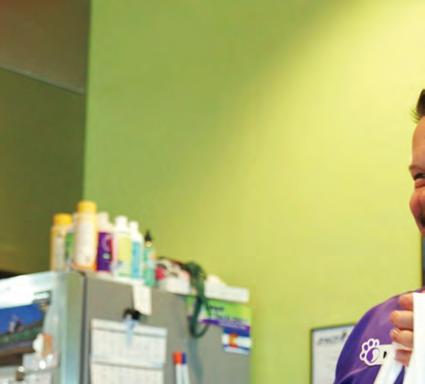
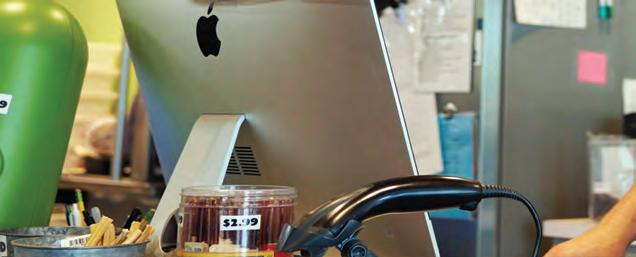

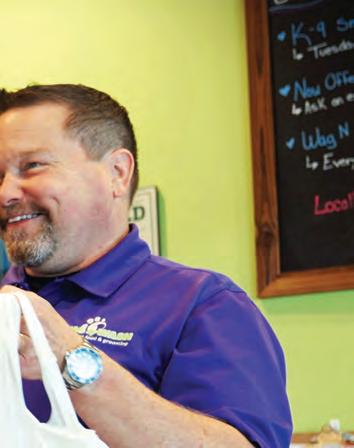
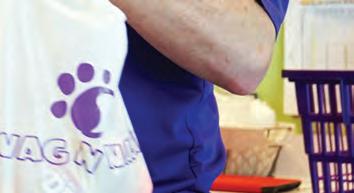




Guthrie’s Chicken fingers
TOTAL UNITS
(Franchised / Co.-Owned)
34/17
STARTUP COST
$234.1K-$737K
Hangry Joe’s Hot Chicken Hot chicken sandwiches
TOTAL UNITS
(Franchised / Co.-Owned)
43/1
STARTUP COST
$238.5K-$421K
Hurricane Grill & Wings
Chicken wings, tenders, sandwiches, salads
TOTAL UNITS
(Franchised / Co.-Owned)
41/0
STARTUP COST
$564.2K-$2.5M
Layne’s Chicken Fingers Chicken tenders
TOTAL UNITS (Franchised / Co.-Owned) 7/4
STARTUP COST
$545K-$1.2M
Lee’s Famous Recipe Chicken
Chicken, biscuits, sides
TOTAL UNITS
(Franchised / Co.-Owned) 110/16
STARTUP COST
$428.3K-$2.1M
Love & Honey Fried Chicken
Fried chicken
TOTAL UNITS (Franchised / Co.-Owned) 0/1
STARTUP COST
$518.9K-$749.7K
Nick and Moes
Convenience stores offering fried chicken
TOTAL UNITS (Franchised / Co.-Owned) 0/6
STARTUP COST
$104.5K-$900.8K
Ooowwweee
Wangz N Catfish
Chicken wings and fried catfish
TOTAL UNITS
(Franchised / Co.-Owned) 0/2
STARTUP COST
$155.9K-$277.9K
Popeyes Louisiana Kitchen
Fried chicken, seafood, biscuits
TOTAL UNITS (Franchised / Co.-Owned) 4,050/41
STARTUP COST
$383.5K-$3.7M
Rise Southern Biscuits & Righteous Chicken
Biscuits and chicken
TOTAL UNITS
(Franchised / Co.-Owned) 14/4
STARTUP COST
$410.1K-$638.6K
Rooster & Rice
Thai chicken rice
TOTAL UNITS
(Franchised / Co.-Owned) 1/8
STARTUP COST
$325.6K-$468K
Slim Chickens
Chicken tenders, chicken wings, salads, sandwiches, wraps
TOTAL UNITS
(Franchised / Co.-Owned) 203/11
STARTUP COST
$1.6M-$4.4M
VooDoo Wing Company
Chicken wings, salads, sandwiches, sides, desserts
TOTAL UNITS
(Franchised / Co.-Owned) 2/5
STARTUP COST
$207.8K-$475.95K
Wing It On!
Chicken wings, sandwiches, and tenders
TOTAL UNITS
(Franchised / Co.-Owned) 10/2
STARTUP COST
$210.5K-$440K
Wings and Rings
Sports restaurants and bars
TOTAL UNITS
(Franchised / Co.-Owned) 79/8
STARTUP COST
$1.5M-$1.99M
The children’s enrichment industry is everexpanding, and STEM enrichment programs are the most popular. Why?
Parents recognize the importance of science, technology, engineering, and math—as well as the critical thinking and creativity these programs seek to develop. They’re investing in their children’s future, and franchises are rising to the task.
Wings Etc. Restaurants and pubs
TOTAL UNITS
(Franchised / Co.-Owned)
55/25
STARTUP COST
$343.9K-$2.8M
Wing Snob
Chicken wings and tenders, sides
TOTAL UNITS
(Franchised / Co.-Owned) 30/0
STARTUP COST
$330.2K-$599.5K
Wingstop
Chicken wings, tenders, and sandwiches, fries, sides
TOTAL UNITS
(Franchised / Co.-Owned) 2,001/45
STARTUP COST
$325.6K-$974.7K
Wing Zone
Chicken wings, tenders, and sandwiches
TOTAL UNITS
(Franchised / Co.-Owned) 57/2
STARTUP COST
$420.8K-$751K
Zaxby’s
Chicken fingers, Buffalo wings, sandwiches, salads
TOTAL UNITS
(Franchised / Co.-Owned)
776/146
STARTUP COST
$1.4M-$3.3M
Brooklyn Robot Foundry STEAM enrichment programs
TOTAL UNITS (Franchised / Co.-Owned) 2/1
STARTUP COST
$90.8K-$117.2K
Challenge Island Educational enrichment programs
TOTAL UNITS
(Franchised / Co.-Owned) 216/7
STARTUP COST
$53.4K-$68.9K
Club SciKidz STEM enrichment programs
TOTAL UNITS
(Franchised / Co.-Owned) 12/1
STARTUP COST
$63.7K-$76K
Code Ninjas
Computer-coding learning centers for ages 5 and up
TOTAL UNITS (Franchised / Co.-Owned) 378/7
STARTUP COST
$149.8K-$378.1K
theCoderSchool
Coding education for ages 7 to 18
TOTAL UNITS
(Franchised / Co.-Owned) 57/3
STARTUP COST
$77.7K-$193.95K
Code Wiz
Coding, robotics, and STEM enrichment classes and camps for ages 7 to 17
TOTAL UNITS (Franchised / Co.-Owned) 14/2
STARTUP COST
$150K-$237.4K
CompuChild Entrepreneurship and STEAM enrichment classes
TOTAL UNITS (Franchised / Co.-Owned) 9/7
STARTUP COST
$29.5K-$49.5K
DroneTogether Drone-flying and STEM enrichment programs
TOTAL UNITS
(Franchised / Co.-Owned) 0/1
STARTUP COST
$39.3K-$61.7K
iCode Computer science education for children in grades K-12
TOTAL UNITS (Franchised / Co.-Owned) 29/2
STARTUP COST $249K-$408K
Idea Lab Kids STEAM enrichment classes, camps, and parties
TOTAL UNITS (Franchised / Co.-Owned) 16/0
STARTUP COST $163K-$465K Little Medical School
Healthcare-themed afterschool and summer-camp programs
TOTAL UNITS (Franchised / Co.-Owned) 40/4
STARTUP COST
$58.2K-$226.9K
Mad Science Science education and entertainment programs
TOTAL UNITS (Franchised / Co.-Owned) 110/8
STARTUP COST
$113.3K-$312.96K
Nutty Scientists Science enrichment and entertainment programs
TOTAL UNITS (Franchised / Co.-Owned) 309/4
STARTUP COST
$35.5K-$149.8K


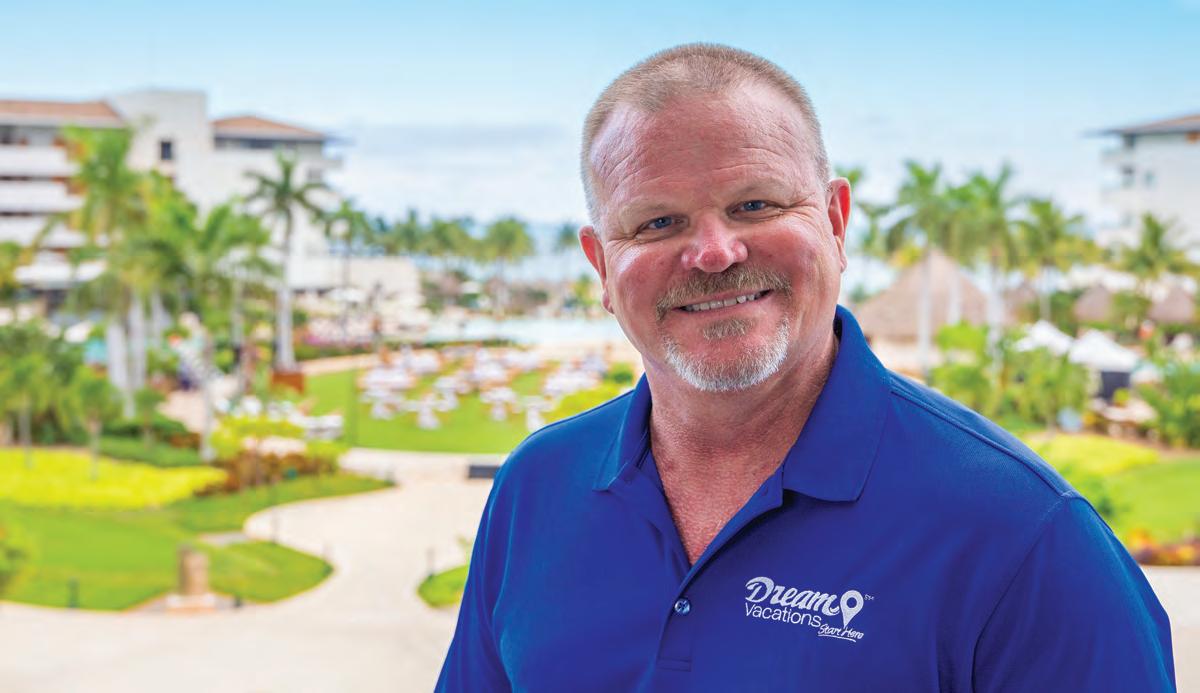



























Skill Samurai
STEM and coding academies
TOTAL UNITS
(Franchised / Co.-Owned) 21/0
STARTUP COST
$74.6K-$307.95K
Snapology
STEAM education programs
TOTAL UNITS
(Franchised / Co.-Owned) 160/3
STARTUP COST
$73.7K-$611.8K
Stemtree
Science, coding, robotics, electronics, and math programs
TOTAL UNITS
(Franchised / Co.-Owned)
14/1
STARTUP COST
$83.8K-$179.8K
Wize Computing Academy
Coding, robotics, and design classes, camps, and competition prep
TOTAL UNITS
(Franchised / Co.-Owned) 17/2
STARTUP COST
$40K-$70K
Zebra Robotics
Robotics, coding, and technology education centers for grades 1 through 12
TOTAL UNITS
(Franchised / Co.-Owned)
5/6
STARTUP COST
$160K-$320K
Health and wellness once again make our list, as consumers continue to place a high priority on their physical—and mental—well-being. Once again, the biggest trendwithin-the-trend is nontraditional wellness services, such as IV vitamin therapy, CBD, infrared saunas, cryotherapy, chiropractic care, and more.
American Family Care
Urgent care/primary care centers
TOTAL UNITS (Franchised / Co.-Owned) 252/79
STARTUP COST
$1.2M-$1.7M
Any Lab Test Now
Health and wellness, drug and alcohol, and DNA lab testing services
TOTAL UNITS (Franchised / Co.-Owned) 218/7
STARTUP COST
$144.2K-$237.9K
ApexNetwork
Physical Therapy
Physical therapy
TOTAL UNITS
(Franchised / Co.-Owned) 26/66
STARTUP COST
$177.2K-$347.2K
BeBalanced
Natural Weight Loss Centers
Weight-loss and wellness services
TOTAL UNITS
(Franchised / Co.-Owned) 26/1
STARTUP COST
$155.7K-$208.5K
beem Light Sauna
Infrared sauna suites, redlight therapy rooms, related services/products
TOTAL UNITS
(Franchised / Co.-Owned) 2/2
STARTUP COST
$209.3K-$568.8K
Bellasee
Surgical eyecare centers
TOTAL UNITS
(Franchised / Co.-Owned) 0/2
STARTUP COST
$510.3K-$851.2K
Bodenvy
Body-sculpting services; weight management and nutrition supplements and products
TOTAL UNITS
(Franchised / Co.-Owned) 1/2
STARTUP COST
$609K-$1M
BodyWorkz
Chiropractic, acupuncture, and massage services
TOTAL UNITS
(Franchised / Co.-Owned) 1/1
STARTUP COST
$127K-$197K
The B12 Store
Vitamin injections
TOTAL UNITS
(Franchised / Co.-Owned) 44/1
STARTUP COST
$81.1K-$223.2K
Cereset
Neurotechnology to help the brain relax and reset
TOTAL UNITS
(Franchised / Co.-Owned) 55/1
STARTUP COST
$104.4K-$226.6K
City Cave
Wellness centers
TOTAL UNITS
(Franchised / Co.-Owned) 70/1
STARTUP COST
$491K-$795K
The Covery Wellness Spa
Wellness, aesthetic, and recovery services
TOTAL UNITS
(Franchised / Co.-Owned) 5/3
STARTUP COST
$328.5K-$605K
The DripBar IV vitamin therapy
TOTAL UNITS
(Franchised / Co.-Owned) 57/1
STARTUP COST
$142.1K-$404.8K
Ellie Mental Health
Outpatient mental health services
TOTAL UNITS (Franchised / Co.-Owned) 122/26
STARTUP COST
$278.5K-$480.4K
Essential Speech and ABA Therapy
ABA, speech, and occupational therapy for children 18 months to 6 years diagnosed with autism
TOTAL UNITS (Franchised / Co.-Owned) 2/4
STARTUP COST
$186.6K-$557.5K
Evolve Human Optimization Labs
Saunas, cold plunge/ contrast therapy, cognitive training, compression sleeves
TOTAL UNITS (Franchised / Co.-Owned) 0/1

STARTUP COST
$414.3K-$676.8K
Fastest Labs
Drug, alcohol, and DNA testing; background screening
TOTAL UNITS
(Franchised / Co.-Owned)
STARTUP COST
$101.2K-$153.7K
Franny’s Farmacy CBD products and accessories
TOTAL UNITS (Franchised / Co.-Owned)
STARTUP COST
$206.6K-$362.5K
Fyzical Therapy & Balance Centers
Physical therapy, balance and vestibular therapy, preventive wellness
TOTAL UNITS (Franchised / Co.-Owned)
STARTUP COST
$166.8K-$479K
Glow Sauna Studios
Infrared saunas, red light therapy, halotherapy, related services
TOTAL UNITS (Franchised / Co.-Owned) 0/2
STARTUP COST
$222.7K-$381.4K
The Good Feet Store
Arch supports, related products
TOTAL UNITS (Franchised / Co.-Owned) 213/26
STARTUP COST
$248.8K-$587.8K
GreenLight Mobility Mobility equipment and home modifications for safety and accessibility
TOTAL UNITS (Franchised / Co.-Owned) 1/1
STARTUP COST
$116.2K-$179.5K
HealthSource America’s Chiropractor Chiropractic, rehabilitation, spinal decompression, laser therapy, and wellness services and products
TOTAL UNITS (Franchised / Co.-Owned) 136/0
STARTUP COST
$115.2K-$492.4K
Hydrate IV Bar IV therapy spas
TOTAL UNITS (Franchised / Co.-Owned) 6/4
STARTUP COST
$238.1K-$454K
Icebox Cryotherapy Cold therapy studios
TOTAL UNITS (Franchised / Co.-Owned) 17/1
STARTUP COST
$372.9K-$639.7K iCryo
Cryotherapy, body sculpting, IV infusions and vitamin shots, light therapy, pain management and recovery services
TOTAL UNITS (Franchised / Co.-Owned) 29/4
STARTUP COST $474.5K-$1.2M iFlex Stretch Studios
Assisted stretching
TOTAL UNITS (Franchised / Co.-Owned) 0/1
STARTUP COST $169.4K-$293.5K

TheB-12Storehas beengrowing.YEARS 10+

IV Nutrition Now IV vitamins and intramuscular injections
TOTAL UNITS
(Franchised / Co.-Owned)
19/2
STARTUP COST
$199.3K-$327.3K
The Joint Chiropractic Chiropractic services
TOTAL UNITS
(Franchised / Co.-Owned)
762/135
STARTUP COST
$215.3K-$478.99K
Mobility City
Mobility equipment repairs, rentals, and sales
TOTAL UNITS
(Franchised / Co.-Owned)
36/1
STARTUP COST
$197.4K-$460K
Mobility Plus Sales, rentals, installations, and repairs of mobility products
TOTAL UNITS
(Franchised / Co.-Owned) 58/0
STARTUP COST
$249.99K-$391.99K
Next Day Access
Wheelchair ramps, grab bars, stairlifts, and other accessibility and mobility products
TOTAL UNITS
(Franchised / Co.-Owned)
28/2
STARTUP COST
$159.7K-$316K
NuSpine Chiropractic Chiropractic services
TOTAL UNITS
(Franchised / Co.-Owned)
32/0
STARTUP COST
$204.9K-$405.3K
NutritionHQ. Health, weight-loss, and sports nutrition supplements and related products
TOTAL UNITS (Franchised / Co.-Owned) 1/1
STARTUP COST
$172.5K-$290.5K
100% Chiropractic Chiropractic services, massage therapy, nutritional supplements
TOTAL UNITS
(Franchised / Co.-Owned) 114/3
STARTUP COST
$347.5K-$829.2K
Pearle Vision
Eye care and eyewear
TOTAL UNITS
(Franchised / Co.-Owned)
461/109
STARTUP COST
$70.2K-$990.7K
Infrared sauna and red light therapy
TOTAL UNITS
(Franchised / Co.-Owned) 36/4
STARTUP COST
$425.3K-$736.9K
Prime IV Hydration & Wellness IV therapy, cryotherapy, peptides
TOTAL UNITS (Franchised / Co.-Owned) 76/1
STARTUP COST
$164.6K-$599.7K
QC Kinetix
Regenerative medicine and nonsurgical pain management therapies
TOTAL UNITS (Franchised / Co.-Owned) 187/12
STARTUP COST
$227.3K-$495.9K
Relax The Back Wellness and back-related equipment, furniture, and products
TOTAL UNITS (Franchised / Co.-Owned) 77/2
STARTUP COST
$190.3K-$392.3K
The Salt Suite Salt therapy
TOTAL UNITS
(Franchised / Co.-Owned) 8/1
STARTUP COST
$238.7K-$483.1K
Saunatica
Far infrared saunas, red light therapy, halotherapy
TOTAL UNITS
(Franchised / Co.-Owned) 0/1
STARTUP COST
$396.2K-$597.8K
StretchLab
Assisted stretching
TOTAL UNITS
(Franchised / Co.-Owned) 371/3
STARTUP COST
$162.6K-$333.9K
StretchMed
Assisted stretching
TOTAL UNITS
(Franchised / Co.-Owned) 25/1
STARTUP COST
$70.4K-$185.5K
Stretch Zone
Assisted stretching
TOTAL UNITS
(Franchised / Co.-Owned)
300/3
STARTUP COST
$113.9K-$226.9K
Success on the Spectrum
Autism treatment services for children and young adults
TOTAL UNITS
(Franchised / Co.-Owned)
19/2
STARTUP COST
$313.5K-$851.3K
The Tox
Body sculpting services and related products
TOTAL UNITS
(Franchised / Co.-Owned)
1/12
STARTUP COST
$235K-$396.5K
True REST Spa
Floatation therapy
TOTAL UNITS
(Franchised / Co.-Owned)
46/3
STARTUP COST
$416.3K-$924.1K
Upgrade Labs
Health and wellness services
TOTAL UNITS
(Franchised / Co.-Owned) 2/2
STARTUP COST
$633.4K-$1.2M
Vital Care Infusion Services
Infusion drugs, supplies, and equipment, infusion nursing, and related services
TOTAL UNITS
(Franchised / Co.-Owned) 71/2
STARTUP COST
$535.9K-$995.4K
The Vitamin Shoppe
Vitamins, minerals, supplements, sport nutrition products
TOTAL UNITS
(Franchised / Co.-Owned)
31/673
STARTUP COST
$528.9K-$976.9K
V-Juv
Botox, body shaping, incontinence treatments, and other clinical services
TOTAL UNITS
(Franchised / Co.-Owned) 0/6
STARTUP COST
$322K-$610K
Your CBD Store
CBD stores
TOTAL UNITS
(Franchised / Co.-Owned) 289/1
STARTUP COST
$93.3K-$148.6K
Zion Healing Centers
Mental and behavioral health services
TOTAL UNITS
(Franchised / Co.-Owned) 6/1
STARTUP COST
$320.2K-$508.3K
Zivel
Cryotherapy, float therapy, infrared sauna, cryoskin
TOTAL UNITS
(Franchised / Co.-Owned) 3/2
STARTUP COST
$252.4K-$360K
Although the meal preparation and delivery category is just emerging, we think it has lots of potential to grow— as busy consumers seek ways to make mealtime both easier and healthier. Expect to see more franchisors show up in this space soon.
Delivered
Meal preparation and delivery
TOTAL UNITS
(Franchised / Co.-Owned) 1/1
STARTUP COST
$86.4K-$330.5K
Lean Kitchen Company
Healthy prepared meals, beverages, nutritional supplements
TOTAL UNITS
(Franchised / Co.-Owned) 31/2
STARTUP COST
$151.5K-$441.8K
Meals of Hope
Meal packing events
TOTAL UNITS
(Franchised / Co.-Owned) 7/1
STARTUP COST
$61.1K-$71.9K
The New York Butcher Shoppe
Meats, prepared meals, specialty groceries, wines
TOTAL UNITS
(Franchised / Co.-Owned) 19/8
STARTUP COST
$438K-$776K
PDX Meal Prep
Healthy meal delivery
TOTAL UNITS
(Franchised / Co.-Owned) 0/1
STARTUP COST
$63.1K-$76.3K
Pests and wildlife aren’t just a nuisance—they can spread disease, cause damage, and carry other dangers. That’s why pest-control and wildlife-control franchises are considered essential businesses. Many also work well as seasonal businesses that can be added on to other home services businesses.
Deer Solution
Deer repellant services
TOTAL UNITS (Franchised / Co.-Owned) 5/1
STARTUP COST
$97.3K-$133.4K
Mosquito Authority Mosquito control
TOTAL UNITS (Franchised / Co.-Owned) 541/1
STARTUP COST
$54K-$127.7K
Mosquito Hunters Mosquito, tick, and flea control
TOTAL UNITS
(Franchised / Co.-Owned) 133/6
STARTUP COST
$99.8K-$116.8K
Mosquito Joe Outdoor pest control
TOTAL UNITS (Franchised / Co.-Owned) 419/2
STARTUP COST
$112.8K-$153.4K
Mosquito Mary’s Outdoor pest control
TOTAL UNITS
(Franchised / Co.-Owned) 10/2
STARTUP COST
$92.96K-$116.9K
Mosquito Shield Outdoor pest control
TOTAL UNITS
(Franchised / Co.-Owned) 375/0
STARTUP COST
$98.9K-$139.95K
Mosquito Squad Outdoor pest control
TOTAL UNITS (Franchised / Co.-Owned) 224/15
STARTUP COST
$164.5K-$217.1K
Mozzie Dome
Mosquito control
TOTAL UNITS (Franchised / Co.-Owned) 3/0
STARTUP COST
$90.2K-$146.9K
ohDeer
Natural deer, tick, and mosquito control
TOTAL UNITS (Franchised / Co.-Owned) 12/2
STARTUP COST
$116.3K-$143.5K
Patio Patrol
Residential outdoor pest control
TOTAL UNITS (Franchised / Co.-Owned) 8/0
STARTUP COST
$74.5K-$169.5K
Pestmaster
Pest and rodent control, wildlife exclusion, vegetation management
TOTAL UNITS (Franchised / Co.-Owned) 41/6
STARTUP COST
$84.6K-$188.8K
Safer Home Services
Pest control
TOTAL UNITS (Franchised / Co.-Owned) 2/3
STARTUP COST
$164.2K-$214.8K
Skedaddle Humane Wildlife Control
Humane wildlife removal, pest control, holiday lighting installation, attic restoration
TOTAL UNITS (Franchised / Co.-Owned) 12/23
STARTUP COST
$89.6K-$238.6K
Wildlife X Team/X Team Services
Wildlife management; roofing, siding, painting, and home repair services
TOTAL UNITS
(Franchised / Co.-Owned) 10/10
STARTUP COST $56.3K-$111.6K






































Dog daycare, boarding, and
Dog Training Elite
Pet waste management
In Home Pet Services
Pet-sitting, dog-walking
TOTAL UNITS (Franchised / Co.-Owned) 12/1
STARTUP COST
$9K-$35.1K
K9 Resorts Luxury
Pet Hotel
Luxury dog daycare and boarding
TOTAL UNITS (Franchised / Co.-Owned) 20/5
STARTUP COST
$1.3M-$2.5M
petbar
Pet grooming and bathing
TOTAL UNITS
(Franchised / Co.-Owned) 28/2
STARTUP COST
$397.6K-$745.8K
Pet Evolution
Spending on our furry friends continues to grow year after year, with the American Pet Products Association projecting $143.6 billion in sales in the U.S. for 2023. Whether it’s grooming, training, daycare, scooping poop, or scooping pup-friendly ice cream (really!), there’s no shortage of opportunity in the pet industry.
Always Faithful
Dog Training Dog training
TOTAL UNITS
(Franchised / Co.-Owned)
25/1
STARTUP COST
$91.9K-$101.3K
Mobile pet grooming
TOTAL UNITS
(Franchised / Co.-Owned) 82/0
STARTUP COST
$180.4K-$203.2K
Bark Avenue Daycamp
Dog daycare, boarding, training, and grooming
TOTAL UNITS
(Franchised / Co.-Owned) 0/1
STARTUP COST
$228.3K-$426.4K
Bark Busters Home
Dog Training
In-home dog training
TOTAL UNITS
(Franchised / Co.-Owned) 129/0
STARTUP COST
$65.7K-$99.5K
Ben’s Barketplace
Pet health-food stores
TOTAL UNITS
(Franchised / Co.-Owned) 3/3
STARTUP COST
$189.8K-$350.5K
Bubbly Paws
Pet grooming and selfservice dog washing
TOTAL UNITS (Franchised / Co.-Owned) 4/5
STARTUP COST
$197.4K-$370.9K
daycare, grooming, self-

Dog daycare, boarding, training, grooming
TOTAL UNITS
(Franchised / Co.-Owned) 207/7
STARTUP COST
$1M-$1.7M
Central Bark
Dog daycare, boarding, grooming, training, and retail
TOTAL UNITS
(Franchised / Co.-Owned) 35/0
STARTUP COST
$552.8K-$934.2K
Dogdrop
On-demand dog daycare
TOTAL UNITS
(Franchised / Co.-Owned) 1/1
STARTUP COST
$308K-$597.4K
D.O.G. Hotels
Dog boarding, daycare, and grooming
TOTAL UNITS
(Franchised / Co.-Owned) 6/1
STARTUP COST
$605K-$775K
The Dog Stop
Dog care services and products
TOTAL UNITS
(Franchised / Co.-Owned) 18/6
STARTUP COST
$543K-$1M
Pet boarding, daycare, bathing, grooming, wellness services, training, and dog parks
TOTAL UNITS
(Franchised / Co.-Owned) 0/3
STARTUP COST
$1.95M-$4.98M
Happy Cat Hotel & Spa
Luxury cat boarding, grooming, and retail
TOTAL UNITS
(Franchised / Co.-Owned) 2/2
STARTUP COST
$398K-$878K
Hot Diggity Dog Resort
Dog boarding, daycare, training, and grooming
TOTAL UNITS
(Franchised / Co.-Owned) 0/1
STARTUP COST
$319.1K-$468.2K
Hounds Town USA
Dog daycare, pet boarding, pet grooming
TOTAL UNITS
(Franchised / Co.-Owned) 47/1
STARTUP COST
$457.2K-$771.9K
Healthy pet food, pet products, grooming, selfwash stations
TOTAL UNITS (Franchised / Co.-Owned) 7/2
STARTUP COST
$635.2K-$988.8K
Petland
Pets, pet supplies, boarding, daycare, grooming
TOTAL UNITS
(Franchised / Co.-Owned) 390/27
STARTUP COST
$303K-$1.1M
Pet Passages
Pet funeral and cremation services and products
TOTAL UNITS (Franchised / Co.-Owned) 13/2
STARTUP COST
$45.5K-$418K
Pet Supplies Plus
Pet food and supplies, bathing/grooming services
TOTAL UNITS (Franchised / Co.-Owned)
468/235
STARTUP COST
$493.2K-$1.8K
Pet Wants
Natural pet-food stores/ delivery
TOTAL UNITS (Franchised / Co.-Owned) 132/1
STARTUP COST
$131.4K-$202.5K
PetWellClinic
Walk-in pet clinics
TOTAL UNITS (Franchised / Co.-Owned) 19/4
STARTUP COST
$203.9K-$487.5K
Scenthound Routine dog care and grooming services TOTAL UNITS (Franchised / Co.-Owned) 50/6 STARTUP COST $311.2K-$485.6K Scoop Soldiers Pet waste removal TOTAL UNITS (Franchised / Co.-Owned) 46/16 STARTUP COST $68.3K-$118.3K Sit Means Sit





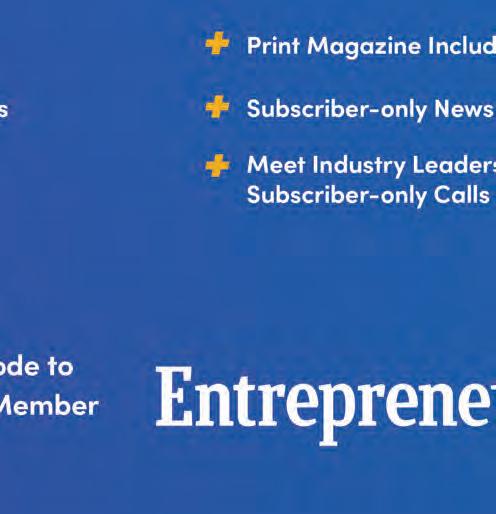


Woofie’s
Pet sitting, dog walking, mobile pet grooming
TOTAL UNITS
(Franchised / Co.-Owned)
23/2
STARTUP COST
$129.1K-$246.4K
Zoomin Groomin
Mobile pet grooming
TOTAL UNITS
(Franchised / Co.-Owned)
43/0
STARTUP COST
$57.9K-$152.9K
Zoom Room
Indoor dog training and socialization, pet products
TOTAL UNITS
(Franchised / Co.-Owned)
54/1
STARTUP COST
$271.7K-$407.4K
RESTORATION
Restoration franchises thrive in any conditions— because the worse conditions are, the more their services are needed! The never-ending need for restoration and remediation after fires, floods, and other disasters makes this one of the most resilient categories of franchising.
AdvantaClean Mold remediation and indoor air quality services
TOTAL UNITS
(Franchised / Co.-Owned)
132/0
STARTUP COST
$115.98K-$196.5K
All Dry Services
Water and mold remediation and restoration
TOTAL UNITS
(Franchised / Co.-Owned)
125/1
STARTUP COST
$87.7K-$275.3K
Aqua Express
Restoration
Water and fire damage restoration and mold removal
TOTAL UNITS
(Franchised / Co.-Owned) 0/1
STARTUP COST
$182.3K-$236.2K
Best Option
Restoration
Disaster restoration
TOTAL UNITS (Franchised / Co.-Owned) 39/0
STARTUP COST
$155.5K-$200K
Blue Kangaroo Packoutz
Contents restoration
TOTAL UNITS
(Franchised / Co.-Owned) 91/1
STARTUP COST
$221.8K-$431.4K
Disaster Blaster
Property damage mitigation and reconstruction
TOTAL UNITS
(Franchised / Co.-Owned) 0/1
STARTUP COST
$136.3K-$242.7K
DRYmedic
Restoration Services
Disaster restoration services
TOTAL UNITS
(Franchised / Co.-Owned) 27/16
STARTUP COST
$133.5K-$317K
Eco Restoration & Construction
Restoration
TOTAL UNITS
(Franchised / Co.-Owned) 0/1
STARTUP COST
$156.6K-$207.1K
FRSTeam
Restoration of textiles and electronics
TOTAL UNITS
(Franchised / Co.-Owned) 41/12
STARTUP COST
$44.4K-$411K
Lightspeed
Restoration
Residential and commercial water and fire
restoration
TOTAL UNITS
(Franchised / Co.-Owned) 3/0
STARTUP COST
$154.98K-$253.5K
911 Restoration
Residential and commercial property restoration
TOTAL UNITS
(Franchised / Co.-Owned)
288/6
STARTUP COST
$79.6K-$218.4K
1-800-Packouts
Contents packing, cleaning, storage, and restoration
TOTAL UNITS
(Franchised / Co.-Owned)
47/0
STARTUP COST
$138.1K-$356.5K
1-800-Textiles
Textile restoration
TOTAL UNITS
(Franchised / Co.-Owned)
47/0
STARTUP COST
$71.7K-$739.5K
1-800 Water Damage
Property restoration
TOTAL UNITS
(Franchised / Co.-Owned)
185/0
STARTUP COST
$207.6K-$297.1K
Paul Davis
Restoration
Insurance restoration
TOTAL UNITS
(Franchised / Co.-Owned)
297/0
STARTUP COST
$238.1K-$617.1K
Preservan
Wood rot repair
TOTAL UNITS
(Franchised / Co.-Owned) 2/1
STARTUP COST
$79.6K-$133.8K
Prism Specialties
Restoration of electronics, art, textiles, and documents
TOTAL UNITS
(Franchised / Co.-Owned)
153/3
STARTUP COST
$149.95K-$322.4K
PuroClean
Property damage restoration and remediation
TOTAL UNITS
(Franchised / Co.-Owned)
436/0
STARTUP COST
$95.5K-$245.9K
Rainbow
Restoration
Restoration and remediation
TOTAL UNITS
(Franchised / Co.-Owned)
369/0
STARTUP COST
$169.3K-$325.9K
Restoration 1
Water, fire, smoke, and mold restoration
TOTAL UNITS
(Franchised / Co.-Owned)
296/0
STARTUP COST
$94.6K-$226.1K
Rytech Restoration Water, mold, fire, and smoke restoration; COVID sanitation
TOTAL UNITS
(Franchised / Co.-Owned)
87/3
STARTUP COST
$141.4K-$213K
ServiceMaster
Restore
Commercial/residential disaster restoration
TOTAL UNITS
(Franchised / Co.-Owned) 2,334/0
STARTUP COST
$252.7K-$358.8K
Servpro
Fire, water, and other damage cleanup, restoration, and reconstruction
TOTAL UNITS
(Franchised / Co.-Owned)
2,199/0
STARTUP COST
$236.3K-$296.8K
Steamatic
Insurance/disaster restoration, cleaning, mold remediation, air quality control
TOTAL UNITS
(Franchised / Co.-Owned) 130/3
STARTUP COST
$216.5K-$431.4K
True North
Restoration
Restoration services
TOTAL UNITS
(Franchised / Co.-Owned) 10/1
STARTUP COST
$87.3K-$195K
VetCor
Emergency restoration services
TOTAL UNITS
(Franchised / Co.-Owned) 23/1
STARTUP COST
$173.9K-$358.3K
Voda Cleaning & Restoration
Restoration and floor cleaning
TOTAL UNITS
(Franchised / Co.-Owned) 0/1
STARTUP COST
$146.5K-$198.3K
Consumers are looking for creative ways to get and stay active, and sports-related franchises are ready to fill that need. You’ll find franchises offering children’s sports enrichment programs, sportsbased fitness programs for adults, golf simulators, pickleball clubs, swim classes, and more.
Ace Pickleball Club
Indoor pickleball clubs
TOTAL UNITS
(Franchised / Co.-Owned) 0/1
STARTUP COST
$910.5K-$1.3M
Amazing Athletes
Educational sports programs
TOTAL UNITS
(Franchised / Co.-Owned) 134/13
STARTUP COST
$58.1K-$91.5K
American Poolplayers Association
Recreational billiard leagues
TOTAL UNITS
(Franchised / Co.-Owned) 334/6
STARTUP COST
$23.2K-$29K
Aqua-Tots Swim Schools
Swimming lessons
TOTAL UNITS (Franchised / Co.-Owned) 137/1
STARTUP COST
$984.1K-$2M
Athletic Republic Sports performance training and fitness
TOTAL UNITS (Franchised / Co.-Owned) 42/0
STARTUP COST
$285K-$627K
Big Blue Swim School
Swimming lessons for ages 3 months to 12 years
TOTAL UNITS (Franchised / Co.-Owned) 22/5
STARTUP COST
$3.1M-$4.4M
British Swim School
Swimming lessons for ages 3 months and older
TOTAL UNITS (Franchised / Co.-Owned) 178/0
STARTUP COST
$99.96K-$135K
Child’s Play Challenge Courses Mobile obstacle courses for events
TOTAL UNITS (Franchised / Co.-Owned) 0/1
STARTUP COST
$95.8K-$162.5K
CycleBar
Indoor cycling classes
TOTAL UNITS (Franchised / Co.-Owned) 280/13
STARTUP COST
$351.5K-$501.9K
D-BAT
Indoor baseball and softball training, batting cages, merchandise
TOTAL UNITS (Franchised / Co.-Owned) 143/0
STARTUP COST
$536.5K-$1M
Destination Athlete Equipment, apparel, fundraising, and performance solutions for youth, high school, and college athletic teams
TOTAL UNITS (Franchised / Co.-Owned) 229/0
STARTUP COST
$28.3K-$93.6K

D1 Training
Athletic training
TOTAL UNITS
(Franchised / Co.-Owned)
90/0
STARTUP COST
$164.3K-$666.2K Dryvebox
Mobile golf simulators
TOTAL UNITS
(Franchised / Co.-Owned) 0/9
STARTUP COST
$138.4K-$399.3K
Freedom Boat Club
Membership boat clubs
TOTAL UNITS
(Franchised / Co.-Owned)
258/124
STARTUP COST
$222.5K-$500.5K
Get Up And Go Kayaking
Guided clear kayak tours
TOTAL UNITS
(Franchised / Co.-Owned) 21/2
STARTUP COST
$55.7K-$99.9K
Goldfish Swim School
Infant and child swimming lessons
TOTAL UNITS
(Franchised / Co.-Owned) 147/4
STARTUP COST
$1.7M-$3.7M
The Gravity Vault Indoor rock-climbing gyms
TOTAL UNITS
(Franchised / Co.-Owned) 8/4
STARTUP COST
$1.2M-$3.3M
Hudson Valley Swim
Swimming and water safety lessons for all ages
TOTAL UNITS
(Franchised / Co.-Owned) 3/7
STARTUP COST
$79.5K-$119.5K
i9 Sports Youth sports leagues, camps, and clinics
TOTAL UNITS (Franchised / Co.-Owned) 233/0
STARTUP COST
$59.9K-$69.9K
Innovative Sport Surfacing
Playground, park, and custom recreation equipment construction, sales, and services
TOTAL UNITS
(Franchised / Co.-Owned) 15/1
STARTUP COST
$238.1K-$532.5K
Legends Boxing
Boxing fitness programs
TOTAL UNITS
(Franchised / Co.-Owned) 16/3
STARTUP COST
$220.3K-$573.4K
Links Golf Cafe Golf cafes
TOTAL UNITS (Franchised / Co.-Owned) 0/0
STARTUP COST
$769.2K-$1.1M
Little Kickers
Preschool soccer programs
TOTAL UNITS (Franchised / Co.-Owned) 332/0
STARTUP COST
$38.1K-$53.2K
Mayweather
Boxing + Fitness
Boxing and functionaltraining programs and personal training
TOTAL UNITS (Franchised / Co.-Owned) 67/1
STARTUP COST
$299.9K-$595.7K
M14Hoops
Youth basketball training and development
TOTAL UNITS
(Franchised / Co.-Owned) 12/2
STARTUP COST
$97.4K-$127.5K
Monster Mini Golf
Indoor mini golf and family entertainment centers
TOTAL UNITS
(Franchised / Co.-Owned) 22/6
STARTUP COST
$781.5K-$911K
My Backyard Sports
Residential and commercial custom sport facility design and installation
TOTAL UNITS
(Franchised / Co.-Owned) 3/1
STARTUP COST
$104.4K-$176.7K
My City All Stars
Youth sports camps
TOTAL UNITS
(Franchised / Co.-Owned) 1/1
STARTUP COST
$114.5K-$265K
National Academy of Athletics
Youth sports camps
TOTAL UNITS
(Franchised / Co.-Owned) 0/13
STARTUP COST
$44.3K-$63.3K
9Round Fitness
Kickboxing fitness circuittraining studios
TOTAL UNITS
(Franchised / Co.-Owned)
559/6
STARTUP COST
$114.6K-$278.4K
Overtime Athletics
Youth sports programs
TOTAL UNITS
(Franchised / Co.-Owned)
37/0
STARTUP COST
$45.9K-$73K
Pickleball Kingdom
Indoor pickleball
TOTAL UNITS
(Franchised / Co.-Owned) 0/1
STARTUP COST
$967K-$2.1M
Play It Again Sports
New and used sporting goods/equipment
TOTAL UNITS
(Franchised / Co.-Owned)
290/0
STARTUP COST
$299.1K-$407.5K
purvelo cycle
Indoor cycling studios
TOTAL UNITS
(Franchised / Co.-Owned) 1/3
STARTUP COST
$358.9K-$458.3K
Redline Athletics
Fitness and athletic training for ages 8 to 18
TOTAL UNITS
(Franchised / Co.-Owned)
54/0
STARTUP COST
$325.3K-$1M
RockBox Fitness
Boxing, kickboxing, and functional strength training fitness studios
TOTAL UNITS
(Franchised / Co.-Owned) 57/0
STARTUP COST
$374.6K-$491.3K
Row House
Indoor rowing classes
TOTAL UNITS
(Franchised / Co.-Owned) 85/12
STARTUP COST
$328.3K-$490.7K
Rumble Boxing
Boxing fitness studios
TOTAL UNITS
(Franchised / Co.-Owned)
52/15
STARTUP COST
$405.6K-$4.2M
Child and adult swimming lessons, parties, summer camps
TOTAL UNITS
(Franchised / Co.-Owned)
146/21
STARTUP COST
$45K-$2.1M
SailTime/PowerTime
Membership boat clubs
TOTAL UNITS
(Franchised / Co.-Owned) 26/1
STARTUP COST
$74.7K-$151.95K
Shoot Indoors
Indoor shooting ranges
TOTAL UNITS
(Franchised / Co.-Owned) 4/0
STARTUP COST
$661.3K-$1.8M
Shoot 360
Basketball training facilities
TOTAL UNITS
(Franchised / Co.-Owned) 29/2
STARTUP COST
$754K-$2.6M
Skyhawks & SuperTots Sports Academy
Children’s fitness programs
TOTAL UNITS
(Franchised / Co.-Owned) 177/70
STARTUP COST
$30.3K-$89.8K
Soccer Shots
Soccer programs for ages 2 to 8
TOTAL UNITS
(Franchised / Co.-Owned) 288/21
STARTUP COST
$42.95K-$54.3K
Striking Beauties
Women’s boxing and fitness studios
TOTAL UNITS
(Franchised / Co.-Owned) 1/1
STARTUP COST
$169.1K-$253.95K
Super Soccer Stars Soccer programs
TOTAL UNITS
(Franchised / Co.-Owned) 3/13
STARTUP COST
$72.8K-$105.8K
Team Up Athletics
Team sport jerseys, apparel, and equipment
TOTAL UNITS
(Franchised / Co.-Owned) 10/1
STARTUP COST
$71.5K-$239.2K
TGA Tennis Golf & Athletics
Golf, tennis, pickleball, and athletic entrichment programs
TOTAL UNITS (Franchised / Co.-Owned) 42/2
STARTUP COST
$63.1K-$101K
30 Minute Hit
Boxing/kickboxing circuittraining programs for women
TOTAL UNITS
(Franchised / Co.-Owned) 81/0
STARTUP COST
$123.4K-$324.95K
USA Ninja Challenge
Youth fitness programs
TOTAL UNITS (Franchised / Co.-Owned) 21/0
STARTUP COST
$321.2K-$420.9K
X-Golf
Indoor golf entertainment venues
TOTAL UNITS (Franchised / Co.-Owned) 84/0
STARTUP COST
$733.4K-$1.6M
Parents continue to place a priority on their children’s education and on helping them get ahead and stay ahead in school. All of that adds up to ample opportunity for franchises that offer tutoring, test prep, and other educational services.
Best Brains Learning Centers Learning centers
TOTAL UNITS (Franchised / Co.-Owned) 150/1
STARTUP COST
$31K-$118.4K
Club Z! In-Home Tutoring Services In-home tutoring
TOTAL UNITS (Franchised / Co.-Owned) 357/0
STARTUP COST
$33.5K-$57.4K
Gideon Math & Reading After-school math and reading programs
TOTAL UNITS (Franchised / Co.-Owned) 19/1
STARTUP COST
$122.5K-$225.5K
Huntington Learning Center Tutoring and test prep
TOTAL UNITS (Franchised / Co.-Owned)
276/10
STARTUP COST
$154.1K-$264K
JEI Learning Center
Individualized supplemental education
TOTAL UNITS (Franchised / Co.-Owned) 163/252
STARTUP COST
$60K-$110.5K
Kumon
Supplemental education
TOTAL UNITS (Franchised / Co.-Owned) 26,205/39
STARTUP COST
$68.4K-$146.6K
Mathnasium Math tutoring
TOTAL UNITS (Franchised / Co.-Owned) 1,106/4
STARTUP COST
$112.9K-$149.3K
Sylvan Learning Supplemental education, STEM camps, college prep
TOTAL UNITS (Franchised / Co.-Owned) 547/5
STARTUP COST
$98.1K-$199.6K
Listen
























If you’ve served, these franchises are eager to help you launch a new business.
compiled by TRACY STAPP HEROLD
Franchisors love veterans. They see them as ideal franchisees, thanks to veterans’ built-in leadership skills, ability to follow prescribed systems, and determination to succeed.
In fact, many franchisors seek to attract veterans—and thank them for their service—by offering them special incentives, usually in the form of a franchise fee discount. Every year, we invite those franchisors to apply for our list of the top franchises for veterans, and this year we had almost 500 applicants. We narrowed that pool down by evaluating several factors, including their veteran incentives, how many of their units are owned by veterans, whether they hold any franchise giveaways or other contests for veterans, whether they have veterans on their leadership team, and more. We also considered each company’s 2023 Franchise 500 score, which is based on an
analysis of 150-plus data points in the areas of costs and fees, size and growth, franchisee support, brand strength, and financial strength and stability.
The result is our ranking of the top 150 franchises for veterans, which you’ll find on the following pages. But we also went beyond the numbers and talked to four sets of veteran franchisees about their experiences with franchising: why they chose the brands they did, how their time in the military helped them succeed, and what advice they have for other veterans looking to follow their lead. Our list is not intended as a recommendation of any particular brand, so if you’re considering buying a franchise, you’d be wise to talk to existing franchisees as well—along with reading the company’s legal documents and consulting with an attorney and an accountant—to find out whether the opportunity is right for you.
1
Snap-on Tools Professional tools and equipment
TOTAL UNITS
(Franchised / Co.-Owned)
4,485/239
STARTUP COST
$201.4K-$465.4K
FRANCHISE FEE
$12K-$16K
VETERAN INCENTIVE
$20,000 off cost of startup inventory
2 Dream Vacations Travel agencies
TOTAL UNITS (Franchised / Co.-Owned)
1,874/0
STARTUP COST
$1.8K-$21K FRANCHISE FEE
$495-$10.5K
VETERAN INCENTIVE
30% off franchise fee; training fee waived for business partner; training fee waived for first veteran/military spouse associate, reduced by 50% for additional veteran/ military associates
3
Grease Monkey Oil changes, preventive maintenance, brakes, light repairs
TOTAL UNITS
(Franchised / Co.-Owned)
254/245
STARTUP COST
$245.8K-$761.95K
FRANCHISE FEE
$39.9K
VETERAN INCENTIVE
$10,000 off franchise fee; rebates on royalty fees for first two years
4 Budget Blinds Window coverings, window film, rugs, accessories
TOTAL UNITS (Franchised / Co.-Owned)
1,472/0
STARTUP COST
$140.5K-$211.8K
FRANCHISE FEE
$19.95K
VETERAN INCENTIVE 15% off franchise and territory fees
5
The UPS Store Shipping, packing, mailboxes, printing, faxing, shredding, notary services
TOTAL UNITS (Franchised / Co.-Owned) 5,568/2
STARTUP COST
$101.8K-$476.99K
FRANCHISE FEE
$9.95K-$29.95K
VETERAN INCENTIVE
$15,000 off franchise fee
6 FastSigns Signs, graphics
TOTAL UNITS (Franchised / Co.-Owned) 768/0
STARTUP COST
$240.1K-$310.6K
FRANCHISE FEE
$49.8K
VETERAN INCENTIVE 50% off franchise fee
7 Matco Tools Mechanics’ tools and equipment
TOTAL UNITS (Franchised / Co.-Owned) 1,942/8
STARTUP COST
$77.2K-$313.6K
FRANCHISE FEE
$8K
VETERAN INCENTIVE
$10,000 off initial inventory
8 Tropical Smoothie Cafe
Smoothies, salads, wraps, sandwiches, flatbreads
TOTAL UNITS
(Franchised / Co.-Owned) 1,311/1
STARTUP COST
$296.5K-$661.5K
FRANCHISE FEE
$30K
VETERAN INCENTIVE
50% off first-store franchise fee; $5,000 off franchise fee for additional stores
9 Cruise Planners Travel agencies
TOTAL UNITS (Franchised / Co.-Owned) 2,719/1
STARTUP COST
$2.3K-$23.5K
FRANCHISE FEE
$695-$10.99K
VETERAN INCENTIVE
$4,000 off $10,995 franchise fee
10
Property damage restoration and remediation
TOTAL UNITS (Franchised / Co.-Owned)
436/0
STARTUP COST
$95.5K-$245.9K
FRANCHISE FEE
$59K
VETERAN INCENTIVE 25% off franchise fee
11
Ziebart
Auto detailing, films, appearance and protection services
TOTAL UNITS
(Franchised / Co.-Owned)
389/11
STARTUP COST
$416.8K-$566.1K
FRANCHISE FEE
$36K
VETERAN INCENTIVE
Franchise fee waived
SpeeDee Oil Change & Auto Service
Oil changes, tune-ups, brakes, and repair services
TOTAL UNITS
(Franchised / Co.-Owned) 112/8
STARTUP COST
$265.6K-$872.1K
FRANCHISE FEE
$39.9K
When Army veterans and brothers-in-law Zach Alsterberg and Will Serra opened their Signal

VETERAN INCENTIVE
$10,000 off franchise fee; rebates on royalty fees for first two years
13
Checkers and Rally’s Burgers, fries
TOTAL UNITS
(Franchised / Co.-Owned)
554/246
STARTUP COST
$751.1k-$2M
FRANCHISE FEE
$30K
VETERAN INCENTIVE Franchise fee waived
14
7-Eleven
Convenience stores
TOTAL UNITS
(Franchised / Co.-Owned)
77,886/5,893
STARTUP COST
$139.2K-$1.4M
FRANCHISE FEE
Up to $1M
VETERAN INCENTIVE
10%-20% off franchise fee, up to $50,000; preferred interest rates and special financing
How did you come to be Signal franchisees?
SERRA: While working as a defense contractor in Afghanistan, I met a man who was becoming a Signal franchisee. He left a $10,000-a-month job to launch this franchise, so that really piqued my interest. Zach was just getting out of the Army, so we had a phone call and I asked him if he wanted to start a business.
ALSTERBERG: I think Will has been an entrepreneur at heart from a very young age. I have become one because of his support and thought process.
Will, you stayed in Afghanistan for a few more years?
SERRA: Yes, I stayed in Afghanistan and was financing the business, but Zach had the rough end of the stick.
How many days was it that you worked every day?
ALSTERBERG: It was over 420, 13 hours a night, seven days a week. That’s what it took to build the team and get us out there.
How has your military experience aided your success?
SERRA: I think the military inscribed in us a discipline and a hunger to succeed.
ALSTERBERG: And dedication to others. One of the things that made us successful is placing our clients’ and our team members’ needs above our own.
What advice would you give to other veterans considering franchise ownership?
SERRA: People don’t realize the level of sacrifice that is needed—but it’s worthwhile because of the freedom.
15 Pearle Vision Eye care and eyewear
$70.2K-$990.7K
17 Sport Clips Haircuts Men’s sports-themed hair salons
$266.3K-$439.5K
18 Smoothie King Smoothies and smoothie bowls
20 Jet-Black/Yellow Dawg Striping Asphalt maintenance
TOTAL UNITS (Franchised / Co.-Owned) 118/6
STARTUP COST
$66.7K-$115.6K FRANCHISE FEE $25K
VETERAN INCENTIVE First-unit franchise fee waived
21 Signal Private security guard and patrol services
TOTAL UNITS (Franchised / Co.-Owned) 1,084/0
STARTUP COST
$57.5K-$273.2K FRANCHISE FEE
$50K-$200K VETERAN INCENTIVE $0.05 off franchise fee per capita in territory
22 Servpro Fire, water, and other damage cleanup, restoration, and reconstruction
TOTAL UNITS (Franchised / Co.-Owned) 2,199/0
STARTUP COST

$236.3K-$296.8K FRANCHISE FEE $90K
VETERAN INCENTIVE 20% off franchise fee
23
WIN Home Inspection Home inspections
TOTAL UNITS
(Franchised / Co.-Owned) 280/0
STARTUP COST
$49.4K-$57.5K
FRANCHISE FEE
$31.9K
VETERAN INCENTIVE 20% off franchise fee
24
Pillar To Post Home Inspectors Home inspections
TOTAL UNITS
(Franchised / Co.-Owned) 510/0
STARTUP COST
$54.2K-$66.8K
FRANCHISE FEE
$34.5K
VETERAN INCENTIVE 20% off franchise fee
Big O Tires
Tires, tire services, auto products
TOTAL UNITS
(Franchised / Co.-Owned) 464/0
STARTUP COST
$375.5K-$1.6M
FRANCHISE FEE
$10K-$17.5K
VETERAN INCENTIVE
Franchise fee waived; 50% marketing spend match during first year, up to $20,000; financing for equipment and tire inventory
26
Dale Carnegie Workplace training and development
TOTAL UNITS
(Franchised / Co.-Owned) 213/1
STARTUP COST
$92K-$252K
FRANCHISE FEE
$20K-$65K
VETERAN INCENTIVE
50% off franchise fee
27
Pirtek
Hydraulic and industrial hose maintenance, repair, and replacement
TOTAL UNITS
(Franchised / Co.-Owned) 647/0
STARTUP COST
$249.4K-$899.3K
FRANCHISE FEE
$50K
VETERAN INCENTIVE
$15,000 off franchise fee
28
Mac Tools
Automotive tools and equipment
TOTAL UNITS
(Franchised / Co.-Owned) 1,159/0
STARTUP COST
$119.9K-$343.4K
FRANCHISE FEE
$8K
VETERAN INCENTIVE
$25,000 startup credit
29 PrideStaff Staffing
TOTAL UNITS (Franchised / Co.-Owned) 77/4
STARTUP COST
$163.7K-$309.6K
FRANCHISE FEE $40K
VETERAN INCENTIVE 50% off franchise fee
30
Mountain Mike’s Pizza
Pizza, wings, salad bar, appetizers
TOTAL UNITS (Franchised / Co.-Owned) 272/0
STARTUP COST
$417.9K-$798.5K
FRANCHISE FEE $30K
VETERAN INCENTIVE 50% off franchise fee
31 The Cleaning Authority Residential and commercial cleaning
TOTAL UNITS
(Franchised / Co.-Owned) 222/3
STARTUP COST
$79.1K-$175.3K
FRANCHISE FEE
$15K-$20K
VETERAN INCENTIVE 30% off first-unit franchise and territory fees
32
Scooter’s Coffee Coffee, espresso, smoothies, pastries, breakfast items
TOTAL UNITS (Franchised / Co.-Owned) 630/21
STARTUP COST
$797K-$1.3M
FRANCHISE FEE
$40K
VETERAN INCENTIVE
$20,000 credit toward first-year product
33 Midas Auto repair and tires
TOTAL UNITS (Franchised / Co.-Owned) 1,941/0
$103.7K-$885.6K FRANCHISE FEE $35K VETERAN INCENTIVE Franchise fee waived
34 Beef Jerky Experience Jerky, sausages, specialty foods and beverages
TOTAL UNITS (Franchised / Co.-Owned) 80/6
$195.8K-$403.9K
35 Kiddie Academy Educational childcare TOTAL UNITS (Franchised / Co.-Owned) 311/1
$370K-$6.8M
VETERAN INCENTIVE
$25,000 off franchise fee
36 The Goddard School Preschool/educational childcare
TOTAL
(Franchised / Co.-Owned) 612/0
$879.95K-$7.6M
37 Bach to Rock Music schools for children and adults TOTAL UNITS (Franchised / Co.-Owned)
38 Window World Residential windows, doors, siding, roofing, and other exterior remodeling products
TOTAL UNITS (Franchised / Co.-Owned) 212/0
STARTUP COST
$122.9K-$328.2K FRANCHISE FEE $45K
VETERAN INCENTIVE $15,000 off franchise fee
39
Spherion Staffing & Recruiting
Flexible staffing, recruiting, workforce management solutions
TOTAL UNITS (Franchised / Co.-Owned) 214/0
STARTUP COST
$214.3K-$471.98K
FRANCHISE FEE $40K
VETERAN INCENTIVE
25% off franchise fee, free office technology package, $1,000 marketing product credit, sales training workshop
40
Postal Annex+
Packing, shipping, postal, and business services
TOTAL UNITS (Franchised / Co.-Owned) 313/0
STARTUP COST
$210.8K-$303.5K
FRANCHISE FEE
$29.95K
VETERAN INCENTIVE 20% off franchise fee
41 Wild Birds Unlimited Bird-feeding supplies and nature gift items
TOTAL UNITS (Franchised / Co.-Owned) 360/0
STARTUP COST
$209.4K-$350K
FRANCHISE FEE
$40K
VETERAN INCENTIVE 15% off franchise fee
42
ASP-America’s Swimming Pool Company
Swimming pool maintenance, repairs, and renovations
TOTAL UNITS
(Franchised / Co.-Owned) 379/0
STARTUP COST
$84.4K-$207.4K
FRANCHISE FEE
$40K-$90K
VETERAN INCENTIVE 30% off franchise fee
43
College Hunks Hauling Junk & Moving
Junk removal, moving, and labor services
TOTAL UNITS
(Franchised / Co.-Owned) 201/3
STARTUP COST
$158.7K-$283.5K
FRANCHISE FEE
$45K-$65K
VETERAN INCENTIVE
$7,500 off franchise fee
44 F45 Training Fitness studios
TOTAL UNITS
(Franchised / Co.-Owned) 1,749/0
STARTUP COST
$350.2K-$565.1K
FRANCHISE FEE
$50K
VETERAN INCENTIVE Up to 50% off franchise fee
45
The Maids Residential cleaning
TOTAL UNITS
(Franchised / Co.-Owned) 1,454/152
STARTUP COST
$77.6K-$155.9K
FRANCHISE FEE
$0
VETERAN INCENTIVE 20% off initial territory fee
46
Image One USA
Commercial cleaning
TOTAL UNITS
(Franchised / Co.-Owned) 20/0
STARTUP COST
$43.6K-$61.2K
FRANCHISE FEE
$29.8K
VETERAN INCENTIVE
21% off franchise fee, or $5,000 in monthly recurring revenue for one year, or 0% financing
APostgraduate School, he opened a Pet Supplies Plus ( Beach, Florida, in 2016. They’ve since opened three more stores. Brian explains his journey.
Eric Rolf
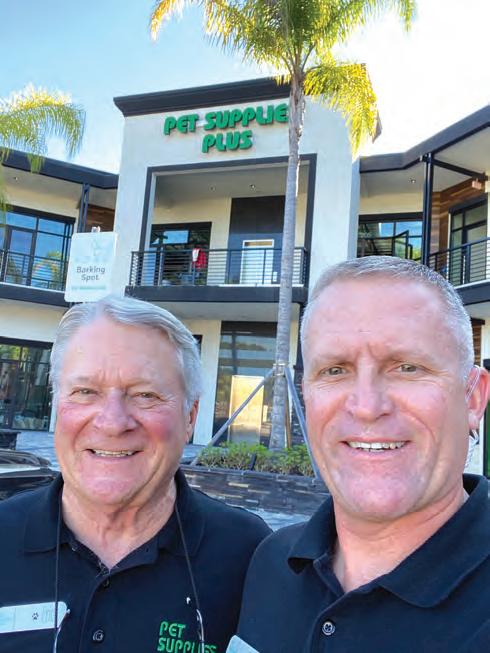
We liked the idea of the pet industry, and my family comes from a long line of grocers—and Pet Supplies Plus is set up more like a grocery model than a bigbox pet store. Veterans appreciate structure and well-run organizations, and that definitely attracted me to franchising, but what specifically drew me to Pet Supplies Plus was that they also allow some creative license. They’ve got good support structure and training, but they also let you put that local spin on your store, because every market is different.
How has your military experience helped with running a franchise?
The leadership training and learning to deal with people
teams within the stores. They probably all get tired of my military colloquialisms, like, “No good plan survives first contact with the enemy.” The enemy could be anything from poor sales to competition moving in. Understanding that and being able to react and have contingency plans in place beforehand is definitely a military way of thinking, but it translates well to business.
What advice would you give to other veterans considering franchise ownership?
Take your time, have an idea of what your goals are, study and prepare, and realize your personal and financial constraints. Go in with eyes wide open and have some good mentors.
$710.5K-$1.2M
48
$98K-$125K
$898.6K-$1.4M
50%
50
$105.6K-$130.8K
TOTAL
(Franchised / Co.-Owned) 206/1
$318K-$2.4M
52 AAMCO Transmissions and Total Car Care Transmission and general auto repairs, diagnostic services
TOTAL UNITS (Franchised / Co.-Owned) 543/13
STARTUP COST
$234.8K-$353.2K
FRANCHISE FEE $39.5K
VETERAN INCENTIVE $8,000 off franchise fee
53 Cornwell Quality Tools Automotive tools and equipment
TOTAL UNITS (Franchised / Co.-Owned) 796/0
STARTUP COST
$54.5K-$298.8K FRANCHISE FEE $0
VETERAN INCENTIVE Interest-free financing on initial inventory purchase
54 Charleys Cheesesteaks & Wings
Philly cheesesteaks, fries, wings, lemonade
TOTAL UNITS
(Franchised / Co.-Owned) 724/59
STARTUP COST
$199.97K-$907K
FRANCHISE FEE
$24.5K
VETERAN INCENTIVE 50% off franchise fee
55 The Tailored Closet Home organization and storage solutions
TOTAL UNITS (Franchised / Co.-Owned) 170/0
STARTUP COST
$155.2K-$268.7K
FRANCHISE FEE
$19.95K
VETERAN INCENTIVE 15% off initial franchise and territory fees
56 1-800 Water Damage
Property restoration
TOTAL UNITS
(Franchised / Co.-Owned) 185/0
STARTUP COST
$207.6K-$297.1K
FRANCHISE FEE
$59K
VETERAN INCENTIVE 20% off franchise fee

VETERAN INCENTIVE 25% off franchise fee
58
Ziggi’s Coffee Coffee, specialty drinks, energy drinks, breakfast and lunch items
TOTAL UNITS (Franchised / Co.-Owned) 68/7
STARTUP COST
$466.5K-$1.8M
FRANCHISE FEE $40K
VETERAN INCENTIVE 25% off first-unit franchise fee
VETERAN INCENTIVE 15% off initial franchise and territory fees
60 My Salon Suite Salon suites
TOTAL UNITS (Franchised / Co.-Owned) 258/31
STARTUP COST
$823.3K-$2.2M
FRANCHISE FEE $50K
VETERAN INCENTIVE 50% off franchise fee
VETERAN INCENTIVE 15% off first-unit franchise fee
62
Lawn Doctor Lawn, tree, and shrub care; mosquito and tick control
TOTAL UNITS (Franchised / Co.-Owned) 635/0
STARTUP COST
$117.7K-$143.2K
FRANCHISE FEE $40K
VETERAN INCENTIVE $10,000 off franchise fee
VETERAN INCENTIVE 25% off franchise fee
64
Batteries Plus Batteries, light bulbs, and related products; repair services
TOTAL UNITS (Franchised / Co.-Owned) 614/117
STARTUP COST
$197.4K-$465.6K
FRANCHISE FEE
$49.5K
VETERAN INCENTIVE $10,000 off franchise fee
$2,500-$7,500
$1.2M-$1.9M
68
70
Appliance
TOTAL UNITS (Franchised / Co.-Owned) 343/0
$94.9K-$177.3K FRANCHISE FEE
$53.1K
VETERAN INCENTIVE 20% off franchise fee
71 Signarama Sign products and services
TOTAL UNITS (Franchised / Co.-Owned) 669/0
STARTUP COST
$120.2K-$318.2K FRANCHISE FEE
$49.5K
VETERAN INCENTIVE 20% off franchise fee
72
PJ’s Coffee of New Orleans Coffee, tea, pastries, sandwiches
TOTAL UNITS (Franchised / Co.-Owned) 164/0
STARTUP COST
$406K-$1.1M
FRANCHISE FEE
$35K
VETERAN INCENTIVE 20% off franchise fee
73
Jan-Pro Cleaning and Disinfecting
Commercial cleaning
TOTAL UNITS
(Franchised / Co.-Owned) 10,654/0
STARTUP COST
$4.8K-$58.1K
FRANCHISE FEE
$2.5K-$44K
VETERAN INCENTIVE
24-month interest-free financing on 50% of franchise fees of $8.1K+
74
9Round Fitness
Kickboxing fitness circuittraining studios
TOTAL UNITS
(Franchised / Co.-Owned) 559/6
STARTUP COST
$114.6K-$278.4K
FRANCHISE FEE
$19.9K
VETERAN INCENTIVE 20% off first-unit franchise fee
75
Biggby Coffee
Specialty coffee, tea, smoothies, baked goods
TOTAL UNITS
(Franchised / Co.-Owned)
360/0
STARTUP COST
$246.3K-$564.6K
FRANCHISE FEE
$20K
VETERAN INCENTIVE 50% off franchise fee
76
TSS Photography
Youth sports, school, and event photography
TOTAL UNITS
(Franchised / Co.-Owned)
153/0
STARTUP COST
$20.4K-$74.7K
FRANCHISE FEE
$8.5K
VETERAN INCENTIVE 15%-20% off franchise and territory fees
77
Wireless Zone
Wireless devices, services, and accessories
TOTAL UNITS
(Franchised / Co.-Owned)
501/0
STARTUP COST
$182.5K-$443.5K
FRANCHISE FEE
$1K-$25K
VETERAN INCENTIVE 50% off franchise fee/ transfer fee
78
The Honey Baked Ham Co.
Retail specialty foods, catering, cafes
TOTAL UNITS
(Franchised / Co.-Owned) 208/199
STARTUP COST
$431.1K-$718.2K
FRANCHISE FEE
$15K
VETERAN INCENTIVE
$5,000 off first-store franchise fee
79
Concrete Craft
Decorative concrete coatings
TOTAL UNITS
(Franchised / Co.-Owned)
85/0
STARTUP COST
$156.3K-$233.5K
FRANCHISE FEE
$19.95K
VETERAN INCENTIVE 15% off initial franchise and territory fees
Marine veteran Bobby Mounts opened his first PJ’s Coffee of New Orleans (No. 72 on our list) in Ruston, Louisiana, in July 2020, and is opening a second location in Monroe, Louisiana, next year. PJ’s named him “Rookie Franchisee of the Year” in 2021 and “Franchisee of the Year” at their 2023 annual conference. Here’s how it happened.
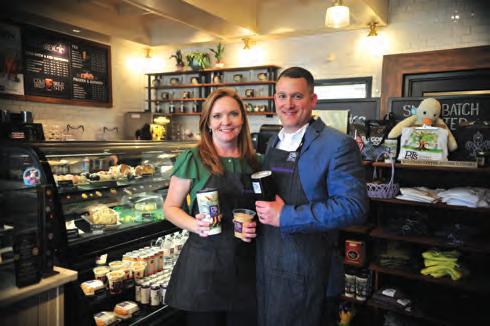
What’s your background?
I was a Marine Corps reservist from 2000 to 2006. After that, I was a police officer for 14 years, but my wife and I decided it was time to get out.
Why franchising, and why PJ’s?
I felt like I had the leadership skills and the discipline to be my own boss. I just didn’t have the business skills—but I knew that could be taught by a good franchisor. We felt that a coffee shop would do well in our town, and I could tell right away after speaking with David Mesa [chief development officer of Ballard Brands, PJ’s parent company] that PJ’s was a veteran-friendly organization. He made me aware of their yearly franchise giveaway contest for veterans, and I ended
up winning that year, so it really accelerated my timeline.
What was it like opening during the height of COVID?
It was scary. I’d already taken out bank loans and signed contracts, and then things were being shut down. I talked with David Mesa and he said, “Keep pushing, you’re gonna be fine.” He was a Marine, too, and he quickly became a mentor to me. So I took his advice and we kept pushing. I’m glad we did, because we were profitable from day one.
What advice would you give to other veterans considering franchise ownership? Take the leap, have confidence in yourself and your leadership abilities, and you can do it.

80
Transworld Business Advisors
Business brokerages; franchise consulting
TOTAL UNITS (Franchised / Co.-Owned)
450/1
STARTUP COST
$94.1K-$119.6K
FRANCHISE FEE
$64.5K
VETERAN INCENTIVE 10% off franchise fee
81
Allegra Marketing Print Mail
Printing, marketing, direct mail, signs, promotional products
TOTAL UNITS
(Franchised / Co.-Owned)
237/2
STARTUP COST
$129.5K-$456.8K
FRANCHISE FEE
$45K
VETERAN INCENTIVE 25% off franchise fee
82
HomeTeam Inspection Service
Home and commercial property inspections and related services
TOTAL UNITS (Franchised / Co.-Owned)
203/0
STARTUP COST
$60.1K-$86.8K
FRANCHISE FEE
$45K-$65K
VETERAN INCENTIVE 15% larger territory
83 Huntington Learning Center
Tutoring and test prep
TOTAL UNITS (Franchised / Co.-Owned)
276/10
STARTUP COST
$154.1K-$264K
FRANCHISE FEE
$36K
VETERAN INCENTIVE 25% off first-unit franchise fee
84
Augusta Lawn Care Services
Lawn care and landscaping
TOTAL UNITS (Franchised / Co.-Owned)
126/7
STARTUP COST
$12.99K-$82.5K
FRANCHISE FEE
$6.99K-$25K
VETERAN INCENTIVE
$5,000 off franchise fee
85
City Wide Facility Solutions
Commercial cleaning and facility maintenance
TOTAL UNITS (Franchised / Co.-Owned)
92/1
STARTUP COST
$178.2K-$379.1K
FRANCHISE FEE
$70K
VETERAN INCENTIVE 10% off franchise fee
86
Fibrenew
Leather, plastic, and vinyl restoration and repair
TOTAL UNITS
(Franchised / Co.-Owned)
308/0
STARTUP COST
$97.8K-$111.7K
FRANCHISE FEE
$47K
VETERAN INCENTIVE 10% off franchise fee
87
Pinch A Penny Pool Patio Spa
Swimming pool and spa retail; pool and backyard maintenance and repair services
TOTAL UNITS (Franchised / Co.-Owned)
276/3
STARTUP COST
$471.4K-$745.2K
FRANCHISE FEE
$50K
VETERAN INCENTIVE 20% off franchise fee
88
Christian Brothers Automotive Auto repair
TOTAL UNITS (Franchised / Co.-Owned)
272/0
STARTUP COST
$520.3K-$645.4K
FRANCHISE FEE
$135K
VETERAN INCENTIVE 10% off franchise fee
89
Corvus Janitorial Systems
Commercial cleaning
TOTAL UNITS (Franchised / Co.-Owned) 1,959/0
STARTUP COST
$9.6K-$34.5K
FRANCHISE FEE
$8.5K-$18.5K
VETERAN INCENTIVE 20% off base franchise fee ($8,500)
90 PostNet Packing, shipping, printing, signs, marketing solutions
TOTAL UNITS (Franchised / Co.-Owned) 663/0
STARTUP COST
$209.3K-$261.3K
FRANCHISE FEE
$36.8K
VETERAN INCENTIVE 35% off franchise fee
91 USA Insulation Home insulation and energy-efficient products
TOTAL UNITS (Franchised / Co.-Owned) 113/1
STARTUP COST
$269.5K-$398K
FRANCHISE FEE $55K
VETERAN INCENTIVE 20% off franchise fee


Amyra Richie just retired from the Navy after 20 years. Her husband Anthane has been in the Navy for 14 years—and counting. We talked to them about how they juggle military service, three kids ages 2 to 17, real estate investments, a podcast, and now a growing Accelerated Waste Solutions franchise (No. 116 on our list) in Chesapeake, Virginia.
What led you to franchising?
ANTHANE: We’ve been investing in real estate, and we started a podcast about it called Rich State of Mind. Through the podcast, we met a franchise facilitator.
AMYRA: And he introduced us to about four franchises.

Why did you choose Accelerated Waste Solutions?
ANTHANE: The biggest thing we were looking for was the ability to remotely operate the business. Currently I’m on shore duty, so I have a lot more flexibility. The idea is before I go back to operational
tour, we will have hired people to run the day-to-day.
We also liked that as a new franchisor, Accelerated Waste Solutions would be more open to input from franchisees. For example, I brought up the idea of, when we do apartment trash-outs, offering to also
remove carpet for a $50 surcharge per room.
How has your military experience helped with running a franchise?
ANTHANE: Project management. We are great at looking at problems and figuring out how to maximize a situation.
What advice would you give to other veterans or active-duty military considering franchise ownership?
ANTHANE: Be strategic in what franchise you pick, because it has to fit your goals.
AMYRA: Know it’s going to be hard work. To be successful, you have to sacrifice.






92
Aroma Joe’s Coffee, espresso, tea, energy drinks, baked goods
TOTAL UNITS
(Franchised / Co.-Owned) 105/0
STARTUP COST
$500.6K-$959.3K
FRANCHISE FEE
$25K
VETERAN INCENTIVE 50% off first-unit franchise fee
Destination Athlete Equipment, apparel, fundraising, and performance solutions for youth, high school, and college athletic teams
TOTAL UNITS
(Franchised / Co.-Owned)
229/0
STARTUP COST
$28.3K-$93.6K
FRANCHISE FEE
$20K-$50K
VETERAN INCENTIVE 15% off franchise fee
102
Port of Subs
Subs, wraps, salads, desserts, breakfast, catering
TOTAL UNITS (Franchised / Co.-Owned) 116/14
STARTUP COST
$310.5K-$528.2K
FRANCHISE FEE
$25K
VETERAN INCENTIVE 10% off franchise fee
107 Urban Air Adventure Park Adventure parks
TOTAL UNITS (Franchised / Co.-Owned) 173/5
STARTUP COST
$3.7M-$8.2M
FRANCHISE FEE
$100K
VETERAN INCENTIVE 5% off franchise fee and development fee

93 Unishippers
Parcel and freight shipping services
TOTAL UNITS
(Franchised / Co.-Owned) 237/74
STARTUP COST
$34.6K-$233.3K
FRANCHISE FEE
$30K
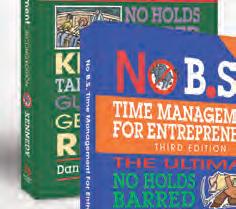


VETERAN INCENTIVE 50% off franchise fee
94 Children’s Lighthouse
Childcare
TOTAL UNITS
(Franchised / Co.-Owned) 68/0
STARTUP COST
$5.1M-$6.4M
FRANCHISE FEE
$85K
VETERAN INCENTIVE
$25,000 off franchise fee
95
Two Maids
Residential cleaning
TOTAL UNITS
(Franchised / Co.-Owned) 136/0
STARTUP COST
$93.4K-$149.9K
FRANCHISE FEE
$19.95K
VETERAN INCENTIVE 15% off initial franchise and territory fees
96
Interim HealthCare
Medical and nonmedical home care, medical staffing
TOTAL UNITS
(Franchised / Co.-Owned)
651/4
STARTUP COST
$125.5K-$199.5K
FRANCHISE FEE $50K
VETERAN INCENTIVE 10% off franchise fee
98
National Property Inspections
Home and commercial property inspections
TOTAL UNITS
(Franchised / Co.-Owned)
223/0
STARTUP COST
$40.6K-$49.4K
FRANCHISE FEE
$34.K
VETERAN INCENTIVE 20% off franchise fee
Mr. Electric Electrical services
TOTAL UNITS
(Franchised / Co.-Owned) 212/0
STARTUP COST
$139.9K-$288.5K
FRANCHISE FEE
$42.5K
VETERAN INCENTIVE 20% off minimum franchise fee
100 redbox+ Dumpsters
Construction dumpsters with attached portable restrooms
TOTAL UNITS
(Franchised / Co.-Owned)
270/0
STARTUP COST
$546.4K-$753.5K
FRANCHISE FEE
$59.5K
VETERAN INCENTIVE 20% off first-unit franchise fee
101
Homewatch CareGivers
Home care services
TOTAL UNITS
(Franchised / Co.-Owned) 222/0
STARTUP COST
$92.3K-$154K
FRANCHISE FEE
$50K
VETERAN INCENTIVE 30% off franchise fee
103
NerdsToGo
Technology sales, repair, and services
TOTAL UNITS (Franchised / Co.-Owned) 30/1
STARTUP COST
$133.3K-$181K
FRANCHISE FEE
$49.8K
VETERAN INCENTIVE 50% off franchise fee
104
CMIT Solutions Outsourced IT services
TOTAL UNITS (Franchised / Co.-Owned) 251/3
STARTUP COST
$101.95K-$154.95K
FRANCHISE FEE
$49.95K-$54.95K
VETERAN INCENTIVE 20% off franchise fee
105
Mr. Rooter Plumbing, drain, and sewer cleaning
TOTAL UNITS (Franchised / Co.-Owned) 244/3
STARTUP COST
$83.1K-$225.4K
FRANCHISE FEE
$42.5K
VETERAN INCENTIVE 20% off minimum franchise fee
106
Bin There Dump That Residential-friendly dumpster rentals
TOTAL UNITS (Franchised / Co.-Owned) 246/0
STARTUP COST
$116.2K-$235.4K
FRANCHISE FEE
$29K-$55K
VETERAN INCENTIVE
Royalty fee on first truck waived for first year
108 Rytech Restoration Water, mold, fire, and smoke restoration; Covid-19 sanitation
TOTAL UNITS (Franchised / Co.-Owned) 87/3
STARTUP COST
$141.4K-$213K FRANCHISE FEE
$39.9K
VETERAN INCENTIVE $10,000 off franchise fee
109 Property Management Inc. Commercial, residential, association, and shortterm rental property management
TOTAL UNITS (Franchised / Co.-Owned) 413/2
STARTUP COST
$70.1K-$148K
FRANCHISE FEE
$59.9K-$85K VETERAN INCENTIVE 10% off standard franchise fee ($59,900)
110 Mr. Handyman Residential and commercial repair, maintenance, and improvement services
TOTAL UNITS (Franchised / Co.-Owned) 334/0
STARTUP COST
$121K-$157.6K FRANCHISE FEE $63K
VETERAN INCENTIVE 20% off minimum franchise fee
You’ve
$36.4K-$107.5K
$2,500
116
Accelerated Waste Solutions
TOTAL
$88.99K-$325K
$59.9K-$79.9K VETERAN INCENTIVE
$7,000 off franchise fee
117
Scoop Soldiers Pet waste removal
TOTAL UNITS (Franchised / Co.-Owned) 46/16
STARTUP COST
$486.9K-$1.2M
$323.8K-$578.2K
114
$327.4K-$687K
$68.3K-$118.3K FRANCHISE FEE
$39.5K
VETERAN INCENTIVE
$10,000 off franchise fee
118
Two Men and a Truck Moving, storage, and junk removal services
TOTAL UNITS (Franchised / Co.-Owned) 323/3
STARTUP COST
$105.5K-$446.6K
FRANCHISE FEE
$30K-$85K
VETERAN INCENTIVE 10% off franchise fee
119
Burn Boot Camp Gyms
TOTAL UNITS (Franchised / Co.-Owned) 330/9
STARTUP COST
$239.2K-$562.97K
FRANCHISE FEE
$60K
VETERAN INCENTIVE 15% off franchise fee
120
Patrice & Associates Hospitality, executive search, retail, and sales recruiting
TOTAL UNITS (Franchised / Co.-Owned) 199/0
STARTUP COST
$90.1K-$92.8K FRANCHISE FEE $65K
VETERAN INCENTIVE 10% off franchise fee







U.S. POSTAL SERVICE STATEMENT OF OWNERSHIP, MANAGEMENT, AND CIRCULATION REQUIRED BY 39 U.S.C. 3685
1) Title of Publication: Entrepreneur®. 2) Publication No. (ISSN): 0163-3341. 3) Date of Filing 10/1/2023. 4) Frequency of Issue: Bi-Monthly. 5) No. of Issues Published Annually: 6. 6) Annual Subscription Price: $19.97. 7) Complete Mailing Address of Known Office of Publication: Entrepreneur Media, Inc., 2 Executive Circle, Suite 150, Irvine, CA 92614. 8) Complete Mailing Address of Headquarters of General Business Office of Publisher: Entrepreneur Media, Inc., 2 Executive Circle, Suite 150, CA 92614. 9) Full Names and Complete Mailing Addresses of Publisher, Editor, and Managing Editor. Publisher: James Clauss, 2 Executive Circle, Suite 150, Irvine, CA 92614. Editor in Chief: Jason Feifer, 2 Executive Circle, Suite 150, Irvine, CA 92614. Managing Editor: Monica Im, 2 Executive Circle, Suite 150, Irvine, CA 92614. 10) Owner: Entrepreneur Media, Inc., 2 Executive Circle, Suite 150, Irvine, CA 92614. 11) Known Bondholders, Mortgagees, and Other Security Holders Owning or Holding 1 Percent or More of Total Amount of Bonds, Mortgages or Other Securities: None. 12) Tax Status: Not Applicable. 13) Publication Title: Entrepreneur®. 14) Issue Date for Circulation Data: July/Aug 2023. 15) Extent and Nature of Circulation (Average No. Copies Each Issue During Preceding 12 Months. No. Copies of Single Issue Published nearest to Filing Date); A. Total Number of Copies (Net Press Run): 374,108; 319,538; B. Paid Circulation: 1) Mailed Outside-County Paid Subscriptions Stated on PS Form 3541: 279,878; 235,368; 3) Paid Distribution Outside the Mails Including Sales Through Dealers and Carriers, Street Vendors, Counter Sales, and other Paid Distribution Outside USPS: 7,499; 7,500; C. Total Paid Distribution (Sum of 15B-1 and 15B-3): 287,377; 242,868; D. Free or Nominal Rate Distribution: 1) Free or Nominal Rate Outside-County Copies Included on PS Form 3541: 57,731; 48,550; E. Total Free or Nominal Rate Distribution: 57,731; 48,550; F. Total Distribution (Sum of 15C and 15E): 345,108; 291,418; G. Copies Not Distributed: 28,999; 28,120; H. Total (Sum of 15F and 15G): 374,108; 319,538; I. Percent Paid (15C/15F x 100): 83.3%; 83.3%. 16) A. Requested and Paid Electronic Copies: 73,109; 73,956; B. Total Requested and Paid Print Copies and Requested/Paid Electronic Copies (Line 15c): 360,486; 316,824; C. Total Requested Copy Distribution (Line 15F) and Requested/ Paid Electronic Copies: 418,217; 365,374; D. Percent Paid and/or Requested Circulation (Both print & Electronic Copies): 86.2%; 86.7%. 17) Publication of Statement of Ownership: If the publication is a general publication, publication of this statement is required. Will be printed in the November/December 2023 issue of this publication. 18) Signature and Title of Editor, Publisher, Business Manager, or Owner: I certify that all information furnished on this form is true and complete. I understand that anyone who furnishes false or misleading information on this form or who omits material or information requested on the form may be subject to criminal sanctions (including fines and imprisonment) and/or civil sanctions (including civil penalties). James Clauss, Publisher
121
The Entrepreneur’s Source
Franchise/business coaching and development
TOTAL UNITS
(Franchised / Co.-Owned)
173/0
STARTUP COST
$114.4K-$125.95K
FRANCHISE FEE
$75K
VETERAN INCENTIVE 15% off franchise fee
122
Superior Fence & Rail
Fence sales and installation
TOTAL UNITS
(Franchised / Co.-Owned)
235/2
STARTUP COST
$130.5K-$206.8K
FRANCHISE FEE
$59.5K
VETERAN INCENTIVE 15% off first-unit franchise fee
123
Oxi Fresh Carpet Cleaning
Carpet, upholstery, hardwood floor, tile, and grout cleaning; odor control; home disinfection
TOTAL UNITS
(Franchised / Co.-Owned)
476/13
STARTUP COST
$50.7K-$80.7K
FRANCHISE FEE
$44.9K
VETERAN INCENTIVE 10% off franchise fee
124
FocalPoint Business Coaching
Business coaching and consulting
TOTAL UNITS
(Franchised / Co.-Owned)
259/3
STARTUP COST
$78K-$132.1K
FRANCHISE FEE
$45K
VETERAN INCENTIVE
$4,500 off franchise fee
125
Mosquito Hunters Mosquito, tick, and flea control
TOTAL UNITS
(Franchised / Co.-Owned)
133/6
STARTUP COST
$99.8K-$116.8K
FRANCHISE FEE
$40K
VETERAN INCENTIVE
$10,000 off franchise fee
126
Ace Handyman Services
130
Office Pride
Commercial Cleaning Services
Commercial cleaning
TOTAL UNITS (Franchised / Co.-Owned) 148/2
STARTUP COST
$74.4K-$120.6K
FRANCHISE FEE
$39K
VETERAN INCENTIVE 25% off franchise fee
131
Residential and commercial repairs, restoration, and maintenance
TOTAL UNITS
(Franchised / Co.-Owned)
352/7
STARTUP COST
$127.6K-$204.1K
FRANCHISE FEE
$70K
VETERAN INCENTIVE
$7,000 off franchise fee
127
Real Property Management
Property management
TOTAL UNITS
(Franchised / Co.-Owned)
438/0
STARTUP COST
$91.7K-$266.2K
FRANCHISE FEE
$59.9K
VETERAN INCENTIVE 15% off franchise fee
128
FirstLight Home Care
Nonmedical home care
TOTAL UNITS
(Franchised / Co.-Owned) 197/0
STARTUP COST
$124.4K-$199.6K
FRANCHISE FEE
$50K
VETERAN INCENTIVE 15% off franchise fee
129
Grand Welcome
Vacation rental property management
TOTAL UNITS
(Franchised / Co.-Owned) 44/8
STARTUP COST
$37.9K-$169.8K
FRANCHISE FEE
$19K-$109K
VETERAN INCENTIVE 15% off first-unit franchise fee
Paris Baguette Bakery cafes
TOTAL UNITS (Franchised / Co.-Owned) 3,807/19
STARTUP COST
$652.6K-$1.8M FRANCHISE FEE $50K
VETERAN INCENTIVE 15% off franchise fee
132
Restoration 1 Water, fire, smoke, and mold restoration
TOTAL UNITS (Franchised / Co.-Owned) 296/0
STARTUP COST
$94.6K-$226.1K
FRANCHISE FEE
$59.9K-$64.3K
VETERAN INCENTIVE
$7,000 off franchise fee
133
BrightStar Care
Medical/nonmedical home care, medical staffing
TOTAL UNITS (Franchised / Co.-Owned) 344/29
STARTUP COST
$111.1K-$195.9K
FRANCHISE FEE
$50K
VETERAN INCENTIVE
$5,000 off first-unit franchise fee
134
Pizza Factory Pizza, pasta, wings, sandwiches, salads
TOTAL UNITS
(Franchised / Co.-Owned) 107/1
STARTUP COST
$279K-$630K
FRANCHISE FEE
$20K-$25K
VETERAN INCENTIVE 25% off franchise fee
135
Clozetivity Custom closet design and installation
TOTAL UNITS (Franchised / Co.-Owned) 42/0
STARTUP COST
$81.K-$157.5K
FRANCHISE FEE
$39K
VETERAN INCENTIVE 20% off franchise fee
136
Hommati 3D tours, aerial and interior videos, photography, augmented reality, and other services for real estate agents
TOTAL UNITS (Franchised / Co.-Owned) 146/4
STARTUP COST
$64.97K-$79.5K
FRANCHISE FEE
$39.9K VETERAN INCENTIVE
$3,000 off franchise fee
137
Mosquito Joe Outdoor pest control
TOTAL UNITS (Franchised / Co.-Owned) 419/2
STARTUP COST
$112.8K-$153.4K
FRANCHISE FEE
$42.5K VETERAN INCENTIVE $12,750 off franchise fee
138 The Camp Transformation Center Fitness/weight-loss services
TOTAL UNITS (Franchised / Co.-Owned) 103/3
$161.9K-$317.1K
$137.9K-$302.9K
143
Aussie
$133.7K-$191.7K
$517.1K-$673.8K
$180.4K-$203.2K
FRANCHISE FEE
$19.95K
VETERAN INCENTIVE 15% off initial franchise and territory fees
144 Rainbow Restoration Restoration and remediation
TOTAL UNITS (Franchised / Co.-Owned) 369/0
STARTUP COST
$169.3K-$325.9K
FRANCHISE FEE
$40K
VETERAN INCENTIVE 20% off minimum franchise fee
145
Five Star Painting Residential and commercial painting
TOTAL UNITS (Franchised / Co.-Owned) 246/0
STARTUP COST
$77.8K-$184.8K
FRANCHISE FEE
$45K
VETERAN INCENTIVE 20% off minimum franchise fee
146
AdvantaClean Mold remediation and indoor air quality services
TOTAL UNITS (Franchised / Co.-Owned) 132/0
STARTUP COST
$115.98K-$196.5K
FRANCHISE FEE
$5K
VETERAN INCENTIVE 15% off initial franchise and territory fees
147
Window Genie
Residential window cleaning, window tinting, pressure washing
TOTAL UNITS (Franchised / Co.-Owned) 115/0
STARTUP COST
$140.7K-$237.1K
FRANCHISE FEE
$62.5K-$75.6K
VETERAN INCENTIVE Expanded territory (6,250 additional households) 148
TOTAL UNITS (Franchised / Co.-Owned) 118/10
STARTUP COST
$310.5K-$562.5K
FRANCHISE FEE
$44.5K
VETERAN INCENTIVE
$5,000 off franchise fee
149 School of Rock Music education TOTAL UNITS (Franchised / Co.-Owned) 292/46
$441K-$593.9K FRANCHISE FEE $49.9K
VETERAN INCENTIVE
$5,000 off franchise fee 150
Inspections
inspections and related services TOTAL UNITS (Franchised / Co.-Owned) 194/0
STARTUP COST
$58.3K-$92.2K
FRANCHISE FEE
$42.5K
VETERAN INCENTIVE
$6,000 off franchise fee


One of these opportunities could mark the turning point to owning a business of your own, realizing your personal dreams and securing true financial independence. So go ahead, make your first move by considerw ing all that they have to offer in this Opportunity Spotlight. Then make your first call.
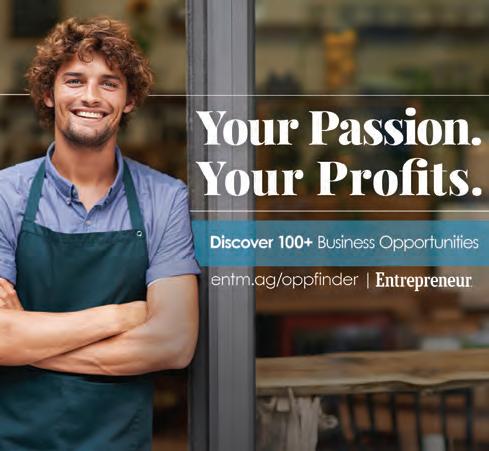






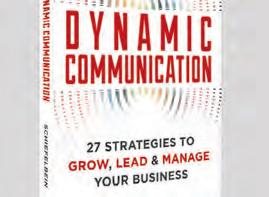



by Sally Joy Wolf, well-being advisor and advocate
My team was two weeks away from hosting a big event. There was a lot left to do. But my boss, Lisa, had just learned of a more imminent big event: a midday Mets game, where one pitcher had the rare chance to win his 20th game.
“We have to go,” she said.
I was skeptical. It hardly felt like an ideal time for an afternoon adventure! But Lisa insisted that we could tackle the work later, because this Mets game would only happen once. She got tickets for herself, me, and a junior team member. When that pitcher secured his win, the three of us were there. And weeks later, when we hosted our successful company event, all was well—with nothing sacrificed from our outing.
This experience underscored a lesson I’d learn repeatedly from Lisa: Work benefits from time away from work. And team outings—particularly ones that remove hierarchy—are underrated ways to bond.
Three years after that game, Lisa’s lesson would extend much further: Not only does work benefit from time away from work, but people benefit from the bonds that go beyond work. In 2015, I was diagnosed with cancer. The timing was especially unfortunate because I’d recently resigned from our company to pursue an entrepreneurial venture. But as soon as I told Lisa my biopsy results, she reversed my resignation to give me a paid medical leave, even though it meant she could not fill my headcount. She also gave me the names of both surgeons I consulted, one of whom I ultimately hired.
“All of your executive skills will come to bear now,” she told me the morning I was diagnosed. Again, she saw that thread of connection: Our careers and personal lives complement each other.
After completing my treatment, at a team lunch the following year, Lisa toasted my health and bright future. Then she gifted me a circular gold and diamond necklace as a symbol of the light she saw in me. Three weeks later, she herself received a devastating pancreatic cancer diagnosis—and 16 months later, the same week I learned that my own cancer had returned, Lisa passed away.
Five years later, I run a well-being company that empowers executives and their teams to flourish, and I regularly think of Lisa and pay her lessons forward. She is present in how I value play alongside work; in how I include others regardless of title or hierarchy; and most of all, in how I have leaned into the work of patient advocacy and become a champion for health equity. And as I do, every morning, I put on the necklace Lisa gifted me. Whatever awaits me that day, she stays close to my heart (literally), there with me to celebrate every win.
WHAT INSPIRES YOU?

Tell us about a story, person, object, or something else that pushes you forward, and we may include it in a future issue. And we may make you photograph it, too. Email INSPIRE@ENTREPRENEUR.COM with the subject line “WHAT INSPIRES ME.”























“We love that you can successfully facilitate a franchise with a staff of fewer than 10.”
Anna & Mike Dey Franchisees
Top Store Average Contribution*








* This information reflects the Average Revenue and Average Contribution of The Vitamin Shoppe company-owned stores with a Contribution of $300,000 or more which were open for more than a year as of fiscal year-end 2022 and were operating in at least 3,000 sq ft of space. Of these 118 stores, 49
Revenue, and 42 attained or surpassed the Average Contribution
and Total Expenses. We refer you to Item 19 of our
THE

Dell Technologies and Intel are supporting scientists as they tackle one of the biggest challenges in conservation—protecting the coral reef. We are also helping small businesses everywhere manage their challenges, big and small. With the power to collect critical data, reduce IT complexities and keep systems secure, technology is helping businesses protect many environments. See what we can do for yours.

